Publications
2025

Jalali, Mohammad S.; Hasgül, Zeynep
Proposed Cuts to the National Institutes of Health: A Systems Analysis of Tradeoffs Working paper Forthcoming
Forthcoming.
Abstract | Links | BibTeX | Tags: Simulation modeling
@workingpaper{nokey,
title = {Proposed Cuts to the National Institutes of Health: A Systems Analysis of Tradeoffs},
author = {Mohammad S. Jalali and Zeynep Hasgül},
url = {https://mj-lab.mgh.harvard.edu/wp-content/uploads/2025/03/NIH-budget-cut-modeling_preprint.pdf},
year = {2025},
date = {2025-03-05},
urldate = {2025-03-05},
abstract = {Importance: Proposed National Institutes of Health (NIH) funding cuts under the second Trump administration have raised concerns about their implications. As a key sponsor of foundational research and workforce training, NIH plays a vital role in biomedical innovation. Understanding the potential effects of these cuts is critical for policymakers.
Objective: To examine how NIH budget cuts interact with broader economic and biomedical research systems, identifying potential tradeoffs.
Design, Setting, and Participants: This study applies a qualitative systems modeling approach, using causal loop diagrams to examine interconnected effects that result in feedback structures. Key variables and causal relationships were extracted from studies and reports. Having fiscal deficit management theories at the core, the model incorporates evidence from innovation economics, organizational sciences, and science and technology policy through a structured literature synthesis.
Main Outcomes and Measures: We identify feedback loops illustrating the broader impacts of NIH budget cuts on biomedical innovation, scientific workforce capacity, and healthcare costs.
Results: The analysis highlights four cycles that may amplify the effects of NIH budget cuts and potentially offset the intended fiscal savings. First, a reduction in fundamental research—which accumulates to drive discoveries—could slow future innovations. Second, the erosion of human capital due to fewer NIH-funded training opportunities may shrink the future biomedical workforce. Third, healthcare expenditures could rise as greater reliance on private-sector R&D increases the costs of medical innovations. Finally, decreased investment in public health and translational research may lead to missed opportunities for disease prevention, further increasing healthcare expenditures.
Conclusions and Relevance: NIH budget reductions may have far-reaching implications for scientific progress, the biomedical innovation environment, and healthcare costs. Beyond immediate budgetary impacts, systemic interactions shaping long-term biomedical research and public health must be considered in funding policies. },
keywords = {Simulation modeling},
pubstate = {forthcoming},
tppubtype = {workingpaper}
}
Objective: To examine how NIH budget cuts interact with broader economic and biomedical research systems, identifying potential tradeoffs.
Design, Setting, and Participants: This study applies a qualitative systems modeling approach, using causal loop diagrams to examine interconnected effects that result in feedback structures. Key variables and causal relationships were extracted from studies and reports. Having fiscal deficit management theories at the core, the model incorporates evidence from innovation economics, organizational sciences, and science and technology policy through a structured literature synthesis.
Main Outcomes and Measures: We identify feedback loops illustrating the broader impacts of NIH budget cuts on biomedical innovation, scientific workforce capacity, and healthcare costs.
Results: The analysis highlights four cycles that may amplify the effects of NIH budget cuts and potentially offset the intended fiscal savings. First, a reduction in fundamental research—which accumulates to drive discoveries—could slow future innovations. Second, the erosion of human capital due to fewer NIH-funded training opportunities may shrink the future biomedical workforce. Third, healthcare expenditures could rise as greater reliance on private-sector R&D increases the costs of medical innovations. Finally, decreased investment in public health and translational research may lead to missed opportunities for disease prevention, further increasing healthcare expenditures.
Conclusions and Relevance: NIH budget reductions may have far-reaching implications for scientific progress, the biomedical innovation environment, and healthcare costs. Beyond immediate budgetary impacts, systemic interactions shaping long-term biomedical research and public health must be considered in funding policies.
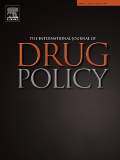
Hasgul, Zeynep; Deutsch, Arielle R.; Jalali, Mohammad S.; Stringfellow, Erin J.
Stimulant-involved overdose deaths: Constructing dynamic hypotheses Journal Article
In: International Journal of Drug Policy, vol. 136, pp. 104702, 2025.
Abstract | Links | BibTeX | Tags: Methods, Simulation modeling, Substance use
@article{Hasgul2025,
title = {Stimulant-involved overdose deaths: Constructing dynamic hypotheses},
author = {Zeynep Hasgul and Arielle R. Deutsch and Mohammad S. Jalali and Erin J. Stringfellow},
url = {https://mj-lab.mgh.harvard.edu/wp-content/uploads/2025/01/Hasgul_stimulant_overdose_2025.pdf
https://mj-lab.mgh.harvard.edu/wp-content/uploads/2025/03/Stimulant-Involved-ODs.pdf
},
year = {2025},
date = {2025-01-27},
urldate = {2025-01-27},
journal = {International Journal of Drug Policy},
volume = {136},
pages = {104702},
abstract = {The overdose epidemic in the United States is evolving, with a rise in stimulant (cocaine and/or methamphetamine)-only and opioid and stimulant-involved overdose deaths for reasons that remain unclear. We conducted interviews and group model building workshops in Massachusetts and South Dakota. Building on these data and extant research, we identified six dynamic hypotheses, explaining changes in stimulant-involved overdose trends, visualized using causal loop diagrams. For stimulant- and opioid-involved overdose deaths, three dynamic hypotheses emerged: (1) accidental exposure to fentanyl from stimulants; (2) primary stimulant users increasingly using opioids, often with resignation; (3) primary opioid (especially fentanyl) users increasingly using stimulants to balance the sedating effect of fentanyl. For stimulant-only overdose deaths, three additional dynamic hypotheses emerged: (1) disbelief that death could occur from stimulants alone, and doubt in testing capabilities to detect fentanyl; (2) the stimulant supply has changed, leading to higher unpredictability and thus higher overdose risk; and (3) long-term stimulant use contributing to deteriorating health and increasing overdose risk. These hypotheses likely each explain a portion of the recent trends in stimulant-involved overdoses. However, confusion and uncertainty around the drug supply emerged as a central theme, underscoring the chaotic and unpredictable nature of the stimulant market. Our findings indicate the need for research to develop targeted public health interventions, including analyzing the extent of the effect of contamination on overdoses, reducing confusion about the stimulant supply, and examining historical stimulant use trends.},
keywords = {Methods, Simulation modeling, Substance use},
pubstate = {published},
tppubtype = {article}
}
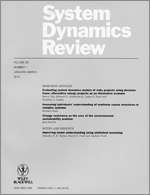
Rahmandad, Hazhir; Akhavan, Ali; Jalali, Mohammad S.
Incorporating Deep Learning Into System Dynamics: Amortized Bayesian Inference for Scalable Likelihood‐Free Parameter Estimation Journal Article
In: System Dynamics Review, vol. 41, iss. 1, 2025.
Abstract | Links | BibTeX | Tags: Artificial intelligence, Methods
@article{Rahmandad2025,
title = {Incorporating Deep Learning Into System Dynamics: Amortized Bayesian Inference for Scalable Likelihood‐Free Parameter Estimation},
author = {Hazhir Rahmandad and Ali Akhavan and Mohammad S. Jalali
},
url = {https://mj-lab.mgh.harvard.edu/wp-content/uploads/2025/01/Rahmandad_Amortized-Bayesian_2025.pdf},
year = {2025},
date = {2025-01-24},
urldate = {2025-01-24},
journal = {System Dynamics Review},
volume = {41},
issue = {1},
abstract = {Estimating parameters and their credible intervals for complex system dynamics models is challenging but critical to continuous model improvement and reliable communication with an increasing fraction of audiences. The purpose of this study is to integrate Amortized Bayesian Inference (ABI) methods with system dynamics. Utilizing Neural Posterior Estimation (NPE), we train neural networks using synthetic data (pairs of ground truth parameters and outcome time series) to estimate parameters of system dynamics models. We apply this method to two example models: a simple Random Walk model and a moderately complex SEIRb model. We show that the trained neural networks can output the posterior for parameters instantly given new unseen time series data. Our analysis highlights the potential of ABI to facilitate a principled, scalable, and likelihood-free inference workflow that enhance the integration of models of complex systems with data. Accompanying code streamlines application to diverse system dynamics models.},
keywords = {Artificial intelligence, Methods},
pubstate = {published},
tppubtype = {article}
}
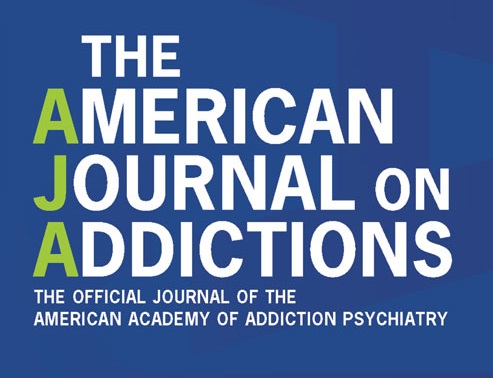
Dong, Huiru; Stringfellow, Erin J.; Jalali, Mohammad S.
State-level Racial and Ethnic Disparities in Buprenorphine Treatment Duration in the United States Journal Article
In: The American Journal on Addictions, 2025.
Abstract | Links | BibTeX | Tags: Disparity and equity, Substance use
@article{Dong2024b,
title = {State-level Racial and Ethnic Disparities in Buprenorphine Treatment Duration in the United States},
author = {Huiru Dong and Erin J. Stringfellow and Mohammad S. Jalali},
url = {https://mj-lab.mgh.harvard.edu/wp-content/uploads/2024/12/Dong_disparities_2024.pdf},
year = {2025},
date = {2025-01-04},
urldate = {2025-01-04},
journal = {The American Journal on Addictions},
abstract = {Background and objectives: National trends reveal a concerning escalation in racial and ethnic disparities in buprenorphine treatment duration for opioid use disorder. However, the extent of such disparities at the state level remains largely unexplored. This study aims to examine such disparities at the state level.
Methods: We analyzed 9,040,620 buprenorphine prescriptions dispensed between January 2011 and December 2020 from IQVIA Longitudinal Prescription data. The primary outcome was the difference in median treatment duration between White people and racial and ethnic minorities. We also included a second outcome measurement to quantify the difference in median treatment duration among episodes lasting ≥180 days. Using quantile regressions, we examined racial and ethnic disparities in treatment duration, adjusting for the patient's age, sex, payment type, and calendar year of the treatment episode. All analyses were conducted at the state level.
Results: Our study revealed substantial statewide variations in racial and ethnic disparities. Specifically, 21 states showed longer treatment durations for White people across all episodes, and eight states displayed similar trends among episodes lasting ≥180 days. Five states exhibited longer treatment durations for White people in both overall and long-term episodes. Fifteen states showed no racial and ethnic disparities.
Conclusion and scientific significance: These results are among the first to indicate substantial statewide variations in racial and ethnic disparities in buprenorphine treatment episode duration, providing a critical foundation for targeted interventions to enhance buprenorphine treatment, especially in states confronting such pronounced racial and ethnic disparities.},
keywords = {Disparity and equity, Substance use},
pubstate = {published},
tppubtype = {article}
}
Methods: We analyzed 9,040,620 buprenorphine prescriptions dispensed between January 2011 and December 2020 from IQVIA Longitudinal Prescription data. The primary outcome was the difference in median treatment duration between White people and racial and ethnic minorities. We also included a second outcome measurement to quantify the difference in median treatment duration among episodes lasting ≥180 days. Using quantile regressions, we examined racial and ethnic disparities in treatment duration, adjusting for the patient's age, sex, payment type, and calendar year of the treatment episode. All analyses were conducted at the state level.
Results: Our study revealed substantial statewide variations in racial and ethnic disparities. Specifically, 21 states showed longer treatment durations for White people across all episodes, and eight states displayed similar trends among episodes lasting ≥180 days. Five states exhibited longer treatment durations for White people in both overall and long-term episodes. Fifteen states showed no racial and ethnic disparities.
Conclusion and scientific significance: These results are among the first to indicate substantial statewide variations in racial and ethnic disparities in buprenorphine treatment episode duration, providing a critical foundation for targeted interventions to enhance buprenorphine treatment, especially in states confronting such pronounced racial and ethnic disparities.
2024
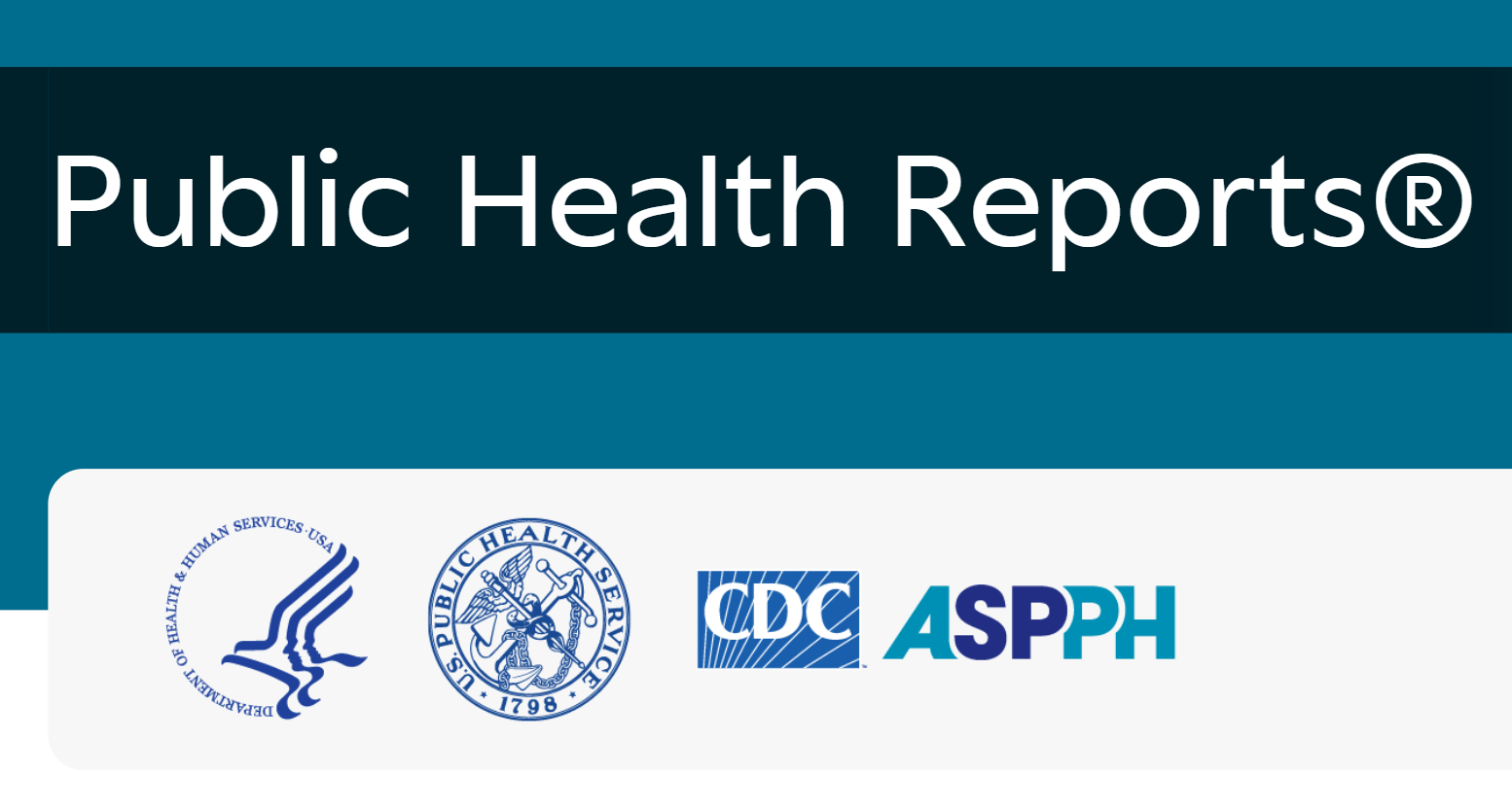
Lee, Hannah; Otero-Leon, Daniel; Dong, Huiru; Stringfellow, Erin J.; Jalali, Mohammad S.
Uncovering Patterns in Overdose Deaths: An Analysis of Spike Identification in Fatal Drug Overdose Data in Massachusetts, 2017-2023 Journal Article
In: Public Health Reports, 2024.
Abstract | Links | BibTeX | Tags:
@article{Lee2024,
title = {Uncovering Patterns in Overdose Deaths: An Analysis of Spike Identification in Fatal Drug Overdose Data in Massachusetts, 2017-2023},
author = {Hannah Lee and Daniel Otero-Leon and Huiru Dong and Erin J. Stringfellow and Mohammad S. Jalali},
url = {https://mj-lab.mgh.harvard.edu/wp-content/uploads/2024/12/lee-et-al-2024-spike-analysis.pdf},
year = {2024},
date = {2024-12-24},
journal = {Public Health Reports},
abstract = {Objectives:
Yearly rolling aggregate trends or rates are commonly used to analyze trends in overdose deaths, but focusing on long-term trends can obscure short-term fluctuations (eg, daily spikes). We analyzed data on spikes in daily fatal overdoses and how various spike detection thresholds influence the identification of spikes.
Materials and Methods:
We used a spike detection algorithm to identify spikes among 16 660 drug-related overdose deaths (from any drug) reported in Massachusetts’ vital statistics from 2017 through 2023. We adjusted the parameters of the algorithm to define spikes in 3 distinct scenarios: deaths exceeding 2 adjusted moving SDs above the 7-, 30-, and 90-day adjusted moving average.
Results:
Our results confirmed the on-the-ground observation that there are days when many more people die of overdoses than would be expected based on fluctuations due to differences among people alone. We identified spikes on 5.8% to 20.6% of the days across the 3 scenarios, annually, constituting 11.1% to 31.6% of all overdose deaths. The absolute difference in percentage points of days identified as spikes varied from 5.2 to 11.5 between 7- and 30-day lags and from 0 to 4.6 between 30- and 90-day lags across years. When compared with the adjusted moving average across the 3 scenarios, in 2017 an average of 3.9 to 5.5 additional deaths occurred on spike days, while in 2023 the range was 3.7 to 6.0.
Practice Implications:
A substantial percentage of deaths occurred annually on spike days, highlighting the need for effectively monitoring short-term overdose trends. Moreover, our study serves as a foundational analysis for future research into exogenous events that may contribute to spikes in overdose deaths, aiming to prevent future deaths.},
keywords = {},
pubstate = {published},
tppubtype = {article}
}
Yearly rolling aggregate trends or rates are commonly used to analyze trends in overdose deaths, but focusing on long-term trends can obscure short-term fluctuations (eg, daily spikes). We analyzed data on spikes in daily fatal overdoses and how various spike detection thresholds influence the identification of spikes.
Materials and Methods:
We used a spike detection algorithm to identify spikes among 16 660 drug-related overdose deaths (from any drug) reported in Massachusetts’ vital statistics from 2017 through 2023. We adjusted the parameters of the algorithm to define spikes in 3 distinct scenarios: deaths exceeding 2 adjusted moving SDs above the 7-, 30-, and 90-day adjusted moving average.
Results:
Our results confirmed the on-the-ground observation that there are days when many more people die of overdoses than would be expected based on fluctuations due to differences among people alone. We identified spikes on 5.8% to 20.6% of the days across the 3 scenarios, annually, constituting 11.1% to 31.6% of all overdose deaths. The absolute difference in percentage points of days identified as spikes varied from 5.2 to 11.5 between 7- and 30-day lags and from 0 to 4.6 between 30- and 90-day lags across years. When compared with the adjusted moving average across the 3 scenarios, in 2017 an average of 3.9 to 5.5 additional deaths occurred on spike days, while in 2023 the range was 3.7 to 6.0.
Practice Implications:
A substantial percentage of deaths occurred annually on spike days, highlighting the need for effectively monitoring short-term overdose trends. Moreover, our study serves as a foundational analysis for future research into exogenous events that may contribute to spikes in overdose deaths, aiming to prevent future deaths.
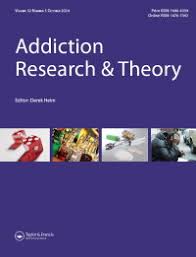
Herman, Tianna; Hasgul, Zeynep; Lim, Tse Yang; Jalali, Mohammad S.; Stringfellow, Erin J.
Dynamics of prescribing and accessing medications for opioid use disorder: a community-based systems analysis Journal Article
In: Addiction Research & Theory, 2024.
Abstract | Links | BibTeX | Tags: Participatory modeling, Substance use
@article{Herman2024,
title = {Dynamics of prescribing and accessing medications for opioid use disorder: a community-based systems analysis},
author = {Tianna Herman and Zeynep Hasgul and Tse Yang Lim and Mohammad S. Jalali and Erin J. Stringfellow},
url = {https://mj-lab.mgh.harvard.edu/wp-content/uploads/2024/11/Herman_2024.pdf},
year = {2024},
date = {2024-11-12},
journal = {Addiction Research & Theory},
abstract = {Background
Although medications for opioid use disorder (MOUD) are effective for treating opioid use disorder (OUD), persistent barriers still prevent patients from accessing this life-saving care. Policies to increase MOUD access have produced suboptimal results. This study presents a qualitative system dynamics model that elucidates the complexities of accessing and staying in MOUD treatment.
Methods
We utilized a community-based system dynamics approach to modeling the MOUD treatment system. We engaged a cohort of system experts/stakeholders, including individuals who had received MOUD, treatment providers, and policymakers, in interviews and group model building to develop and refine a simulation model. We then created a qualitative causal loop diagram based on insights gained while developing the simulation model and a review of interview transcripts.
Results
The causal loop diagram captures four key factors affecting treatment initiation, retention, and leaving: (1) fraught interactions between patients and healthcare providers; (2) stigma-driven regulation of MOUD creating a culture of fear and defensive medicine; (3) a punitive culture in clinics and opioid treatment programs offering MOUD; and (4) the internalization of the abstinence narrative contributing to premature termination of treatment.
Conclusions
Our analysis highlights how interdependent and non-linear feedback processes diminish or counteract the effectiveness and sustainability of MOUD policy interventions. Due to system memory and cultural resistance to change, even rolling back reactionary policies may do little to curb established behavioral patterns. In addition, conflicting and competing strategies among various actors within the system contribute to goal misalignment and a lack of standardization of care.},
keywords = {Participatory modeling, Substance use},
pubstate = {published},
tppubtype = {article}
}
Although medications for opioid use disorder (MOUD) are effective for treating opioid use disorder (OUD), persistent barriers still prevent patients from accessing this life-saving care. Policies to increase MOUD access have produced suboptimal results. This study presents a qualitative system dynamics model that elucidates the complexities of accessing and staying in MOUD treatment.
Methods
We utilized a community-based system dynamics approach to modeling the MOUD treatment system. We engaged a cohort of system experts/stakeholders, including individuals who had received MOUD, treatment providers, and policymakers, in interviews and group model building to develop and refine a simulation model. We then created a qualitative causal loop diagram based on insights gained while developing the simulation model and a review of interview transcripts.
Results
The causal loop diagram captures four key factors affecting treatment initiation, retention, and leaving: (1) fraught interactions between patients and healthcare providers; (2) stigma-driven regulation of MOUD creating a culture of fear and defensive medicine; (3) a punitive culture in clinics and opioid treatment programs offering MOUD; and (4) the internalization of the abstinence narrative contributing to premature termination of treatment.
Conclusions
Our analysis highlights how interdependent and non-linear feedback processes diminish or counteract the effectiveness and sustainability of MOUD policy interventions. Due to system memory and cultural resistance to change, even rolling back reactionary policies may do little to curb established behavioral patterns. In addition, conflicting and competing strategies among various actors within the system contribute to goal misalignment and a lack of standardization of care.

Lim, Tse Yang; Dong, Huiru; Stringfellow, Erin; Hasgul, Zeynep; Park, Ju; Glos, Lukas; Kazemi, Reza; Jalali, Mohammad S.
Temporal and spatial trends of fentanyl co-occurrence in the illicit drug supply in the United States: a serial cross-sectional analysis Journal Article
In: The Lancet Regional Health - Americas, vol. 39, pp. 100898, 2024.
Abstract | Links | BibTeX | Tags:
@article{nokey,
title = {Temporal and spatial trends of fentanyl co-occurrence in the illicit drug supply in the United States: a serial cross-sectional analysis},
author = {Tse Yang Lim and Huiru Dong and Erin Stringfellow and Zeynep Hasgul and Ju Park and Lukas Glos and Reza Kazemi and Mohammad S. Jalali},
url = {https://mj-lab.mgh.harvard.edu/wp-content/uploads/2024/10/Lim-temporal-2024.pdf},
year = {2024},
date = {2024-11-01},
urldate = {2024-11-01},
journal = {The Lancet Regional Health - Americas},
volume = {39},
pages = {100898},
abstract = {Background
Fentanyl and its analogs contribute substantially to drug overdose deaths in the United States. There is concern that people using drugs are being unknowingly exposed to fentanyl, increasing their risk of overdose death. This study examines temporal trends and spatial variations in the co-occurrence of fentanyl with other seized drugs.
Methods
We identified fentanyl co-occurrence (the proportion of samples of non-fentanyl substances that also contain fentanyl) among 9 substances or substance classes of interest: methamphetamine, cannabis, cocaine, heroin, club drugs, hallucinogens, and prescription opioids, stimulants, and benzodiazepines. We used serial cross-sectional data on drug reports across 50 states and the District of Columbia from the National Forensic Laboratory Information System, the largest available database on the U.S. illicit drug supply, from January 2013 to December 2023.
Findings
We analyzed data from 11,940,207 samples. Fentanyl co-occurrence with all examined substances increased monotonically over time (Mann-Kendall p < 0.0001). Nationally, fentanyl co-occurrence was highest among heroin samples (approx. 50%), but relatively low among methamphetamine (≤1%), cocaine (≤4%), and other drug samples. However, co-occurrence rates have grown to over 10% for cocaine and methamphetamine in several Northeast states in 2017–2023.
Interpretation
Fentanyl co-occurs most commonly with heroin, but its presence in stimulant supplies is increasing in some areas, where it may pose a disproportionately high risk of overdose.},
keywords = {},
pubstate = {published},
tppubtype = {article}
}
Fentanyl and its analogs contribute substantially to drug overdose deaths in the United States. There is concern that people using drugs are being unknowingly exposed to fentanyl, increasing their risk of overdose death. This study examines temporal trends and spatial variations in the co-occurrence of fentanyl with other seized drugs.
Methods
We identified fentanyl co-occurrence (the proportion of samples of non-fentanyl substances that also contain fentanyl) among 9 substances or substance classes of interest: methamphetamine, cannabis, cocaine, heroin, club drugs, hallucinogens, and prescription opioids, stimulants, and benzodiazepines. We used serial cross-sectional data on drug reports across 50 states and the District of Columbia from the National Forensic Laboratory Information System, the largest available database on the U.S. illicit drug supply, from January 2013 to December 2023.
Findings
We analyzed data from 11,940,207 samples. Fentanyl co-occurrence with all examined substances increased monotonically over time (Mann-Kendall p < 0.0001). Nationally, fentanyl co-occurrence was highest among heroin samples (approx. 50%), but relatively low among methamphetamine (≤1%), cocaine (≤4%), and other drug samples. However, co-occurrence rates have grown to over 10% for cocaine and methamphetamine in several Northeast states in 2017–2023.
Interpretation
Fentanyl co-occurs most commonly with heroin, but its presence in stimulant supplies is increasing in some areas, where it may pose a disproportionately high risk of overdose.

Hasgul, Zeynep; Spanjaart, Anne; Javed, Sumreen; Akhavan, Ali; Kersten, Marie José; Jalali, Mohammad S.
Health-related quality of life dynamics: modeling insights from immunotherapy Journal Article
In: Quality of Life Research, 2024.
Abstract | Links | BibTeX | Tags:
@article{Hasgul2024,
title = {Health-related quality of life dynamics: modeling insights from immunotherapy},
author = {Zeynep Hasgul and Anne Spanjaart and Sumreen Javed and Ali Akhavan and Marie José Kersten and Mohammad S. Jalali},
url = {https://mj-lab.mgh.harvard.edu/wp-content/uploads/2024/10/Hasgul_QoL_2024.pdf},
year = {2024},
date = {2024-10-30},
journal = {Quality of Life Research},
abstract = {Background
Understanding health-related quality of life (HRQoL) dynamics is essential for assessing and improving treatment experiences; however, clinical and observational studies struggle to capture their full complexity. We use simulation modeling and the case of Chimeric Antigen Receptor T-cell therapy—a type of cancer immunotherapy that can prolong survival, but carries life-threatening risks—to study HRQoL dynamics.
Methods
We developed an exploratory system dynamics model with mathematical equations and parameter values informed by literature and expert insights. We refined its feedback structure and evaluated its dynamic behavior through iterative interviews. Model simulated HRQoL from treatment approval through six months post-infusion. Two strategies—reducing the delay to infusion and enhancing social support—were incorporated into the model. To dynamically evaluate the effect of these strategies, we developed four metrics: post-treatment HRQoL decline, recovery time to pre-treatment HRQoL, post-treatment HRQoL peak, and durability of the peak.
Results
Model captures key interactions within HRQoL, providing a nuanced analysis of its continuous temporal dynamics, particularly physical well-being, psychological well-being, tumor burden, receipt and efficacy of treatment, side effects, and their management. Model analysis shows reducing infusion delays enhanced HRQoL across all four metrics. While enhanced social support improved the first three metrics for patients who received treatment, it did not change durability of the peak.
Conclusions
Simulation modeling can help explore the effects of strategies on HRQoL while also demonstrating the dynamic interactions between its key components, offering a powerful tool to investigate aspects of HRQoL that are difficult to assess in real-world settings.},
keywords = {},
pubstate = {published},
tppubtype = {article}
}
Understanding health-related quality of life (HRQoL) dynamics is essential for assessing and improving treatment experiences; however, clinical and observational studies struggle to capture their full complexity. We use simulation modeling and the case of Chimeric Antigen Receptor T-cell therapy—a type of cancer immunotherapy that can prolong survival, but carries life-threatening risks—to study HRQoL dynamics.
Methods
We developed an exploratory system dynamics model with mathematical equations and parameter values informed by literature and expert insights. We refined its feedback structure and evaluated its dynamic behavior through iterative interviews. Model simulated HRQoL from treatment approval through six months post-infusion. Two strategies—reducing the delay to infusion and enhancing social support—were incorporated into the model. To dynamically evaluate the effect of these strategies, we developed four metrics: post-treatment HRQoL decline, recovery time to pre-treatment HRQoL, post-treatment HRQoL peak, and durability of the peak.
Results
Model captures key interactions within HRQoL, providing a nuanced analysis of its continuous temporal dynamics, particularly physical well-being, psychological well-being, tumor burden, receipt and efficacy of treatment, side effects, and their management. Model analysis shows reducing infusion delays enhanced HRQoL across all four metrics. While enhanced social support improved the first three metrics for patients who received treatment, it did not change durability of the peak.
Conclusions
Simulation modeling can help explore the effects of strategies on HRQoL while also demonstrating the dynamic interactions between its key components, offering a powerful tool to investigate aspects of HRQoL that are difficult to assess in real-world settings.

la Vega-Taboada, Eduardo De; Guerra, Ana Maria; Rieder, Erica; Frazier, Stacy L.; Cruz, José Miguel; Jalali, Mohammad S.; Stephens, Dionne P.
Community Fútbol Coaches Working Together to Prevent Violence and Promote Positive Youth Development in Colombia Journal Article
In: Journal of Community & Applied Social Psychology, 2024.
Abstract | Links | BibTeX | Tags:
@article{laVega-Taboada2024,
title = {Community Fútbol Coaches Working Together to Prevent Violence and Promote Positive Youth Development in Colombia},
author = {Eduardo De la Vega-Taboada and Ana Maria Guerra and Erica Rieder and Stacy L. Frazier and José Miguel Cruz and Mohammad S. Jalali and Dionne P. Stephens},
url = {https://mj-lab.mgh.harvard.edu/wp-content/uploads/2024/10/Vega-Taboada-2024.pdf},
year = {2024},
date = {2024-10-28},
urldate = {2024-10-28},
journal = { Journal of Community & Applied Social Psychology},
abstract = {In resource-limited settings in Colombia, there is a lack of safe spaces for youth, with adolescent males being 10 times more susceptible to physical violence than females. Acknowledging the potential of community-led sports-based interventions, we examined how community fútbol (a.k.a. soccer or football) coaches in the Caribbean region of Colombia prevent youth violence exposure. By conducting in-depth qualitative interviews with 13 community coaches, we explore how fútbol, recognised as the world's most popular sport, serves as a space and tool for violence prevention. Our mixed methods study employs qualitative interviews and social network analysis (SNA). The findings reveal that the community's vulnerability, including familial violence and drug use, has detrimental effects on children. Community coaches, positioned as trusted figures, strive to positively influence youth by instilling essential life skills. However, they face challenges such as resource scarcity, limited institutional support and financial difficulties. The coaches express the need to balance adolescents' socioemotional development and the competitive nature of tournaments (olympism). Moreover, a disconnection between community coaches and NGOs utilising Fútbol for Development stems from differing aims. We argue that collaboration between these two groups holds ample opportunities for mutual benefit and enhanced youth impact.},
keywords = {},
pubstate = {published},
tppubtype = {article}
}

Dong, Huiru; Stringfellow, Erin J.; Russell, Alton; Jalali, Mohammad S.
Impacts of State Laws Mandating Co-Prescribing Naloxone with Opioids on Naloxone Prescription Dispensing in the U.S. Journal Article
In: Health Affairs, vol. 43, iss. 9, 2024.
Abstract | Links | BibTeX | Tags: Substance use
@article{Dong2024,
title = {Impacts of State Laws Mandating Co-Prescribing Naloxone with Opioids on Naloxone Prescription Dispensing in the U.S. },
author = {Huiru Dong and Erin J. Stringfellow and Alton Russell and Mohammad S. Jalali},
url = {https://mj-lab.mgh.harvard.edu/wp-content/uploads/2024/09/dong-et-al-2024-state-mandates-on-naloxone.pdf},
year = {2024},
date = {2024-09-03},
urldate = {2024-04-16},
journal = {Health Affairs},
volume = {43},
issue = {9},
abstract = {In the midst of the opioid crisis in the US, efforts to mitigate overdose risks have become paramount, leading some states to introduce mandates for coprescribing the life-saving overdose reversal drug naloxone. These mandates were designed to specifically address people receiving opioid analgesics who had an elevated risk for overdose. This included people receiving high opioid dosages, those concurrently using benzodiazepines, or those with a history of substance use disorder or overdose. Using a nationally representative, multipayer cohort of patients receiving prescription opioids, we investigated how naloxone codispensing rates changed at the state level from 2016 to 2021 among patients with an elevated risk for overdose. Then we used controlled interrupted time series analyses to assess mandates’ longitudinal impact on naloxone codispensing in ten states that implemented mandates. We observed an immediate and significant increase in the naloxone codispensing rates in eight states after the implementation of mandates. Nevertheless, in five of these states, the codispensing rates exhibited a subsequent downward trend after the initial increase. State mandates show potential for improving naloxone codispensing; however, mandates alone might not be adequate for sustained change. Further research is needed to identify strategies complementing and enhancing the impact of mandates in combating the overdose crisis.},
keywords = {Substance use},
pubstate = {published},
tppubtype = {article}
}

Lim, Tse Yang; Keyes, Katherine M.; Caulkinsd, Jonathan P.; Stringfellow, Erin J.; Cerdá, Magdalena; Jalali, Mohammad S.
Improving estimates of the prevalence of opioid use disorder in the United States: Revising Keyes et al. Journal Article
In: Journal of Addiction Medicine, 2024.
Abstract | Links | BibTeX | Tags: Methods, Substance use
@article{Lim2024,
title = {Improving estimates of the prevalence of opioid use disorder in the United States: Revising Keyes et al.},
author = {Tse Yang Lim and Katherine M. Keyes and Jonathan P. Caulkinsd and Erin J. Stringfellow and Magdalena Cerdá and Mohammad S. Jalali},
url = {https://mj-lab.mgh.harvard.edu/wp-content/uploads/2024/09/prevalence_of_oud.pdf},
year = {2024},
date = {2024-09-02},
urldate = {2024-09-02},
journal = {Journal of Addiction Medicine},
abstract = {Objectives
The United States faces an ongoing drug overdose crisis, but accurate information on the prevalence of opioid use disorder (OUD) remains limited. A recent analysis by Keyes et al used a multiplier approach with drug poisoning mortality data to estimate OUD prevalence. Although insightful, this approach made stringent and partly inconsistent assumptions in interpreting mortality data, particularly synthetic opioid (SO)–involved and non–opioid-involved mortality. We revise that approach and resulting estimates to resolve inconsistencies and examine several alternative assumptions.
Methods
We examine 4 adjustments to Keyes and colleagues’ estimation approach: (A) revising how the equations account for SO effects on mortality, (B) incorporating fentanyl prevalence data to inform estimates of SO lethality, (C) using opioid-involved drug poisoning data to estimate a plausible range for OUD prevalence, and (D) adjusting mortality data to account for underreporting of opioid involvement.
Results
Revising the estimation equation and SO lethality effect (adj. A and B) while using Keyes and colleagues’ original assumption that people with OUD account for all fatal drug poisonings yields slightly higher estimates, with OUD population reaching 9.3 million in 2016 before declining to 7.6 million by 2019. Using only opioid-involved drug poisoning data (adj. C and D) provides a lower range, peaking at 6.4 million in 2014–2015 and declining to 3.8 million in 2019.
Conclusions
The revised estimation equation presented is feasible and addresses limitations of the earlier method and hence should be used in future estimations. Alternative assumptions around drug poisoning data can also provide a plausible range of estimates for OUD population.},
keywords = {Methods, Substance use},
pubstate = {published},
tppubtype = {article}
}
The United States faces an ongoing drug overdose crisis, but accurate information on the prevalence of opioid use disorder (OUD) remains limited. A recent analysis by Keyes et al used a multiplier approach with drug poisoning mortality data to estimate OUD prevalence. Although insightful, this approach made stringent and partly inconsistent assumptions in interpreting mortality data, particularly synthetic opioid (SO)–involved and non–opioid-involved mortality. We revise that approach and resulting estimates to resolve inconsistencies and examine several alternative assumptions.
Methods
We examine 4 adjustments to Keyes and colleagues’ estimation approach: (A) revising how the equations account for SO effects on mortality, (B) incorporating fentanyl prevalence data to inform estimates of SO lethality, (C) using opioid-involved drug poisoning data to estimate a plausible range for OUD prevalence, and (D) adjusting mortality data to account for underreporting of opioid involvement.
Results
Revising the estimation equation and SO lethality effect (adj. A and B) while using Keyes and colleagues’ original assumption that people with OUD account for all fatal drug poisonings yields slightly higher estimates, with OUD population reaching 9.3 million in 2016 before declining to 7.6 million by 2019. Using only opioid-involved drug poisoning data (adj. C and D) provides a lower range, peaking at 6.4 million in 2014–2015 and declining to 3.8 million in 2019.
Conclusions
The revised estimation equation presented is feasible and addresses limitations of the earlier method and hence should be used in future estimations. Alternative assumptions around drug poisoning data can also provide a plausible range of estimates for OUD population.
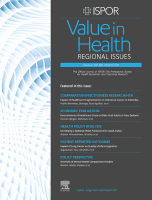
Wongseree, Peeradon; Hasgul, Zeynep; Jalali, Mohammad S.
Cost-Effectiveness of Increasing Access to Colorectal Cancer Diagnosis: Analysis From Thailand Journal Article
In: Value in Health Regional Issues, vol. 43, 2024.
Abstract | Links | BibTeX | Tags: Cancer, Simulation modeling
@article{nokey,
title = {Cost-Effectiveness of Increasing Access to Colorectal Cancer Diagnosis: Analysis From Thailand},
author = {Peeradon Wongseree and Zeynep Hasgul and Mohammad S. Jalali},
url = {https://mj-lab.mgh.harvard.edu/wp-content/uploads/2024/06/Wongseree_VIH_RI.pdf},
year = {2024},
date = {2024-06-01},
urldate = {2024-06-01},
journal = {Value in Health Regional Issues},
volume = {43},
abstract = {Objectives
The purpose of this study is to evaluate the cost-effectiveness of increasing access to colorectal cancer (CRC) diagnosis, considering resource limitations in Thailand.
Methods
We analyzed the cost-effectiveness of increasing access to fecal immunochemical test screening (strategy I), symptom evaluation (strategy II), and their combination through healthcare and societal perspectives using Colo-Sim, a simulation model of CRC care. We extended our analysis by adding a risk-stratification score (RS) to the strategies. We analyzed all strategies under the currently limited annual colonoscopy capacity and sufficient capacity. We estimated quality-adjusted life-years (QALYs) and costs over 2023 to 2047 and performed sensitivity analyses.
Results
Annual costs for CRC care will increase over 25 years in Thailand, resulting in a cumulative cost of 323B Thai baht (THB). Each strategy results in higher QALYs gained and additional costs. With the current colonoscopy capacity and willingness-to-pay threshold of 160 000 THB, strategy I with and without RS is not cost-effective. Strategy II + RS is the most cost-effective, resulting in 0.68 million QALYs gained with additional costs of 66B THB. Under sufficient colonoscopy capacity, all strategies are deemed cost-effective, with the combined approach (strategy I + II + RS) being the most favorable, achieving the highest QALYs (1.55 million) at an additional cost of 131 billion THB. This strategy also maintains the highest probability of being cost-effective at any willingness-to-pay threshold above 96 000 THB.
Conclusions
In Thailand, fecal immunochemical test screening, symptom evaluation, and RS use can achieve the highest QALYs; however, boosting colonoscopy capacity is essential for cost-effectiveness.},
keywords = {Cancer, Simulation modeling},
pubstate = {published},
tppubtype = {article}
}
The purpose of this study is to evaluate the cost-effectiveness of increasing access to colorectal cancer (CRC) diagnosis, considering resource limitations in Thailand.
Methods
We analyzed the cost-effectiveness of increasing access to fecal immunochemical test screening (strategy I), symptom evaluation (strategy II), and their combination through healthcare and societal perspectives using Colo-Sim, a simulation model of CRC care. We extended our analysis by adding a risk-stratification score (RS) to the strategies. We analyzed all strategies under the currently limited annual colonoscopy capacity and sufficient capacity. We estimated quality-adjusted life-years (QALYs) and costs over 2023 to 2047 and performed sensitivity analyses.
Results
Annual costs for CRC care will increase over 25 years in Thailand, resulting in a cumulative cost of 323B Thai baht (THB). Each strategy results in higher QALYs gained and additional costs. With the current colonoscopy capacity and willingness-to-pay threshold of 160 000 THB, strategy I with and without RS is not cost-effective. Strategy II + RS is the most cost-effective, resulting in 0.68 million QALYs gained with additional costs of 66B THB. Under sufficient colonoscopy capacity, all strategies are deemed cost-effective, with the combined approach (strategy I + II + RS) being the most favorable, achieving the highest QALYs (1.55 million) at an additional cost of 131 billion THB. This strategy also maintains the highest probability of being cost-effective at any willingness-to-pay threshold above 96 000 THB.
Conclusions
In Thailand, fecal immunochemical test screening, symptom evaluation, and RS use can achieve the highest QALYs; however, boosting colonoscopy capacity is essential for cost-effectiveness.
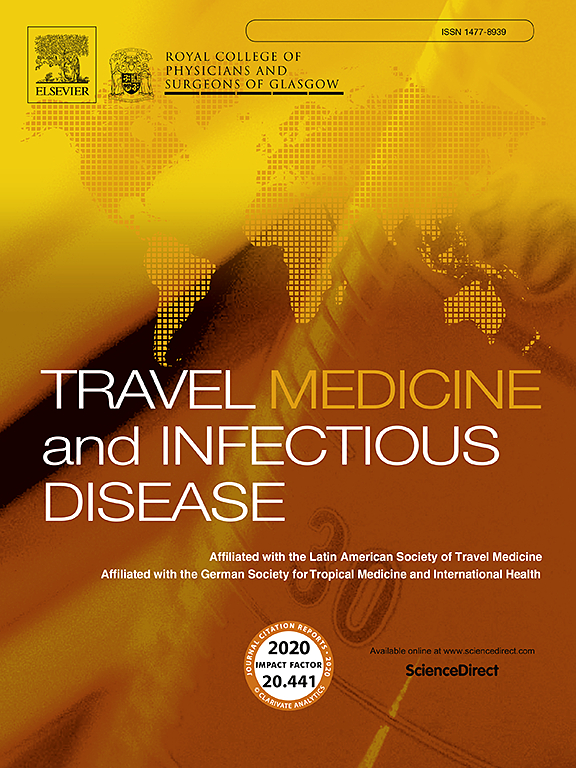
Koiso, Satoshi; Gulbas, Eren; Dike, Lotanna; Mulroy, Nora M.; Ciaranello, Andrea L.; Freedberg, Kenneth A.; Jalali, Mohammad S.; Walker, Allison T.; Ryan, Edward T.; LaRocque, Regina C.; Hyle, Emily P.
Modeling approaches to inform travel-related policies for COVID-19 containment: a scoping review and future directions Journal Article
In: Travel Medicine and Infectious Disease, 2024.
Abstract | Links | BibTeX | Tags: Infectious diseases, Simulation modeling
@article{Koiso2024,
title = {Modeling approaches to inform travel-related policies for COVID-19 containment: a scoping review and future directions},
author = {Satoshi Koiso and Eren Gulbas and Lotanna Dike and Nora M. Mulroy and Andrea L. Ciaranello and Kenneth A. Freedberg and Mohammad S. Jalali and Allison T. Walker and Edward T. Ryan and Regina C. LaRocque and Emily P. Hyle},
url = {https://mj-lab.mgh.harvard.edu/wp-content/uploads/2024/12/Koiso_travel_2024.pdf},
year = {2024},
date = {2024-06-01},
urldate = {2024-06-01},
journal = {Travel Medicine and Infectious Disease},
abstract = {Background
Travel-related strategies to reduce the spread of COVID-19 evolved rapidly in response to changes in the understanding of SARS-CoV-2 and newly available tools for prevention, diagnosis, and treatment. Modeling is an important methodology to investigate the range of outcomes that could occur from different disease containment strategies.
Methods
We examined 43 articles published from December 2019 through September 2022 that used modeling to evaluate travel-related COVID-19 containment strategies. We extracted and synthesized data regarding study objectives, methods, outcomes, populations, settings, strategies, and costs. We used a standardized approach to evaluate each analysis according to 26 criteria for modeling quality and rigor.
Results
The most frequent approaches included compartmental modeling to examine quarantine, isolation, or testing. Early in the pandemic, the goal was to prevent travel-related COVID-19 cases with a focus on individual-level outcomes and assessing strategies such as travel restrictions, quarantine without testing, social distancing, and on-arrival PCR testing. After the development of diagnostic tests and vaccines, modeling studies projected population-level outcomes and investigated these tools to limit COVID-19 spread. Very few published studies included rapid antigen screening strategies, costs, explicit model calibration, or critical evaluation of the modeling approaches.
Conclusion
Future modeling analyses should leverage open-source data, improve the transparency of modeling methods, incorporate newly available prevention, diagnostics, and treatments, and include costs and cost-effectiveness so that modeling analyses can be informative to address future SARS-CoV-2 variants of concern and other emerging infectious diseases (e.g., mpox and Ebola) for travel-related health policies.},
keywords = {Infectious diseases, Simulation modeling},
pubstate = {published},
tppubtype = {article}
}
Travel-related strategies to reduce the spread of COVID-19 evolved rapidly in response to changes in the understanding of SARS-CoV-2 and newly available tools for prevention, diagnosis, and treatment. Modeling is an important methodology to investigate the range of outcomes that could occur from different disease containment strategies.
Methods
We examined 43 articles published from December 2019 through September 2022 that used modeling to evaluate travel-related COVID-19 containment strategies. We extracted and synthesized data regarding study objectives, methods, outcomes, populations, settings, strategies, and costs. We used a standardized approach to evaluate each analysis according to 26 criteria for modeling quality and rigor.
Results
The most frequent approaches included compartmental modeling to examine quarantine, isolation, or testing. Early in the pandemic, the goal was to prevent travel-related COVID-19 cases with a focus on individual-level outcomes and assessing strategies such as travel restrictions, quarantine without testing, social distancing, and on-arrival PCR testing. After the development of diagnostic tests and vaccines, modeling studies projected population-level outcomes and investigated these tools to limit COVID-19 spread. Very few published studies included rapid antigen screening strategies, costs, explicit model calibration, or critical evaluation of the modeling approaches.
Conclusion
Future modeling analyses should leverage open-source data, improve the transparency of modeling methods, incorporate newly available prevention, diagnostics, and treatments, and include costs and cost-effectiveness so that modeling analyses can be informative to address future SARS-CoV-2 variants of concern and other emerging infectious diseases (e.g., mpox and Ebola) for travel-related health policies.

Mahmoudi, Hesam; Chang, Doris; Lee, Hannah; Ghaffarzadegan, Navid; Jalali, Mohammad S.
A Critical Assessment of Large Language Models for Systematic Reviews: Utilizing ChatGPT for Complex Data Extraction Working paper
2024.
BibTeX | Tags: Artificial intelligence
@workingpaper{Mahmoudi2024,
title = {A Critical Assessment of Large Language Models for Systematic Reviews: Utilizing ChatGPT for Complex Data Extraction},
author = {Hesam Mahmoudi and Doris Chang and Hannah Lee and Navid Ghaffarzadegan and Mohammad S. Jalali},
year = {2024},
date = {2024-04-15},
keywords = {Artificial intelligence},
pubstate = {published},
tppubtype = {workingpaper}
}

Sung, Meekang; Rees, Vaughan W; Lee, Hannah; Jalali, Mohammad S.
Assessment of Epidemiologic Data and Surveillance in South Korean Substance Use Research: Insights and Future Directions Journal Article
In: Journal of Preventive Medicine and Public Health, 2024.
Abstract | Links | BibTeX | Tags: Substance use
@article{Sung2024,
title = {Assessment of Epidemiologic Data and Surveillance in South Korean Substance Use Research: Insights and Future Directions},
author = {Meekang Sung and Vaughan W Rees and Hannah Lee and Mohammad S. Jalali},
url = {https://mj-lab.mgh.harvard.edu/wp-content/uploads/2024/12/Sung_Korea_2024.pdf},
year = {2024},
date = {2024-03-01},
urldate = {2024-03-01},
journal = {Journal of Preventive Medicine and Public Health},
abstract = {Objectives
Effective data collection and surveillance of epidemiological trends are essential in confronting the growing challenges associated with substance use (SU), especially in light of emerging trends and underreporting of cases. However, research and data are scarce regarding SU and substance use disorder (SUD) in Korea.
Methods
We conducted a scoping review to identify data sources and surveillance methods used in SU research in Korea up to December 2023. This review was complemented by semi-structured consultations with experts in this area in Korea, whose feedback led to revisions of previously identified data sources and assessments.
Results
Our review identified 32 publications conducting secondary analyses on existing data to examine the epidemiology of SU and SUD in Korea. Of these, 14 studies utilized clinical databases to explore the prescription patterns of addictive substances, particularly opioids. Eleven data sources showed promise for advancing SU research; however, they face substantial limitations, including a lack of available data, missing data, the absence of key variables, the exclusion of marginalized populations not captured within the clinical system, and complexities in matching individual-level data across time points and datasets.
Conclusions
Current surveillance methods for SU in Korea face considerable challenges in accessibility, usability, and standardization. Moreover, existing data repositories may fail to capture information on populations not served by clinical or judicial systems. To systematically improve surveillance approaches, it is necessary to develop a robust and nationally representative survey, refine the use of existing clinical data, and ensure the availability of data on treatment facilities.},
keywords = {Substance use},
pubstate = {published},
tppubtype = {article}
}
Effective data collection and surveillance of epidemiological trends are essential in confronting the growing challenges associated with substance use (SU), especially in light of emerging trends and underreporting of cases. However, research and data are scarce regarding SU and substance use disorder (SUD) in Korea.
Methods
We conducted a scoping review to identify data sources and surveillance methods used in SU research in Korea up to December 2023. This review was complemented by semi-structured consultations with experts in this area in Korea, whose feedback led to revisions of previously identified data sources and assessments.
Results
Our review identified 32 publications conducting secondary analyses on existing data to examine the epidemiology of SU and SUD in Korea. Of these, 14 studies utilized clinical databases to explore the prescription patterns of addictive substances, particularly opioids. Eleven data sources showed promise for advancing SU research; however, they face substantial limitations, including a lack of available data, missing data, the absence of key variables, the exclusion of marginalized populations not captured within the clinical system, and complexities in matching individual-level data across time points and datasets.
Conclusions
Current surveillance methods for SU in Korea face considerable challenges in accessibility, usability, and standardization. Moreover, existing data repositories may fail to capture information on populations not served by clinical or judicial systems. To systematically improve surveillance approaches, it is necessary to develop a robust and nationally representative survey, refine the use of existing clinical data, and ensure the availability of data on treatment facilities.

Deutsch, Arielle R.; Frerichs, Leah; Perry, Madeleine; Jalali, Mohammad S.
In: System Dynamics Review, 2024.
Abstract | Links | BibTeX | Tags: Disparity and equity
@article{nokey,
title = {Participatory modeling for high complexity, multi-system issues: challenges and recommendations for balancing qualitative understanding and quantitative questions},
author = {Arielle R. Deutsch and Leah Frerichs and Madeleine Perry and Mohammad S. Jalali},
url = {https://mj-lab.mgh.harvard.edu/wp-content/uploads/2024/02/Deutsch_et_al_2024_SDR.pdf},
year = {2024},
date = {2024-02-22},
journal = {System Dynamics Review},
abstract = {Community stakeholder participation can be incredibly valuable for the qualitative model development process. However, modelers often encounter challenges for participatory modeling projects focusing on high-complexity, synergistic interactions between multiple issues, systems, and granularity. The diverse stakeholder perspectives and volumes of information necessary for developing such models can yield qualitative models that are difficult to translate into quantitative simulation or clear insight for informed decision-making. There are few recommended best practices for developing high-complexity, participatory models. We use an ongoing project as a case study to highlight three practical challenges for tackling high-complexity, multi-system issues with system dynamics tools. These challenges include balanced and respectful stakeholder engagement, defining boundaries and levels of variable aggregation, and timing and processes for qualitative/quantitative model integration. Our five recommendations to address these challenges serve as a foundation for further research on methods for developing translatable qualitative multi-system models for informing actions for systemic change.},
keywords = {Disparity and equity},
pubstate = {published},
tppubtype = {article}
}

Dong, Huiru; Stringfellow, Erin J.; Bao, Yuhua; Jalali, Mohammad S.
Racial Disparities in Opioid Discontinuation: An Assessment of the CDC Clinical Practice Guideline Working paper
2024.
BibTeX | Tags: Disparity and equity, Substance use
@workingpaper{nokey,
title = {Racial Disparities in Opioid Discontinuation: An Assessment of the CDC Clinical Practice Guideline},
author = {Huiru Dong and Erin J. Stringfellow and Yuhua Bao and Mohammad S. Jalali},
year = {2024},
date = {2024-02-13},
keywords = {Disparity and equity, Substance use},
pubstate = {published},
tppubtype = {workingpaper}
}

Akhavan, Ali; Jalali, Mohammad S.
Generative AI and Simulation Modeling: How Should You (Not) Use Large Language Models Like ChatGPT Journal Article
In: System Dynamics Review, 2024.
Abstract | Links | BibTeX | Tags: Artificial intelligence, Simulation modeling
@article{nokey,
title = {Generative AI and Simulation Modeling: How Should You (Not) Use Large Language Models Like ChatGPT },
author = {Ali Akhavan and Mohammad S. Jalali },
url = {https://mj-lab.mgh.harvard.edu/wp-content/uploads/2024/07/Generative_AI_sim_mod.pdf},
year = {2024},
date = {2024-01-18},
urldate = {2024-01-18},
journal = {System Dynamics Review},
abstract = {Generative Artificial Intelligence (AI) tools, such as Large Language Models (LLMs) and chatbots like ChatGPT, hold promise for advancing simulation modeling in various domains. Despite their growing prominence and associated debates, there remains a gap in comprehending the potential of generative AI in this field and a lack of guidelines for its effective deployment. This paper endeavors to bridge these gaps. We discuss the applications of ChatGPT through an example of modeling COVID-19’s impact on economic growth in the United States. Although we utilize ChatGPT, our guidelines are generic and can be applied to a broader range of generative AI tools and platforms. Our work presents a systematic approach for integrating generative AI across the simulation research continuum, from problem articulation to insight derivation and documentation, independent of the specific simulation modeling method chosen. We emphasize that while these tools offer enhancements in refining ideas and expediting processes, they should complement rather than replace critical thinking inherent to research.},
keywords = {Artificial intelligence, Simulation modeling},
pubstate = {published},
tppubtype = {article}
}

Jalali, Mohammad S.; Akhavan, Ali
Integrating AI Language Models in Qualitative Research: Replicating Interview Data Analysis with ChatGPT Journal Article
In: System Dynamics Review, 2024.
Abstract | Links | BibTeX | Tags: Artificial intelligence
@article{nokey,
title = {Integrating AI Language Models in Qualitative Research: Replicating Interview Data Analysis with ChatGPT},
author = {Mohammad S. Jalali and Ali Akhavan},
url = {https://mj-lab.mgh.harvard.edu/wp-content/uploads/2024/07/Integrating_AI_language_models_qual_res.pdf},
year = {2024},
date = {2024-01-17},
urldate = {2024-01-17},
journal = {System Dynamics Review},
abstract = {The recent advent of artificial intelligence (AI) language tools like ChatGPT has opened up new opportunities in qualitative research. We revisited a previous project on obesity prevention interventions, where we developed a causal loop diagram through in-depth interview data analysis. Utilizing ChatGPT in our replication process, we compared its results against our original approach. We discuss that ChatGPT contributes to improved efficiency and unbiased data processing; however, it also reveals limitations in context understanding. Our findings suggest that AI language tools currently have great potential to serve as an augmentative tool rather than a replacement for the intricate analytical tasks performed by humans. With ongoing advancements, AI technologies may soon offer more substantial support in enhancing qualitative research capabilities, an area that deserves more investigation. },
keywords = {Artificial intelligence},
pubstate = {published},
tppubtype = {article}
}

Smith, Niamh; Georgiou, Michail; Jalali, Mohammad S.; Chastin, Sebastien
Planning, implementing and governing systems-based co-creation: the DISCOVER framework Journal Article
In: Health Research Policy and Systems, vol. 22, iss. 6, 2024.
Abstract | Links | BibTeX | Tags: Methods
@article{nokey,
title = {Planning, implementing and governing systems-based co-creation: the DISCOVER framework},
author = {Niamh Smith and Michail Georgiou and Mohammad S. Jalali and Sebastien Chastin },
url = {https://mj-lab.mgh.harvard.edu/wp-content/uploads/2024/02/Smith-2024.pdf},
year = {2024},
date = {2024-01-08},
urldate = {2024-01-08},
journal = {Health Research Policy and Systems},
volume = {22},
issue = {6},
abstract = {Increasingly, public health faces challenges requiring complex, multifaceted and multi-sectoral responses. This calls for systems-based approaches that facilitate the kind of collective and collaborative thinking and working required to address complexity. While the literature on systems thinking, system dynamics and the associated methodologies is extensive, there remains little clear guidance on how to plan, govern and implement participatory systems approaches within a co-creation process.},
keywords = {Methods},
pubstate = {published},
tppubtype = {article}
}
2023

Jalali, Mohammad S.; Mahmoudi, Hesam
In response to: “Never the strongest: reconciling the four schools of thought in system dynamics in the debate on quality” — beyond pragmatism Journal Article
In: System Dynamics Review, 2023.
Links | BibTeX | Tags: Methods, Simulation modeling
@article{nokey,
title = {In response to: “Never the strongest: reconciling the four schools of thought in system dynamics in the debate on quality” — beyond pragmatism},
author = {Mohammad S. Jalali and Hesam Mahmoudi},
url = {https://mj-lab.mgh.harvard.edu/wp-content/uploads/2023/12/Jalali_2023_In-response-to-Never-the-strongest.pdf},
year = {2023},
date = {2023-12-19},
urldate = {2023-12-19},
journal = {System Dynamics Review},
keywords = {Methods, Simulation modeling},
pubstate = {published},
tppubtype = {article}
}

Lim, Tse Yang; Xu, Ran; Ruktanonchai, Nick; Saucedo, Omar; Childs, Lauren M.; Jalali, Mohammad S.; Rahmandad, Hazhir; Ghaffarzadegan, Navid
Why Similar Policies Resulted In Different COVID-19 Outcomes: How Responsiveness And Culture Influenced Mortality Rates Journal Article
In: Health Affairs, vol. 42, iss. 12, 2023.
Abstract | Links | BibTeX | Tags: Infectious diseases, Simulation modeling
@article{nokey,
title = {Why Similar Policies Resulted In Different COVID-19 Outcomes: How Responsiveness And Culture Influenced Mortality Rates},
author = {Tse Yang Lim and Ran Xu and Nick Ruktanonchai and Omar Saucedo and Lauren M. Childs and Mohammad S. Jalali and Hazhir Rahmandad and Navid Ghaffarzadegan},
url = {https://mj-lab.mgh.harvard.edu/wp-content/uploads/2023/12/lim-et-al-2023-HealthAffairs.pdf},
year = {2023},
date = {2023-12-06},
urldate = {2023-12-06},
journal = {Health Affairs},
volume = {42},
issue = {12},
abstract = {In the first two years of the COVID-19 pandemic, per capita mortality varied by more than a hundredfold across countries, despite most implementing similar nonpharmaceutical interventions. Factors such as policy stringency, gross domestic product, and age distribution explain only a small fraction of mortality variation. To address this puzzle, we built on a previously validated pandemic model in which perceived risk altered societal responses affecting SARS-CoV-2 transmission. Using data from more than 100 countries, we found that a key factor explaining heterogeneous death rates was not the policy responses themselves but rather variation in responsiveness. Responsiveness measures how sensitive communities are to evolving mortality risks and how readily they adopt nonpharmaceutical interventions in response, to curb transmission. We further found that responsiveness correlated with two cultural constructs across countries: uncertainty avoidance and power distance. Our findings show that more responsive adoption of similar policies saves many lives, with important implications for the design and implementation of responses to future outbreaks.},
keywords = {Infectious diseases, Simulation modeling},
pubstate = {published},
tppubtype = {article}
}
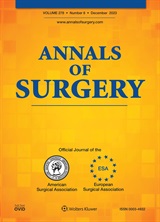
Collins, Reagan A; Herman, Tianna; Snyder, Rebecca A; Haines, Krista L; Stey, Anne; Arora, Tania K; Geervarghese, Sunil; Philips, Joseph D; Vicente, Diego; Griggs, Cornelia L; McElroy, Imani E; Wall, Anji E; Hughes, Tasha M; Sen, Srijan; Valinejad, Jaber; Alban, Andres; Swan, J. Shannon; Mercaldo, Nathaniel; Jalali, Mohammad S.; Chhatwal, Jagpreet; Gazelle, G. Scott; Rangel, Erika; Yang, Chi-Fu Jeffrey; Donelan, Karen; Gold, Jessica A; West, Colin P; Cunningham, Carrie
Unspoken Truths: Mental Health Among Academic Surgeons Journal Article
In: Annals of Surgery, 2023.
Abstract | Links | BibTeX | Tags: Mental health
@article{nokey,
title = {Unspoken Truths: Mental Health Among Academic Surgeons},
author = {Reagan A Collins and Tianna Herman and Rebecca A Snyder and Krista L Haines and Anne Stey and Tania K Arora and Sunil Geervarghese and Joseph D Philips and Diego Vicente and Cornelia L Griggs and Imani E McElroy and Anji E Wall and Tasha M Hughes and Srijan Sen and Jaber Valinejad and Andres Alban and J. Shannon Swan and Nathaniel Mercaldo and Mohammad S. Jalali and Jagpreet Chhatwal and G. Scott Gazelle and Erika Rangel and Chi-Fu Jeffrey Yang and Karen Donelan and Jessica A Gold and Colin P West and Carrie Cunningham},
url = {https://mj-lab.mgh.harvard.edu/wp-content/uploads/2023/12/unspoken_truths__2023.pdf},
year = {2023},
date = {2023-11-15},
urldate = {2023-11-15},
journal = {Annals of Surgery},
abstract = {Objective:
To characterize the current state of mental health within the surgical workforce in the United States (US).
Summary Background Data:
Mental illness and suicide is a growing concern in the medical community; however, the current state is largely unknown.
Methods:
Cross-sectional survey of the academic surgery community assessing mental health, medical error, and suicidal ideation. The odds of suicidal ideation adjusting for sex, prior mental health diagnosis, and validated scales screening for depression, anxiety, post-traumatic stress disorder (PTSD), and alcohol use disorder were assessed.
Results:
Of 622 participating medical students, trainees, and surgeons (estimated response rate=11.4-14.0%), 26.1% (141/539) reported a previous mental health diagnosis. 15.9% (83/523) of respondents screened positive for current depression, 18.4% (98/533) for anxiety, 11.0% (56/510) for alcohol use disorder, and 17.3% (36/208) for PTSD. Medical error was associated with depression (30.7% vs. 13.3%, P<0.001), anxiety (31.6% vs. 16.2%, P=0.001), PTSD (12.8% vs. 5.6%, P=0.018), and hazardous alcohol consumption (18.7% vs. 9.7%, P=0.022). 13.2% (73/551) of respondents reported suicidal ideation in the past year and 9.6% (51/533) in the past two weeks. On adjusted analysis, a previous history of a mental health disorder (aOR: 1.97, 95% CI: 1.04-3.65, P=0.033), and screening positive for depression (aOR: 4.30, 95% CI: 2.21-8.29, P<0.001) or PTSD (aOR: 3.93, 95% CI: 1.61-9.44, P=0.002) were associated with increased odds of suicidal ideation over the past 12 months.
Conclusions:
Nearly 1 in 7 respondents reported suicidal ideation in the past year. Mental illness and suicidal ideation are significant problems among the surgical workforce in the US.},
keywords = {Mental health},
pubstate = {published},
tppubtype = {article}
}
To characterize the current state of mental health within the surgical workforce in the United States (US).
Summary Background Data:
Mental illness and suicide is a growing concern in the medical community; however, the current state is largely unknown.
Methods:
Cross-sectional survey of the academic surgery community assessing mental health, medical error, and suicidal ideation. The odds of suicidal ideation adjusting for sex, prior mental health diagnosis, and validated scales screening for depression, anxiety, post-traumatic stress disorder (PTSD), and alcohol use disorder were assessed.
Results:
Of 622 participating medical students, trainees, and surgeons (estimated response rate=11.4-14.0%), 26.1% (141/539) reported a previous mental health diagnosis. 15.9% (83/523) of respondents screened positive for current depression, 18.4% (98/533) for anxiety, 11.0% (56/510) for alcohol use disorder, and 17.3% (36/208) for PTSD. Medical error was associated with depression (30.7% vs. 13.3%, P<0.001), anxiety (31.6% vs. 16.2%, P=0.001), PTSD (12.8% vs. 5.6%, P=0.018), and hazardous alcohol consumption (18.7% vs. 9.7%, P=0.022). 13.2% (73/551) of respondents reported suicidal ideation in the past year and 9.6% (51/533) in the past two weeks. On adjusted analysis, a previous history of a mental health disorder (aOR: 1.97, 95% CI: 1.04-3.65, P=0.033), and screening positive for depression (aOR: 4.30, 95% CI: 2.21-8.29, P<0.001) or PTSD (aOR: 3.93, 95% CI: 1.61-9.44, P=0.002) were associated with increased odds of suicidal ideation over the past 12 months.
Conclusions:
Nearly 1 in 7 respondents reported suicidal ideation in the past year. Mental illness and suicidal ideation are significant problems among the surgical workforce in the US.

Jalali, Mohammad S.; Beaulieu, Elizabeth
Strengthening a weak link: transparency of causal loop diagrams — current state and recommendations Journal Article
In: System Dynamics Review, 2023.
Abstract | Links | BibTeX | Tags: Methods, Simulation modeling
@article{nokey,
title = {Strengthening a weak link: transparency of causal loop diagrams — current state and recommendations},
author = {Mohammad S. Jalali and Elizabeth Beaulieu},
url = {https://mj-lab.mgh.harvard.edu/wp-content/uploads/2023/11/Transparency-of-CLDs.pdf},
year = {2023},
date = {2023-11-12},
urldate = {2023-11-12},
journal = {System Dynamics Review},
abstract = {Transparency is a critical aspect of systems science. While transparency of quantitative models has been assessed, transparency of their qualitative structures has been less scrutinized. We assess the transparency of causal loop diagrams (CLDs), a key qualitative visualization tool in system dynamics. We evaluate System Dynamics Review (SDR) publications and a sample of most-cited comparable articles in other journals. We assess the inclusion of a plain-language methods statement, overall discernibility of the methods, and identification of causal link sources. Reviewing 72 articles (SDR: 36; other journals: 36), only 44%, 38%, and 25% fully satisfy each criterion, respectively. SDR articles are characterized by higher transparency in the clarity of CLD development method and communication of causal link sources, yet the potential for enhancement is evident. We provide specific recommendations to increase the transparency of CLDs. Transparent reporting benefits original research authors, future expansion of CLDs, and the systems science community. © 2023 The Authors. System Dynamics Review published by John Wiley & Sons Ltd on behalf of System Dynamics Society.},
keywords = {Methods, Simulation modeling},
pubstate = {published},
tppubtype = {article}
}

Vivas-Valencia, Carolina; Dong, Huiru; Stringfellow, Erin J.; Russell, W. Alton; Morgan, Jake R.; Tadrous, Mina; Jalali, Mohammad S.
Factors Associated With Abrupt Discontinuation of Long-Term High-Dose Opioid Treatment Journal Article
In: JAMA Network Open, vol. 6, iss. 11, pp. e2341416, 2023.
Links | BibTeX | Tags: Substance use
@article{nokey,
title = {Factors Associated With Abrupt Discontinuation of Long-Term High-Dose Opioid Treatment},
author = {Carolina Vivas-Valencia and Huiru Dong and Erin J. Stringfellow and W. Alton Russell and Jake R. Morgan and Mina Tadrous and Mohammad S. Jalali},
url = {https://mj-lab.mgh.harvard.edu/wp-content/uploads/2023/11/vivasvalencia_2023.pdf},
year = {2023},
date = {2023-11-03},
journal = {JAMA Network Open},
volume = {6},
issue = {11},
pages = {e2341416},
keywords = {Substance use},
pubstate = {published},
tppubtype = {article}
}

Deutsch, Arielle R.; Frerichs, Leah; Hasgul, Zeynep; Murphey, Foster; Coleman, Addie K.; Bachand, Annie Y.; Bettelyoun, Arlana; Forney, Paul; Tyon, Gene; Jalali, Mohammad S.
How Funding Policy Maintains Structural Inequity Within Indigenous Community-Based Organizations Journal Article
In: Health Affairs, vol. 42, iss. 10, 2023.
Abstract | Links | BibTeX | Tags: Disparity and equity, Participatory modeling
@article{nokey,
title = {How Funding Policy Maintains Structural Inequity Within Indigenous Community-Based Organizations},
author = {Arielle R. Deutsch and Leah Frerichs and Zeynep Hasgul and Foster Murphey and Addie K. Coleman and Annie Y. Bachand and Arlana Bettelyoun and Paul Forney and Gene Tyon and Mohammad S. Jalali},
url = {https://mj-lab.mgh.harvard.edu/wp-content/uploads/2023/10/deutsch-et-al-2023.pdf},
year = {2023},
date = {2023-10-02},
urldate = {2023-10-02},
journal = {Health Affairs},
volume = {42},
issue = {10},
abstract = {Despite efforts to increase investment in Indigenous health and well-being in the United States, disparities remain. The way in which health-promoting organizations are funded is one key mechanism driving the systemic, long-term health disparities experienced by Indigenous people in the US. Using Indigenous-led community-based organizations (ICBOs) that provide psychosocial care as a case study, we highlight multiple ways in which policies that regulate the external funding that ICBOs depend on must change to promote equity and allow the organizations to flourish and address unmet psychosocial needs for Indigenous community members. We use a system dynamics approach to discuss how “capability traps” arise from a misfit between external funding regulations and organizations’ needs for sustainability and effective care provision. We provide suggestions for reforming funding policies that focus on improving ICBO sustainability.},
keywords = {Disparity and equity, Participatory modeling},
pubstate = {published},
tppubtype = {article}
}
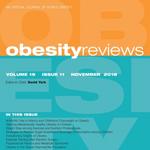
Aguiar, Anaely; Önal, Furkan; Romanenko, Eduard; Hendricks, Gaironeesa; Fismen, Anne-Siri; Nwosu, Emmanuel; Savona, Natalie; Harbron, Janetta; Blanchard, Laurence; Herstad, Sondre; Knai, Cécile; Samdal, Oddrun; Rutter, Harry; Lien, Nanna; Jalali, Mohammad S.; Kopainsky, Birgit
In: Obesity Reviews, pp. e13628, 2023.
Abstract | Links | BibTeX | Tags: Obesity, Simulation modeling
@article{nokey,
title = {Understanding the dynamics emerging from the interplay among poor mental wellbeing, energy balance-related behaviors, and obesity prevalence in adolescents: A simulation-based study},
author = {Anaely Aguiar and Furkan Önal and Eduard Romanenko and Gaironeesa Hendricks and Anne-Siri Fismen and Emmanuel Nwosu and Natalie Savona and Janetta Harbron and Laurence Blanchard and Sondre Herstad and Cécile Knai and Oddrun Samdal and Harry Rutter and Nanna Lien and Mohammad S. Jalali and Birgit Kopainsky},
url = {https://mj-lab.mgh.harvard.edu/wp-content/uploads/2023/09/Aguiar_et_al_2023.pdf},
year = {2023},
date = {2023-09-27},
urldate = {2023-09-27},
journal = {Obesity Reviews},
pages = {e13628},
abstract = {Both obesity and poor mental wellbeing have a high prevalence in European youth. Adolescents in six countries identified mental wellbeing factors as main drivers of youth obesity through systems mapping. This study sought to (1) explore the dynamics of the interplay between poor mental wellbeing, energy balance-related behaviors, and adolescent overweight and obesity prevalence and (2) test the effect of intervention point scenarios to reduce adolescent obesity. Drawing on the youth-generated systems maps and a literature synthesis, we built a simulation model that represents the links from major feedback pathways for poor mental wellbeing to changes in dietary, physical activity, and sleep behaviors. The model was calibrated using survey data from Norway, expert input, and literature and shows a good fit between simulated behavior and available statistical data. The simulations indicate that adolescent mental wellbeing is harmed by socio-cultural pressures and stressors, which trigger reinforcing feedback mechanisms related to emotional/binge eating, lack of motivation to engage in physical activity, and sleep difficulty. Targeting a combination of intervention points that support a 25% reduction of pressure on body image and psychosocial stress showed potentially favorable effects on mental wellbeing—doubling on average for boys and girls and decreasing obesity prevalence by over 4%.},
keywords = {Obesity, Simulation modeling},
pubstate = {published},
tppubtype = {article}
}
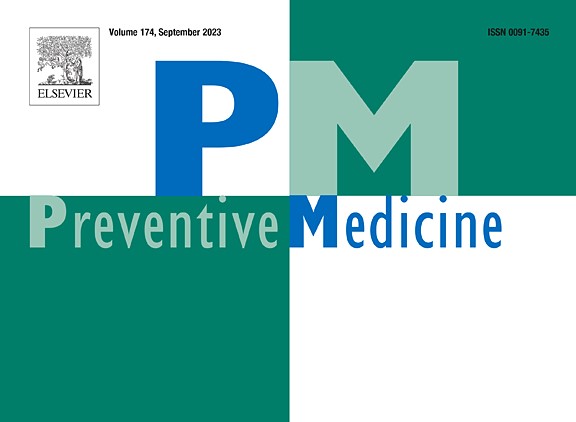
Wongseree, Peeradon; Hasgul, Zeynep; Leerapan, Borwornsom; Iramaneerat, Cherdsak; Phisalprapa, Pochamana; Jalali, Mohammad S.
Dynamics of colorectal cancer screening in low and middle-income countries: A modeling analysis from Thailand Journal Article
In: Preventive Medicine, iss. 175, pp. 107694, 2023.
Abstract | Links | BibTeX | Tags: Cancer, Simulation modeling
@article{nokey,
title = {Dynamics of colorectal cancer screening in low and middle-income countries: A modeling analysis from Thailand},
author = {Peeradon Wongseree and Zeynep Hasgul and Borwornsom Leerapan and Cherdsak Iramaneerat and Pochamana Phisalprapa and Mohammad S. Jalali},
url = {https://mj-lab.mgh.harvard.edu/wp-content/uploads/2023/09/ColoSIM_2023.pdf
https://mj-lab.mgh.harvard.edu/colo-sim-model},
year = {2023},
date = {2023-09-01},
urldate = {2023-09-01},
journal = {Preventive Medicine},
issue = {175},
pages = {107694},
abstract = {Background
Low and middle-income countries face constraints for early colorectal cancer (CRC) detection, including restricted access to care and low colonoscopy capacity. Considering these constraints, we studied strategies for increasing access to early CRC detection and reducing CRC progression and mortality rates in Thailand.
Methods
We developed a system dynamics model to simulate CRC death and progression trends. We analyzed the impacts of increased access to screening via fecal immunochemical test and colonoscopy, improving access to CRC diagnosis among symptomatic individuals, and their combination.
Results
Projecting the status quo (2023−2032), deaths per 100K people increase from 87.5 to 115.4, and CRC progressions per 100K people rise from 131.8 to 159.8. In 2032, improved screening access prevents 2.5 CRC deaths and 2.5 progressions per 100K people, with cumulative prevented 7K deaths and 9K progressions, respectively. Improved symptom evaluation access prevents 7.5 CRC deaths per 100K with no effect on progression, totaling 35K saved lives. A combined approach prevents 9.3 deaths and 1.8 progressions per 100K, or 41K and 7K cumulatively. The combined strategy prevents most deaths; however, there is a tradeoff: It prevents fewer CRC progressions than screening access improvement. Increasing the current annual colonoscopy capacity (200K) to sufficient capacity (681K), the combined strategy achieves the best results, preventing 15.0 CRC deaths and 10.3 CRC progressions per 100K people, or 54K and 30K cumulatively.
Conclusion
Until colonoscopy capacity increases, enhanced screening and symptom evaluation are needed simultaneously to curb CRC deaths, albeit not the best strategy for CRC progression prevention.},
keywords = {Cancer, Simulation modeling},
pubstate = {published},
tppubtype = {article}
}
Low and middle-income countries face constraints for early colorectal cancer (CRC) detection, including restricted access to care and low colonoscopy capacity. Considering these constraints, we studied strategies for increasing access to early CRC detection and reducing CRC progression and mortality rates in Thailand.
Methods
We developed a system dynamics model to simulate CRC death and progression trends. We analyzed the impacts of increased access to screening via fecal immunochemical test and colonoscopy, improving access to CRC diagnosis among symptomatic individuals, and their combination.
Results
Projecting the status quo (2023−2032), deaths per 100K people increase from 87.5 to 115.4, and CRC progressions per 100K people rise from 131.8 to 159.8. In 2032, improved screening access prevents 2.5 CRC deaths and 2.5 progressions per 100K people, with cumulative prevented 7K deaths and 9K progressions, respectively. Improved symptom evaluation access prevents 7.5 CRC deaths per 100K with no effect on progression, totaling 35K saved lives. A combined approach prevents 9.3 deaths and 1.8 progressions per 100K, or 41K and 7K cumulatively. The combined strategy prevents most deaths; however, there is a tradeoff: It prevents fewer CRC progressions than screening access improvement. Increasing the current annual colonoscopy capacity (200K) to sufficient capacity (681K), the combined strategy achieves the best results, preventing 15.0 CRC deaths and 10.3 CRC progressions per 100K people, or 54K and 30K cumulatively.
Conclusion
Until colonoscopy capacity increases, enhanced screening and symptom evaluation are needed simultaneously to curb CRC deaths, albeit not the best strategy for CRC progression prevention.

Stringfellow, Erin; Lim, Tse Yang; Dong, Huiru; Zhang, Ziyuan; Jalali, Mohammad S.
In: Addiction, 2023.
Abstract | Links | BibTeX | Tags: Substance use
@article{Stringfellow2023b,
title = {The association between longitudinal trends in receipt of buprenorphine for opioid use disorder and buprenorphine-waivered providers in the United States},
author = {Erin Stringfellow and Tse Yang Lim and Huiru Dong and Ziyuan Zhang and Mohammad S. Jalali
},
url = {https://mj-lab.mgh.harvard.edu/wp-content/uploads/2023/07/Stingfellow_et_al_Addiction_2023.pdf},
year = {2023},
date = {2023-07-11},
urldate = {2023-07-11},
journal = {Addiction},
abstract = {Aims, Design and Setting
We sought to describe longitudinal trends in buprenorphine receipt and buprenorphine-waivered providers in the United States from 2003 to 2021 and measure whether the relationship between the two differed after capacity-building strategies were enacted nationally in 2017. This was a retrospective study of two separate cohorts covering the years 2003–21, testing whether the association between two trends in these cohorts changed comparing 2003 to 2016 and from 2017 to 2021, among buprenorphine providers in the United States, regardless of treatment setting. Patients receiving dispensed buprenorphine at retail pharmacies.
Participants
All providers who have obtained a waiver to prescribe buprenorphine in the United States, and an estimate of the annual number of patients who had buprenorphine for opioid use disorder (OUD) dispensed to them at a retail pharmacy.
Measurements
We synthesized and summarized data from multiple sources to assess the cumulative number of buprenorphine-waivered providers over time. We used national-level prescription data from IQVIA to estimate annual buprenorphine receipt for OUD.
Findings
From 2003 to 2021, the number of buprenorphine-waivered providers in the United States increased from fewer than 5000 in the first 2 years of Food and Drug Administration (FDA) approval to more than 114 000 in 2021, while patients receiving buprenorphine products for OUD increased from approximately 19 000 to more than 1.4 million. The strength of association between waivered providers and patients is significantly different before and after 2017 (P < 0.001). From 2003 to 2016, for each additional provider, there was an average increase of 32.1 [95% confidence interval (CI) = 28.7–35.6] patients, but an increase of only 4.6 (95% CI= 3.5–5.7) patients for each additional provider, beginning in 2017.
Conclusions
In the United States, the relationship between the rates of growth in buprenorphine providers and patients became weaker after 2017. While efforts to increase buprenorphine-waivered providers were successful, there was less success in translating that into significant increases in buprenorphine receipt.},
keywords = {Substance use},
pubstate = {published},
tppubtype = {article}
}
We sought to describe longitudinal trends in buprenorphine receipt and buprenorphine-waivered providers in the United States from 2003 to 2021 and measure whether the relationship between the two differed after capacity-building strategies were enacted nationally in 2017. This was a retrospective study of two separate cohorts covering the years 2003–21, testing whether the association between two trends in these cohorts changed comparing 2003 to 2016 and from 2017 to 2021, among buprenorphine providers in the United States, regardless of treatment setting. Patients receiving dispensed buprenorphine at retail pharmacies.
Participants
All providers who have obtained a waiver to prescribe buprenorphine in the United States, and an estimate of the annual number of patients who had buprenorphine for opioid use disorder (OUD) dispensed to them at a retail pharmacy.
Measurements
We synthesized and summarized data from multiple sources to assess the cumulative number of buprenorphine-waivered providers over time. We used national-level prescription data from IQVIA to estimate annual buprenorphine receipt for OUD.
Findings
From 2003 to 2021, the number of buprenorphine-waivered providers in the United States increased from fewer than 5000 in the first 2 years of Food and Drug Administration (FDA) approval to more than 114 000 in 2021, while patients receiving buprenorphine products for OUD increased from approximately 19 000 to more than 1.4 million. The strength of association between waivered providers and patients is significantly different before and after 2017 (P < 0.001). From 2003 to 2016, for each additional provider, there was an average increase of 32.1 [95% confidence interval (CI) = 28.7–35.6] patients, but an increase of only 4.6 (95% CI= 3.5–5.7) patients for each additional provider, beginning in 2017.
Conclusions
In the United States, the relationship between the rates of growth in buprenorphine providers and patients became weaker after 2017. While efforts to increase buprenorphine-waivered providers were successful, there was less success in translating that into significant increases in buprenorphine receipt.
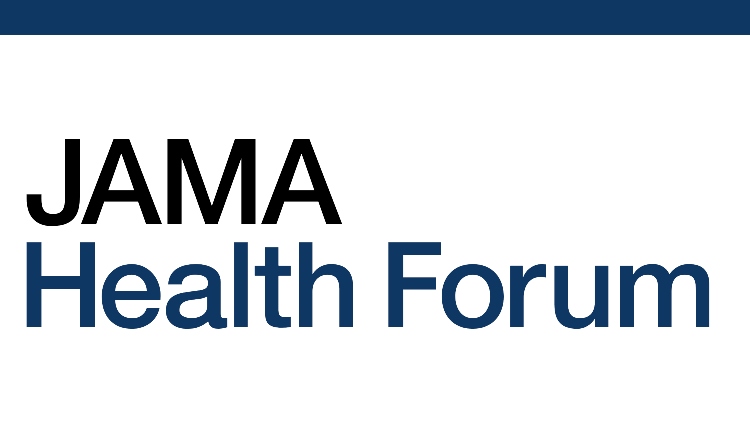
Claypool, Anneke; DiGennaro, Catherine; Russell, W. Alton; Yildirim, Melike; Zhang, Alan; Reid, Zuri; Stringfellow, Erin; Bearnot, Benjamin; Schackman, Bruce; Humphreys, Keith; Jalali, Mohammad S.
Cost-effectiveness of increasing buprenorphine treatment initiation, duration, and capacity among individuals who use opioids Journal Article
In: JAMA Health Forum, vol. 4, iss. 5, pp. e231080, 2023.
Abstract | Links | BibTeX | Tags: Simulation modeling, Substance use
@article{Claypool2023,
title = {Cost-effectiveness of increasing buprenorphine treatment initiation, duration, and capacity among individuals who use opioids},
author = {Anneke Claypool and Catherine DiGennaro and W. Alton Russell and Melike Yildirim and Alan Zhang and Zuri Reid and Erin Stringfellow and Benjamin Bearnot and Bruce Schackman and Keith Humphreys and Mohammad S. Jalali},
url = {https://mj-lab.mgh.harvard.edu/wp-content/uploads/2023/07/Claypool_2023.pdf},
year = {2023},
date = {2023-05-19},
urldate = {2023-05-19},
journal = {JAMA Health Forum},
volume = {4},
issue = {5},
pages = {e231080},
abstract = {Importance: Buprenorphine is an effective and cost-effective medication to treat opioid use disorder (OUD), but is not readily available to many people with OUD in the US. The current cost-effectiveness literature does not consider interventions that concurrently increase buprenorphine initiation, duration, and capacity.
Objective: To conduct a cost-effectiveness analysis and compare interventions associated with increased buprenorphine treatment initiation, duration, and capacity.
Design and Setting: This study modeled the effects of 5 interventions individually and in combination using SOURCE, a recent system dynamics model of prescription opioid and illicit opioid use, treatment, and remission, calibrated to US data from 1999 to 2020. The analysis was run during a 12-year time horizon from 2021 to 2032, with lifetime follow-up. A probabilistic sensitivity analysis on intervention effectiveness and costs was conducted. Analyses were performed from April 2021 through March 2023. Modeled participants included people with opioid misuse and OUD in the US.
Interventions: Interventions included emergency department buprenorphine initiation, contingency management, psychotherapy, telehealth, and expansion of hub-and-spoke treatment programs, individually and in combination.
Main Outcomes and Measures: Total national opioid overdose deaths, quality-adjusted life years (QALYs) gained, and costs from the societal and health care perspective.
Results: Projections showed that contingency management expansion would avert 3530 opioid overdose deaths over 12 years, more than any other single-intervention strategy. Interventions that increased buprenorphine treatment duration initially were associated with an increased number of opioid overdose deaths in the absence of expanded treatment capacity. With an incremental cost- effectiveness ratio of $19 381 per QALY gained (2021 USD), the strategy that expanded contingency management, hub-and-spoke training, emergency department initiation, and telehealth was the preferred strategy for any willingness-to-pay threshold from $20 000 to $200 000/QALY gained, as it was associated with increased treatment duration and capacity simultaneously.
Conclusion and Relevance: This modeling analysis simulated the effects of implementing several intervention strategies across the buprenorphine cascade of care and found that strategies that were concurrently associated with increased buprenorphine treatment initiation, duration, and capacity were cost-effective.},
keywords = {Simulation modeling, Substance use},
pubstate = {published},
tppubtype = {article}
}
Objective: To conduct a cost-effectiveness analysis and compare interventions associated with increased buprenorphine treatment initiation, duration, and capacity.
Design and Setting: This study modeled the effects of 5 interventions individually and in combination using SOURCE, a recent system dynamics model of prescription opioid and illicit opioid use, treatment, and remission, calibrated to US data from 1999 to 2020. The analysis was run during a 12-year time horizon from 2021 to 2032, with lifetime follow-up. A probabilistic sensitivity analysis on intervention effectiveness and costs was conducted. Analyses were performed from April 2021 through March 2023. Modeled participants included people with opioid misuse and OUD in the US.
Interventions: Interventions included emergency department buprenorphine initiation, contingency management, psychotherapy, telehealth, and expansion of hub-and-spoke treatment programs, individually and in combination.
Main Outcomes and Measures: Total national opioid overdose deaths, quality-adjusted life years (QALYs) gained, and costs from the societal and health care perspective.
Results: Projections showed that contingency management expansion would avert 3530 opioid overdose deaths over 12 years, more than any other single-intervention strategy. Interventions that increased buprenorphine treatment duration initially were associated with an increased number of opioid overdose deaths in the absence of expanded treatment capacity. With an incremental cost- effectiveness ratio of $19 381 per QALY gained (2021 USD), the strategy that expanded contingency management, hub-and-spoke training, emergency department initiation, and telehealth was the preferred strategy for any willingness-to-pay threshold from $20 000 to $200 000/QALY gained, as it was associated with increased treatment duration and capacity simultaneously.
Conclusion and Relevance: This modeling analysis simulated the effects of implementing several intervention strategies across the buprenorphine cascade of care and found that strategies that were concurrently associated with increased buprenorphine treatment initiation, duration, and capacity were cost-effective.
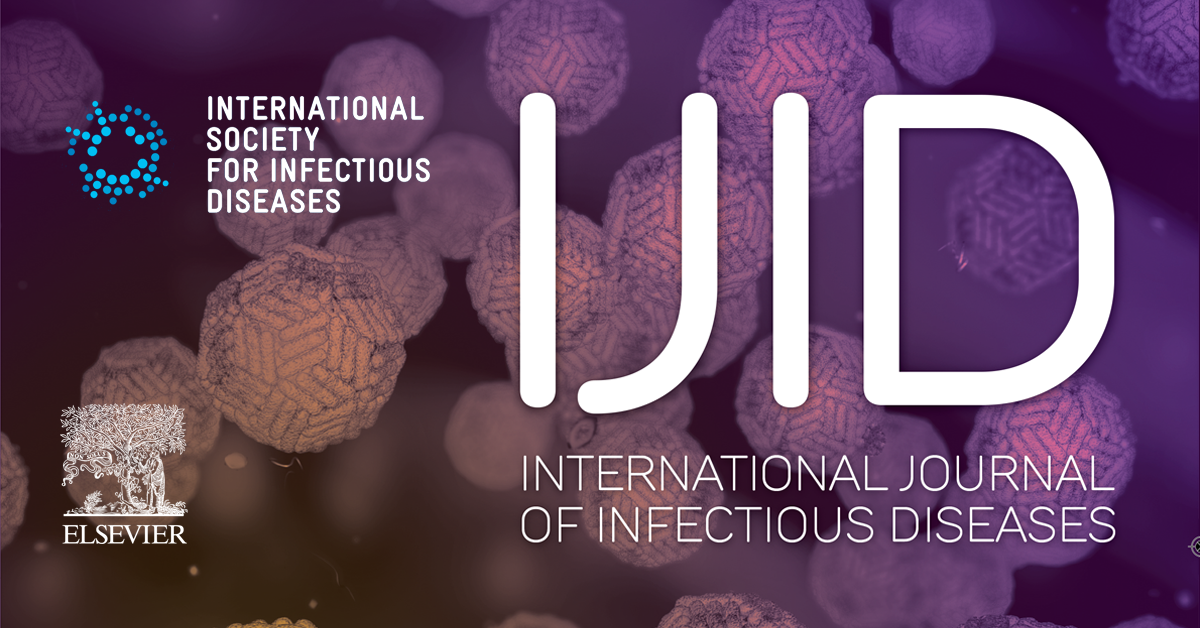
Yildirim, Melike; Webb, Karen A.; Ciaranello, Andrea L.; Amick, Alyssa K.; Mushavi, Angela; Chimwaza, Anesu; Claypool, Anneke; Murape, Tendayi; McCann, Nicole C.; Flanagan, Clare; Jalali, Mohammad S.
In: The International Journal of Infectious Diseases, 2023.
Abstract | Links | BibTeX | Tags: Infectious diseases, Simulation modeling
@article{Yildirim2023,
title = {Increasing the initiation of antiretroviral therapy through optimal placement of diagnostic technologies for pediatric HIV in Zimbabwe: a modeling analysis},
author = {Melike Yildirim and Karen A. Webb and Andrea L. Ciaranello and Alyssa K. Amick and Angela Mushavi and Anesu Chimwaza and Anneke Claypool and Tendayi Murape and Nicole C. McCann and Clare Flanagan and Mohammad S. Jalali
},
url = {https://mj-lab.mgh.harvard.edu/wp-content/uploads/2023/06/Yildirim_IJID_2023.pdf},
year = {2023},
date = {2023-05-19},
urldate = {2023-05-19},
journal = {The International Journal of Infectious Diseases},
abstract = {Objectives: Point-of-care (POC) devices for infant HIV testing provide timely result-return and increase antiretroviral (ART) initiation. We aimed to optimally locate POC devices to increase 30-day ART initiation in Matabeleland South, Zimbabwe.
Methods: We developed an optimization model to identify the locations for limited POC devices at health facilities, maximizing the number of infants who receive HIV test results and initiate ART within 30 days of testing. We compared location-optimization model results to non-model-based decision heuristics, which are more practical and less data-intensive. Heuristics assign POC devices based on demand, test positivity, laboratory result-return probability, and POC machine functionality.
Results: With the current placement of 11 existing POC machines, 37% of all tested infants with HIV were projected to receive results and 35% were projected to initiate ART within 30 days of testing. With optimal placement of existing machines, 46% were projected to receive results and 44% to initiate ART within 30 days, retaining three machines in current locations, moving eight to new facilities. Relocation based on the highest POC device functionality would be the best-performing heuristic decision (44% receiving results and 42% initiating ART within 30 days); although, it still would not perform as well as the optimization-based approach.
Conclusion: Optimal and ad hoc heuristic relocation of limited POC machines would increase timely result-return and ART initiation, without further, often costly, interventions. Location optimization can enhance decision-making regarding the placement of medical technologies for HIV care.},
keywords = {Infectious diseases, Simulation modeling},
pubstate = {published},
tppubtype = {article}
}
Methods: We developed an optimization model to identify the locations for limited POC devices at health facilities, maximizing the number of infants who receive HIV test results and initiate ART within 30 days of testing. We compared location-optimization model results to non-model-based decision heuristics, which are more practical and less data-intensive. Heuristics assign POC devices based on demand, test positivity, laboratory result-return probability, and POC machine functionality.
Results: With the current placement of 11 existing POC machines, 37% of all tested infants with HIV were projected to receive results and 35% were projected to initiate ART within 30 days of testing. With optimal placement of existing machines, 46% were projected to receive results and 44% to initiate ART within 30 days, retaining three machines in current locations, moving eight to new facilities. Relocation based on the highest POC device functionality would be the best-performing heuristic decision (44% receiving results and 42% initiating ART within 30 days); although, it still would not perform as well as the optimization-based approach.
Conclusion: Optimal and ad hoc heuristic relocation of limited POC machines would increase timely result-return and ART initiation, without further, often costly, interventions. Location optimization can enhance decision-making regarding the placement of medical technologies for HIV care.

Tatar, Moosa; Faraji, Mohammad R.; Keyes, Katherine; Wilson, Fernando A.; Jalali, Mohammad S.
Social Vulnerability Predictors of Drug Poisoning Mortality: A Machine Learning Analysis in the United States Journal Article
In: The American Journal on Addictions, 2023.
Abstract | Links | BibTeX | Tags: Artificial intelligence, Disparity and equity, Substance use
@article{669757,
title = {Social Vulnerability Predictors of Drug Poisoning Mortality: A Machine Learning Analysis in the United States},
author = {Moosa Tatar and Mohammad R. Faraji and Katherine Keyes and Fernando A. Wilson and Mohammad S. Jalali},
url = {https://mj-lab.mgh.harvard.edu/wp-content/uploads/2023/07/Tatar_et_al_AJA_2023.pdf},
year = {2023},
date = {2023-05-01},
urldate = {2023-05-01},
journal = {The American Journal on Addictions},
abstract = {Background and Objectives
Drug poisoning is a leading cause of unintentional deaths in the United States. Despite the growing literature, there are a few recent analyses of a wide range of community-level social vulnerability features contributing to drug poisoning mortality. Current studies on this topic face three limitations: often studying a limited subset of vulnerability features, focusing on small sample sizes, or solely including local data. To address this gap, we conducted a national-level analysis to study the impacts of several social vulnerability features in predicting drug mortality rates in the United States.
Methods
We used machine learning to investigate the role of 16 social vulnerability features in predicting drug mortality rates for US counties in 2014, 2016, and 2018—the most recent available data. We estimated each vulnerability feature's gain relative contribution in predicting drug poisoning mortality.
Results
Among all social vulnerability features, the percentage of noninstitutionalized persons with a disability is the most influential predictor, with a gain relative contribution of 18.6%, followed by population density and the percentage of minority residents (13.3% and 13%, respectively). Percentages of households with no available vehicles, mobile homes, and persons without a high school diploma are the following features with gain relative contributions of 6.3%, 5.8%, and 5.1%, respectively.
Conclusion and Scientific Significance
We identified social vulnerability features that are most predictive of drug poisoning mortality. Public health interventions and policies targeting vulnerable communities may increase the resilience of these communities and mitigate the overdose death and drug misuse crisis.},
keywords = {Artificial intelligence, Disparity and equity, Substance use},
pubstate = {published},
tppubtype = {article}
}
Drug poisoning is a leading cause of unintentional deaths in the United States. Despite the growing literature, there are a few recent analyses of a wide range of community-level social vulnerability features contributing to drug poisoning mortality. Current studies on this topic face three limitations: often studying a limited subset of vulnerability features, focusing on small sample sizes, or solely including local data. To address this gap, we conducted a national-level analysis to study the impacts of several social vulnerability features in predicting drug mortality rates in the United States.
Methods
We used machine learning to investigate the role of 16 social vulnerability features in predicting drug mortality rates for US counties in 2014, 2016, and 2018—the most recent available data. We estimated each vulnerability feature's gain relative contribution in predicting drug poisoning mortality.
Results
Among all social vulnerability features, the percentage of noninstitutionalized persons with a disability is the most influential predictor, with a gain relative contribution of 18.6%, followed by population density and the percentage of minority residents (13.3% and 13%, respectively). Percentages of households with no available vehicles, mobile homes, and persons without a high school diploma are the following features with gain relative contributions of 6.3%, 5.8%, and 5.1%, respectively.
Conclusion and Scientific Significance
We identified social vulnerability features that are most predictive of drug poisoning mortality. Public health interventions and policies targeting vulnerable communities may increase the resilience of these communities and mitigate the overdose death and drug misuse crisis.

Deutsch, Arielle; Motabar, Nikki; Chang, Edward; Jalali, Mohammad S.
Grounding alcohol simulation models in empirical and theoretical alcohol research: a model for a Northern Plains population in the United States Journal Article
In: System Dynamics Review, 2023.
Abstract | Links | BibTeX | Tags: Simulation modeling, Substance use
@article{Deutsch2023b,
title = {Grounding alcohol simulation models in empirical and theoretical alcohol research: a model for a Northern Plains population in the United States},
author = {Arielle Deutsch and Nikki Motabar and Edward Chang and Mohammad S. Jalali},
url = {https://mj-lab.mgh.harvard.edu/alcohol-misuse-model
https://mj-lab.mgh.harvard.edu/wp-content/uploads/2023/06/Deutsch_SDR_2023.pdf},
year = {2023},
date = {2023-05-01},
urldate = {2023-05-01},
journal = {System Dynamics Review},
abstract = {The growing number of systems science simulation models for alcohol use (AU) are often disconnected from AU models within empirical and theoretical alcohol research. As AU prevention/intervention efforts are typically grounded in alcohol research, this disconnect may reduce policy testing results, impact, and implementation. We developed a simulation model guided by AU research (accounting for the multiple AU stages defined by AU behavior and risk for harm and diverse transitions between stages). Simulated projections were compared to historical data to evaluate model accuracy and potential policy leverage points for prevention and intervention at risky drinking (RD) and alcohol use disorder (AUD) stages. Results indicated prevention provided the greatest RD and AUD reduction; however, focusing exclusively on AUD prevention may not be effective for long-term change, given the continued increase in RD. This study makes a case for the strength and importance of aligning subject-based research with systems science simulation models.},
keywords = {Simulation modeling, Substance use},
pubstate = {published},
tppubtype = {article}
}
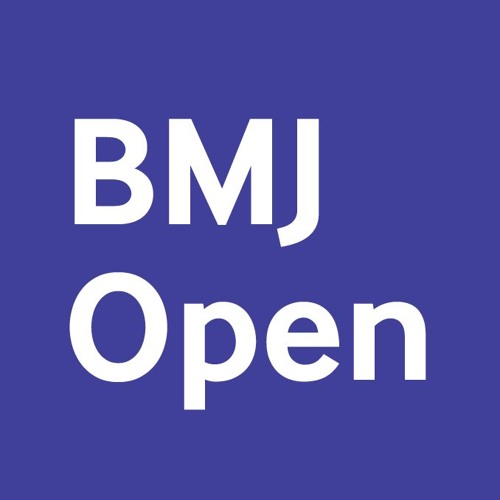
Vinke, Petra C.; Combalia, Marc; de Bock, Geertruida H; Leyrat, Clémence; Spanjaart, Anne Mea; Dalle, Stephane; da Silva, Maria Gomes; Essongue, Aurore Fouda; Rabier, Aurélie; Pannard, Myriam; Jalali, Mohammad S.; Elgammal, Amal; Papazoglou, Mike; Hacid, Mohand-Said; Rioufol, Catherine; Kersten, Marie-José; van Oijen, Martijn GH; Suazo-Zepeda, Erick; Malhotra, Ananya; Coquery, Emmanuel; Anota, Amélie; Preau, Marie; Fauvernier, Mathieu; Coz, Elsa; Puig, Susana; Maucort-Boulch, Delphine
In: BMJ Open, vol. 13, pp. e069090, 2023.
Abstract | Links | BibTeX | Tags: Cancer
@article{nokey,
title = {Monitoring multidimensional aspects of quality of life after cancer immunotherapy: protocol for the international multicentre, observational QUALITOP cohort study},
author = {Petra C. Vinke and Marc Combalia and Geertruida H de Bock and Clémence Leyrat and Anne Mea Spanjaart and Stephane Dalle and Maria Gomes da Silva and Aurore Fouda Essongue and Aurélie Rabier and Myriam Pannard and Mohammad S. Jalali and Amal Elgammal and Mike Papazoglou and Mohand-Said Hacid and Catherine Rioufol and Marie-José Kersten and Martijn GH van Oijen and Erick Suazo-Zepeda and Ananya Malhotra and Emmanuel Coquery and Amélie Anota and Marie Preau and Mathieu Fauvernier and Elsa Coz and Susana Puig and Delphine Maucort-Boulch},
url = {https://mj-lab.mgh.harvard.edu/wp-content/uploads/2023/04/e069090.full_.pdf},
year = {2023},
date = {2023-04-28},
urldate = {2023-04-28},
journal = {BMJ Open},
volume = {13},
pages = {e069090},
abstract = {Introduction Immunotherapies, such as immune checkpoint inhibitors and chimeric antigen receptor T-cell therapy, have significantly improved the clinical outcomes of various malignancies. However, they also cause immune-related adverse events (irAEs) that can be challenging to predict, prevent and treat. Although they likely interact with health-related quality of life (HRQoL), most existing evidence on this topic has come from clinical trials with eligibility criteria that may not accurately reflect real-world settings. The QUALITOP project will study HRQoL in relation to irAEs and its determinants in a real-world study of patients treated with immunotherapy.
Methods and analysis This international, observational, multicentre study takes place in France, the Netherlands, Portugal and Spain. We aim to include about 1800 adult patients with cancer treated with immunotherapy in a specifically recruited prospective cohort, and to additionally obtain data from historical real-world databases (ie, databiobanks) and medical administrative registries (ie, national cancer registries) in which relevant data regarding other adult patients with cancer treated with immunotherapy has already been stored. In the prospective cohort, clinical health status, HRQoL and psychosocial well-being will be monitored until 18 months after treatment initiation through questionnaires (at baseline and 3, 6, 12 and 18 months thereafter), and by data extraction from electronic patient files. Using advanced statistical methods, including causal inference methods, artificial intelligence algorithms and simulation modelling, we will use data from the QUALITOP cohort to improve the understanding of the complex relationships among treatment regimens, patient characteristics, irAEs and HRQoL.
Ethics and dissemination All aspects of the QUALITOP project will be conducted in accordance with the Declaration of Helsinki and with ethical approval from a suitable local ethics committee, and all patients will provide signed informed consent. In addition to standard dissemination efforts in the scientific literature, the data and outcomes will contribute to a smart digital platform and medical data lake. These will (1) help increase knowledge about the impact of immunotherapy, (2) facilitate improved interactions between patients, clinicians and the general population and (3) contribute to personalised medicine.},
keywords = {Cancer},
pubstate = {published},
tppubtype = {article}
}
Methods and analysis This international, observational, multicentre study takes place in France, the Netherlands, Portugal and Spain. We aim to include about 1800 adult patients with cancer treated with immunotherapy in a specifically recruited prospective cohort, and to additionally obtain data from historical real-world databases (ie, databiobanks) and medical administrative registries (ie, national cancer registries) in which relevant data regarding other adult patients with cancer treated with immunotherapy has already been stored. In the prospective cohort, clinical health status, HRQoL and psychosocial well-being will be monitored until 18 months after treatment initiation through questionnaires (at baseline and 3, 6, 12 and 18 months thereafter), and by data extraction from electronic patient files. Using advanced statistical methods, including causal inference methods, artificial intelligence algorithms and simulation modelling, we will use data from the QUALITOP cohort to improve the understanding of the complex relationships among treatment regimens, patient characteristics, irAEs and HRQoL.
Ethics and dissemination All aspects of the QUALITOP project will be conducted in accordance with the Declaration of Helsinki and with ethical approval from a suitable local ethics committee, and all patients will provide signed informed consent. In addition to standard dissemination efforts in the scientific literature, the data and outcomes will contribute to a smart digital platform and medical data lake. These will (1) help increase knowledge about the impact of immunotherapy, (2) facilitate improved interactions between patients, clinicians and the general population and (3) contribute to personalised medicine.

Stringfellow, Erin J.; Lim, Tse Yang; DiGennaro, Catherine; Hasgül, Zeynep; Jalali, Mohammad S.
Enumerating contributions of fentanyls and other factors to the unprecedented 2020 rise in opioid overdose deaths: model-based analysis Journal Article
In: PNAS Nexus, vol. 2, no. 4, pp. pgad064, 2023.
Abstract | Links | BibTeX | Tags: Simulation modeling, Substance use
@article{Stringfellow2023,
title = {Enumerating contributions of fentanyls and other factors to the unprecedented 2020 rise in opioid overdose deaths: model-based analysis},
author = {Erin J. Stringfellow and Tse Yang Lim and Catherine DiGennaro and Zeynep Hasgül and Mohammad S. Jalali},
url = {https://mj-lab.mgh.harvard.edu/wp-content/uploads/2023/04/fent_effect_2023.pdf},
year = {2023},
date = {2023-04-12},
urldate = {2023-04-12},
journal = {PNAS Nexus},
volume = {2},
number = {4},
pages = {pgad064},
abstract = {In 2020, the ongoing US opioid overdose crisis collided with the emerging COVID-19 pandemic. Opioid overdose deaths (OODs) rose an unprecedented 38%, due to a combination of COVID-19 disrupting services essential to people who use drugs, continued increases in fentanyls in the illicit drug supply, and other factors. How much did these factors contribute to increased OODs? We used a validated simulation model of the opioid overdose crisis, SOURCE, to estimate excess OODs in 2020 and the distribution of that excess attributable to various factors. Factors affecting OODs that could have been disrupted by COVID-19, and for which data were available, included opioid prescribing, naloxone distribution, and receipt of medications for opioid use disorder. We also accounted for fentanyls’ presence in the heroin supply. We estimated a total of 18,276 potential excess OODs, including 1,792 lives saved due to increases in buprenorphine receipt and naloxone distribution and decreases in opioid prescribing. Critically, growth in fentanyls drove 43% (7,879) of the excess OODs. A further 8% is attributable to first-ever declines in methadone maintenance treatment and extended-released injectable naltrexone treatment, most likely due to COVID-19-related disruptions. In all, 49% of potential excess OODs remain unexplained, at least some of which are likely due to additional COVID-19-related disruptions. While the confluence of various COVID-19-related factors could have been responsible for more than half of excess OODs, fentanyls continued to play a singular role in excess OODs, highlighting the urgency of mitigating their effects on overdoses.},
keywords = {Simulation modeling, Substance use},
pubstate = {published},
tppubtype = {article}
}

Stringfellow, Erin J.; Lim, Tse Yang; DiGennaro, Catherine; Zhang, Ziyuan; Paramasivam, Pritika; Bearnot, Benjamin; Humphreys, Keith; Jalali, Mohammad S.
Long-term Effects of Increasing Buprenorphine Treatment-Seeking, Duration, and Capacity on Opioid Overdose Fatalities: a Model-based Analysis Journal Article
In: Journal of Addiction Medicine, 2023.
Abstract | Links | BibTeX | Tags: Simulation modeling, Substance use
@article{Stringfellow2023bb,
title = {Long-term Effects of Increasing Buprenorphine Treatment-Seeking, Duration, and Capacity on Opioid Overdose Fatalities: a Model-based Analysis},
author = {Erin J. Stringfellow and
Tse Yang Lim and
Catherine DiGennaro and
Ziyuan Zhang and
Pritika Paramasivam and
Benjamin Bearnot and
Keith Humphreys and
Mohammad S. Jalali},
url = {https://mj-lab.mgh.harvard.edu/wp-content/uploads/2023/04/Long_Term_Effects_of_Increasing_Buprenorphine.pdf},
year = {2023},
date = {2023-03-01},
urldate = {2023-03-01},
journal = {Journal of Addiction Medicine},
abstract = {Objectives
Because buprenorphine treatment of opioid use disorder reduces opioid overdose deaths (OODs), expanding access to care is an important policy and clinical care goal. Policymakers must choose within capacity limitations whether to expand the number of people with opioid use disorder who are treated or extend duration for existing patients. This inherent tradeoff could be made less acute with expanded buprenorphine treatment capacity.
Methods
To inform such decisions, we used a validated simulation model to project the effects of increasing buprenorphine treatment-seeking, average episode duration, and capacity (patients per provider) on OODs in the United States from 2023 to 2033, varying the start time to assess the effects of implementation delays.
Results
Results show that increasing treatment duration alone could cost lives in the short term by reducing capacity for new admissions yet save more lives in the long term than accomplished by only increasing treatment seeking. Increasing provider capacity had negligible effects. The most effective 2-policy combination was increasing capacity and duration simultaneously, which would reduce OODs up to 18.6% over a decade. By 2033, the greatest reduction in OODs (≥20%) was achieved when capacity was doubled and average duration reached 2 years, but only if the policy changes started in 2023. Delaying even a year diminishes the benefits. Treatment-seeking increases were equally beneficial whether they began in 2023 or 2025 but of only marginal benefit beyond what capacity and duration achieved.
Conclusions
If policymakers only target 2 policies to reduce OODs, they should be to increase capacity and duration, enacted quickly and aggressively.},
keywords = {Simulation modeling, Substance use},
pubstate = {published},
tppubtype = {article}
}
Because buprenorphine treatment of opioid use disorder reduces opioid overdose deaths (OODs), expanding access to care is an important policy and clinical care goal. Policymakers must choose within capacity limitations whether to expand the number of people with opioid use disorder who are treated or extend duration for existing patients. This inherent tradeoff could be made less acute with expanded buprenorphine treatment capacity.
Methods
To inform such decisions, we used a validated simulation model to project the effects of increasing buprenorphine treatment-seeking, average episode duration, and capacity (patients per provider) on OODs in the United States from 2023 to 2033, varying the start time to assess the effects of implementation delays.
Results
Results show that increasing treatment duration alone could cost lives in the short term by reducing capacity for new admissions yet save more lives in the long term than accomplished by only increasing treatment seeking. Increasing provider capacity had negligible effects. The most effective 2-policy combination was increasing capacity and duration simultaneously, which would reduce OODs up to 18.6% over a decade. By 2033, the greatest reduction in OODs (≥20%) was achieved when capacity was doubled and average duration reached 2 years, but only if the policy changes started in 2023. Delaying even a year diminishes the benefits. Treatment-seeking increases were equally beneficial whether they began in 2023 or 2025 but of only marginal benefit beyond what capacity and duration achieved.
Conclusions
If policymakers only target 2 policies to reduce OODs, they should be to increase capacity and duration, enacted quickly and aggressively.

Dong, Huiru; Stringfellow, Erin J.; Russell, W. Alton; Jalali, Mohammad S.
Racial and Ethnic Disparities in Buprenorphine Treatment Duration in the US Journal Article
In: JAMA Psychiatry, 2023.
Links | BibTeX | Tags: Disparity and equity, Substance use
@article{Dong2022b,
title = {Racial and Ethnic Disparities in Buprenorphine Treatment Duration in the US},
author = {Huiru Dong and Erin J. Stringfellow and W. Alton Russell and Mohammad S. Jalali},
url = {https://mj-lab.mgh.harvard.edu/wp-content/uploads/2022/12/Dong-2022-jamapsychiatry.pdf},
doi = {10.1001/jamapsychiatry.2022.3673},
year = {2023},
date = {2023-02-01},
urldate = {2023-03-01},
journal = {JAMA Psychiatry},
keywords = {Disparity and equity, Substance use},
pubstate = {published},
tppubtype = {article}
}
2022
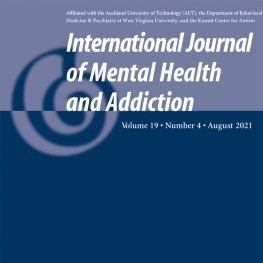
Dong, Huiru; Stringfellow, Erin J.; Russell, W Alton; Bearnot, Benjamin; Jalali, Mohammad S.
Impact of Alternative Ways to Operationalize Buprenorphine Treatment Duration on Understanding Continuity of Care for Opioid Use Disorder Journal Article
In: International Journal of Mental Health and Addiction, 2022.
Links | BibTeX | Tags: Substance use
@article{Dong2022,
title = {Impact of Alternative Ways to Operationalize Buprenorphine Treatment Duration on Understanding Continuity of Care for Opioid Use Disorder},
author = {Huiru Dong and Erin J. Stringfellow and W Alton Russell and Benjamin Bearnot and Mohammad S. Jalali},
url = {https://mj-lab.mgh.harvard.edu/wp-content/uploads/2022/12/Dong-2022.pdf},
doi = {10.1007/s11469-022-00985-w},
year = {2022},
date = {2022-12-10},
urldate = {2022-12-10},
journal = {International Journal of Mental Health and Addiction},
keywords = {Substance use},
pubstate = {published},
tppubtype = {article}
}

Stringfellow, Erin J.; Lim, Tse Yang; Humphreys, Keith; DiGennaro, Catherine; Stafford, Celia; Beaulieu, Elizabeth; Homer, Jack; Wakeland, Wayne; Bearnot, Benjamin; McHugh, R. Kathryn; Kelly, John; Glos, Lukas; Eggers, Sara; Kazemi, Reza; Jalali, Mohammad S.
Reducing Opioid Use Disorder and Overdose in the United States: A Dynamic Modeling Analysis Journal Article
In: Science Advances, vol. 8, no. 25, 2022.
Abstract | Links | BibTeX | Tags: Simulation modeling, Substance use
@article{Stringfellow2021,
title = {Reducing Opioid Use Disorder and Overdose in the United States: A Dynamic Modeling Analysis},
author = {Erin J. Stringfellow and Tse Yang Lim and Keith Humphreys and Catherine DiGennaro and Celia Stafford and Elizabeth Beaulieu and Jack Homer and Wayne Wakeland and Benjamin Bearnot and R. Kathryn McHugh and John Kelly and Lukas Glos and Sara Eggers and Reza Kazemi and Mohammad S. Jalali},
url = {https://mj-lab.mgh.harvard.edu/wp-content/uploads/2022/12/Stringfellow_2022_SciAdv.pdf},
doi = {10.1126/sciadv.abm8147},
year = {2022},
date = {2022-06-24},
journal = {Science Advances},
volume = {8},
number = {25},
abstract = {Opioid overdose deaths remain a major public health crisis. We used a system dynamics simulation model of the U.S. opioid-using population age 12 and older to explore the impacts of 11 strategies on the prevalence of opioid use disorder (OUD) and fatal opioid overdoses from 2022 to 2032. These strategies spanned opioid misuse and OUD prevention, buprenorphine capacity, recovery support, and overdose harm reduction. By 2032, three strategies saved the most lives: (i) reducing the risk of opioid overdose involving fentanyl use, which may be achieved through fentanyl-focused harm reduction services; (ii) increasing naloxone distribution to people who use opioids; and (iii) recovery support for people in remission, which reduced deaths by reducing OUD. Increasing buprenorphine providers’ capacity to treat more people decreased fatal overdose, but only in the short term. Our analysis provides insight into the kinds of multifaceted approaches needed to save lives.
},
keywords = {Simulation modeling, Substance use},
pubstate = {published},
tppubtype = {article}
}
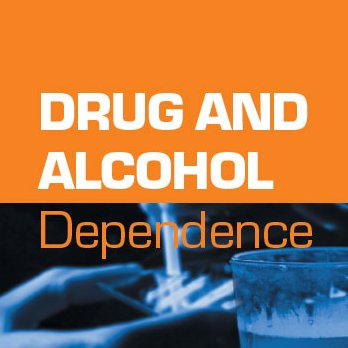
Stafford, Celia; Marrero, Wesley; Naumann, Rebecca B; Lich, Kristen Hassmiller; Wakeman, Sarah; Jalali, Mohammad S.
Identifying Key Risk Factors for Premature Discontinuation of Opioid Use Disorder Treatment in the United States: a Predictive Modeling Study Journal Article
In: Drug and Alcohol Dependence, vol. 237, no. 1, pp. 109507, 2022.
Abstract | Links | BibTeX | Tags: Artificial intelligence, Substance use
@article{669758,
title = {Identifying Key Risk Factors for Premature Discontinuation of Opioid Use Disorder Treatment in the United States: a Predictive Modeling Study},
author = {Celia Stafford and Wesley Marrero and Rebecca B Naumann and Kristen Hassmiller Lich and Sarah Wakeman and Mohammad S. Jalali},
url = {https://mj-lab.mgh.harvard.edu/wp-content/uploads/2022/12/Stafford_2022_DAD.pdf},
doi = {10.1016/j.drugalcdep.2022.109507},
year = {2022},
date = {2022-06-01},
urldate = {2022-06-01},
journal = {Drug and Alcohol Dependence},
volume = {237},
number = {1},
pages = {109507},
abstract = {Background
Treatment for opioid use disorder (OUD), particularly medication for OUD, is highly effective; however, retention in OUD treatment is a significant challenge. We aimed to identify key risk factors for premature exit from OUD treatment.
Methods
We analyzed 2,381,902 cross-sectional treatment episodes for individuals in the U.S., discharged between Jan/1/2015 and Dec/31/2019. We developed classification models (Random Forest, Classification and Regression Trees (CART), Bagged CART, and Boosted CART), and analyzed 31 potential risk factors for premature treatment exit, including treatment characteristics, substance use history, socioeconomic status, and demographic characteristics. We stratified our analysis based on length of stay in treatment and service setting. Models were compared using cross-validation and the receiver operating characteristic area under the curve (ROC-AUC).
Results
Random Forest outperformed other methods (ROC-AUC: 74%). The most influential risk factors included characteristics of service setting, geographic region, primary source of payment, and referral source. Race, ethnicity, and sex had far weaker predictive impacts. When stratified by treatment setting and length of stay, employment status and delay (days waited) to enter treatment were among the most influential factors. Their importance increased as treatment duration decreased. Notably, importance of referral source increased as the treatment duration increased. Finally, age and age of first use were important factors for lengths of stay of 2–7 days and in detox treatment settings.
Conclusions
The key factors of OUD treatment attrition identified in this analysis should be more closely explored (e.g., in causal studies) to inform targeted policies and interventions to improve models of care.},
keywords = {Artificial intelligence, Substance use},
pubstate = {published},
tppubtype = {article}
}
Treatment for opioid use disorder (OUD), particularly medication for OUD, is highly effective; however, retention in OUD treatment is a significant challenge. We aimed to identify key risk factors for premature exit from OUD treatment.
Methods
We analyzed 2,381,902 cross-sectional treatment episodes for individuals in the U.S., discharged between Jan/1/2015 and Dec/31/2019. We developed classification models (Random Forest, Classification and Regression Trees (CART), Bagged CART, and Boosted CART), and analyzed 31 potential risk factors for premature treatment exit, including treatment characteristics, substance use history, socioeconomic status, and demographic characteristics. We stratified our analysis based on length of stay in treatment and service setting. Models were compared using cross-validation and the receiver operating characteristic area under the curve (ROC-AUC).
Results
Random Forest outperformed other methods (ROC-AUC: 74%). The most influential risk factors included characteristics of service setting, geographic region, primary source of payment, and referral source. Race, ethnicity, and sex had far weaker predictive impacts. When stratified by treatment setting and length of stay, employment status and delay (days waited) to enter treatment were among the most influential factors. Their importance increased as treatment duration decreased. Notably, importance of referral source increased as the treatment duration increased. Finally, age and age of first use were important factors for lengths of stay of 2–7 days and in detox treatment settings.
Conclusions
The key factors of OUD treatment attrition identified in this analysis should be more closely explored (e.g., in causal studies) to inform targeted policies and interventions to improve models of care.

Lim, Tse Yang; Stringfellow, Erin J.; Stafford, Celia A.; DiGennaro, Catherine; Homer, Jack; Wakeland, Wayne; Eggers, Sara L.; Kazemi, Reza; Glos, Lukas; Ewing, Emily G.; Bannister, Calvin B.; Humphreys, Keith; Throckmorton, Douglas C.; Jalali, Mohammad S.
Modeling the Evolution of the U.S. Opioid Crisis for National Policy Development Journal Article
In: PNAS, vol. 119, no. 23, 2022.
Abstract | Links | BibTeX | Tags: Substance use
@article{Lim2021,
title = {Modeling the Evolution of the U.S. Opioid Crisis for National Policy Development},
author = {Tse Yang Lim and Erin J. Stringfellow and Celia A. Stafford and Catherine DiGennaro and Jack Homer and Wayne Wakeland and Sara L. Eggers and Reza Kazemi and Lukas Glos and Emily G. Ewing and Calvin B. Bannister and Keith Humphreys and Douglas C. Throckmorton and Mohammad S. Jalali},
url = {https://mj-lab.mgh.harvard.edu/wp-content/uploads/2022/12/Lim_2022_PNAS.pdf},
doi = {10.1073/pnas.211571411},
year = {2022},
date = {2022-05-31},
urldate = {2022-05-31},
journal = {PNAS},
volume = {119},
number = {23},
abstract = {The opioid crisis is a major public health challenge in the United States, killing about 70,000 people in 2020 alone. Long delays and feedbacks between policy actions and their effects on drug-use behavior create dynamic complexity, complicating policy decision-making. In 2017, the National Academies of Sciences, Engineering, and Medicine called for a quantitative systems model to help understand and address this complexity and guide policy decisions. Here, we present SOURCE (Simulation of Opioid Use, Response, Consequences, and Effects), a dynamic simulation model developed in response to that charge. SOURCE tracks the US population aged ≥12 y through the stages of prescription and illicit opioid (e.g., heroin, illicit fentanyl) misuse and use disorder, addiction treatment, remission, and overdose death. Using data spanning from 1999 to 2020, we highlight how risks of drug use initiation and overdose have evolved in response to essential endogenous feedback mechanisms, including: 1) social influence on drug use initiation and escalation among people who use opioids; 2) risk perception and response based on overdose mortality, influencing potential new initiates; and 3) capacity limits on treatment engagement; as well as other drivers, such as 4) supply-side changes in prescription opioid and heroin availability; and 5) the competing influences of illicit fentanyl and overdose death prevention efforts. Our estimates yield a more nuanced understanding of the historical trajectory of the crisis, providing a basis for projecting future scenarios and informing policy planning.},
keywords = {Substance use},
pubstate = {published},
tppubtype = {article}
}
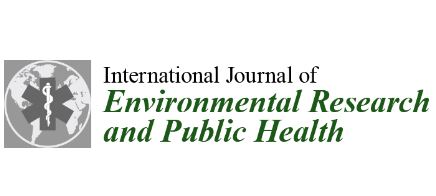
Garcia, Gian-Gabriel P.; Dehghanpoor, Ramin; Stringfellow, Erin J.; Gupta, Marichi; Rochelle, Jillian; Mason, Elizabeth; Pujol, Toyya A; Jalali, Mohammad S.
Identifying and Characterizing Medical Advice-Seekers on a Social Media Forum for Buprenorphine Use Journal Article
In: Int. J. Environ. Res. Public Health, vol. 19, no. 10, pp. 6281, 2022.
Abstract | Links | BibTeX | Tags: Substance use
@article{674513,
title = {Identifying and Characterizing Medical Advice-Seekers on a Social Media Forum for Buprenorphine Use},
author = {Gian-Gabriel P. Garcia and Ramin Dehghanpoor and Erin J. Stringfellow and Marichi Gupta and Jillian Rochelle and Elizabeth Mason and Toyya A Pujol and Mohammad S. Jalali},
url = {https://www.mdpi.com/1660-4601/19/10/6281/htm},
year = {2022},
date = {2022-05-22},
urldate = {2022-05-22},
journal = {Int. J. Environ. Res. Public Health},
volume = {19},
number = {10},
pages = {6281},
abstract = {Background: Online communities such as Reddit can provide social support for those recovering from opioid use disorder. However, it is unclear whether and how advice-seekers differ from other users. Our research addresses this gap by identifying key characteristics of r/suboxone users that predict advice-seeking behavior. Objective: The objective of this analysis is to identify and describe advice-seekers on Reddit for buprenorphine-naloxone use using text annotation, social network analysis, and statistical modeling techniques. Methods: We collected 5258 posts and their comments from Reddit between 2014 and 2019. Among 202 posts which met our inclusion criteria, we annotated each post to determine which were advice-seeking (n = 137) or not advice-seeking (n = 65). We also annotated each posting user’s buprenorphine-naloxone use status (current versus formerly taking and, if currently taking, whether inducting or tapering versus other stages) and quantified their connectedness using social network analysis. To analyze the relationship between Reddit users’ advice-seeking and their social connectivity and medication use status, we constructed four models which varied in their inclusion of explanatory variables for social connectedness and buprenorphine use status. Results: The stepwise model containing “total degree” (p = 0.002), “using: inducting/tapering” (p < 0.001), and “using: other” (p = 0.01) outperformed all other models. Reddit users with fewer connections and who are currently using buprenorphine-naloxone are more likely to seek advice than those who are well-connected and no longer using the medication, respectively. Importantly, advice-seeking behavior is most accurately predicted using a combination of network characteristics and medication use status, rather than either factor alone. Conclusions: Our findings provide insights for the clinical care of people recovering from opioid use disorder and the nature of online medical advice-seeking overall. Clinicians should be especially attentive (e.g., through frequent follow-up) to patients who are inducting or tapering buprenorphine-naloxone or signal limited social support.},
keywords = {Substance use},
pubstate = {published},
tppubtype = {article}
}

Deutsch, Arielle R.; Jalali, Mohammad S.; Stout, Sarah; Frerichs, Leah
Equitable Policies Need Equitable Practices: Alcohol-and Substance-Exposed Pregnancy as a Case Study Journal Article
In: Health Promotion Practice, 2022.
Links | BibTeX | Tags: Disparity and equity
@article{Deutsch2022,
title = {Equitable Policies Need Equitable Practices: Alcohol-and Substance-Exposed Pregnancy as a Case Study},
author = {Arielle R. Deutsch and Mohammad S. Jalali and Sarah Stout and Leah Frerichs},
url = {https://mj-lab.mgh.harvard.edu/wp-content/uploads/2022/12/Deutsch_2022_HPP.pdf},
doi = {10.1177/15248399221107605},
year = {2022},
date = {2022-05-11},
urldate = {2022-05-11},
journal = {Health Promotion Practice},
keywords = {Disparity and equity},
pubstate = {published},
tppubtype = {article}
}

Liao, Che-Yi; Garcia, Gian-Gabriel P.; DiGennaro, Catherine; Jalali, Mohammad S.
Racial Disparities in Opioid Overdose Deaths in Massachusetts Journal Article
In: JAMA Network Open, 2022.
Links | BibTeX | Tags: Disparity and equity, Substance use
@article{Liao2022,
title = {Racial Disparities in Opioid Overdose Deaths in Massachusetts},
author = {Che-Yi Liao and Gian-Gabriel P. Garcia and Catherine DiGennaro and Mohammad S. Jalali},
url = {https://mj-lab.mgh.harvard.edu/wp-content/uploads/2022/12/Liao_2022_JAMA_no.pdf},
doi = {10.1001/jamanetworkopen.2022.9081},
year = {2022},
date = {2022-05-01},
journal = {JAMA Network Open},
keywords = {Disparity and equity, Substance use},
pubstate = {published},
tppubtype = {article}
}
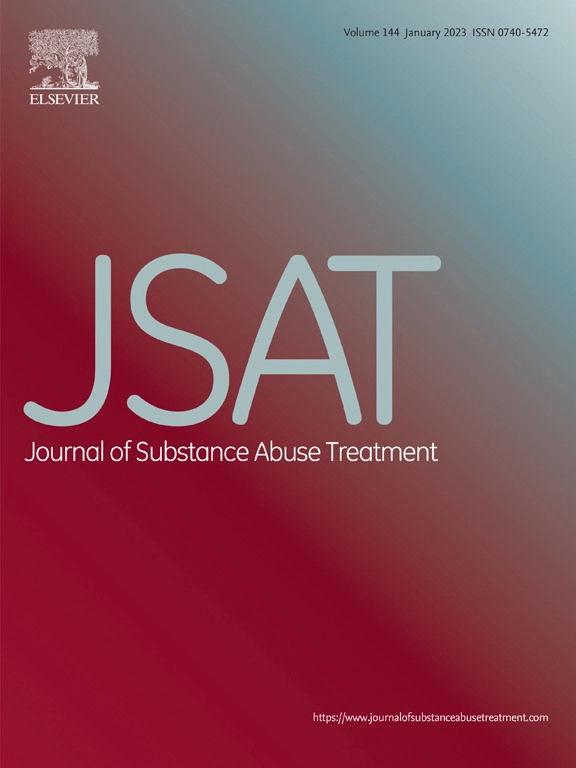
Weiner, Scott G; Carroll, Aleta D; Brisbon, Nicholas M; Rodriguez, Claudia P; Covahey, Charles; Stringfellow, Erin J.; DiGennaro, Catherine; Jalali, Mohammad S.; Wakeman, Sarah E.
Evaluating disparities in prescribing of naloxone after emergency department treatment of opioid overdose Journal Article
In: Journal of Substance Abuse Treatment, vol. 139, pp. 108785, 2022.
Links | BibTeX | Tags: Disparity and equity, Substance use
@article{Weiner2022,
title = {Evaluating disparities in prescribing of naloxone after emergency department treatment of opioid overdose},
author = {Scott G Weiner and Aleta D Carroll and Nicholas M Brisbon and Claudia P Rodriguez and Charles Covahey and Erin J. Stringfellow and Catherine DiGennaro and Mohammad S. Jalali and Sarah E. Wakeman},
url = {https://mj-lab.mgh.harvard.edu/wp-content/uploads/2022/12/Weiner_2022_JSAT.pdf},
doi = {10.1016/j.jsat.2022.108785},
year = {2022},
date = {2022-04-22},
urldate = {2022-04-22},
journal = {Journal of Substance Abuse Treatment},
volume = {139},
pages = {108785},
keywords = {Disparity and equity, Substance use},
pubstate = {published},
tppubtype = {article}
}

Beaulieu, Elizabeth; Spanjaart, Anne; Roes, Ashley; Rachet, Bernard; Dalle, Stéphane; Kersten, Marie José; Maucort-Boulch, Delphine; Jalali, Mohammad S.
Health-Related Quality of Life in Cancer Immunotherapy: A Systematic Perspective, Using Causal Loop Diagrams Journal Article
In: Quality of Life Research, vol. 31, pp. 2357-2366, 2022.
Abstract | Links | BibTeX | Tags: Cancer, Participatory modeling
@article{Beaulieu2022,
title = {Health-Related Quality of Life in Cancer Immunotherapy: A Systematic Perspective, Using Causal Loop Diagrams},
author = {Elizabeth Beaulieu and Anne Spanjaart and Ashley Roes and Bernard Rachet and Stéphane Dalle and Marie José Kersten and Delphine Maucort-Boulch and Mohammad S. Jalali},
doi = {10.1007/s11136-022-03110-5},
year = {2022},
date = {2022-03-19},
urldate = {2022-03-19},
journal = {Quality of Life Research},
volume = {31},
pages = {2357-2366},
abstract = {Purpose: System science offers a unique set of tools, including causal loop diagrams (CLDs), for stakeholders to better grasp the complexity of factors surrounding quality of life. Because the HRQoL of cancer immunotherapy patients exists within an intricate system affected by and affecting many factors across multiple dimensions, the development of a systems-level model can provide a powerful framework to aid the understanding of this complexity. We developed a CLD for quality of life (HRQoL) of cancer immunotherapy patients. Methods: We first apply a literature-based approach to construct a CLD for patients following immunotherapy. We then iteratively review and enhance the CLD through interviews with subject-matter experts. Results: Based on the reviewed literature and subject matter expert input, we produced a CLD representing the system surrounding cancer immunotherapy patients’ HRQoL. Several feedback loops are identified that span clinical experiences, oncology teams’ perceptions about immunotherapy, social support structures, and further research and development in cancer immunotherapy, in addition to other components. The CLD enables visualization of thought experiments regarding how a change anywhere in the system can ultimately worsen or improve patients’ HRQoL. Conclusion: The CLD illustrates the valuable contribution of a systems perspective to quality-of-life research. This systems-based qualitative representation gives insight on strategies to inhibit harmful effects, enhance beneficial effects, and inherent tradeoffs within the system. The CLD identifies gaps in the literature and offers a communication tool for diverse stakeholders. Our research method provides an example for studying the complexities of quality of life in other health domains. },
keywords = {Cancer, Participatory modeling},
pubstate = {published},
tppubtype = {article}
}
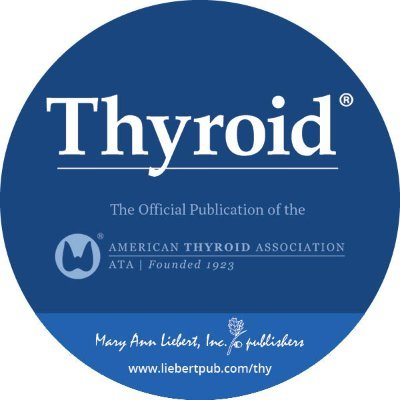
DiGennaro, Catherine; Vahdat, Vahab; Jalali, Mohammad S.; Toumi, Asmae; Watson, Tina; Gazelle, G Scott; Mercaldo, Nathaniel; Lubitz, Carrie C
In: Thyroid, vol. 32, no. 10, 2022.
@article{DiGennaro2022,
title = {Assessing Bias and Limitations of Clinical Validation Studies of Molecular Diagnostic Tests for Indeterminate Thyroid Nodules: Systematic Review and Meta-Analysis},
author = {Catherine DiGennaro and Vahab Vahdat and Mohammad S. Jalali and Asmae Toumi and Tina Watson and G Scott Gazelle and Nathaniel Mercaldo and Carrie C Lubitz},
url = {https://mj-lab.mgh.harvard.edu/wp-content/uploads/2022/12/Digennaro_2022_Thyroid.pdf},
doi = {10.1089/thy.2022.0269},
year = {2022},
date = {2022-03-18},
urldate = {2022-03-18},
journal = {Thyroid},
volume = {32},
number = {10},
keywords = {Cancer},
pubstate = {published},
tppubtype = {article}
}
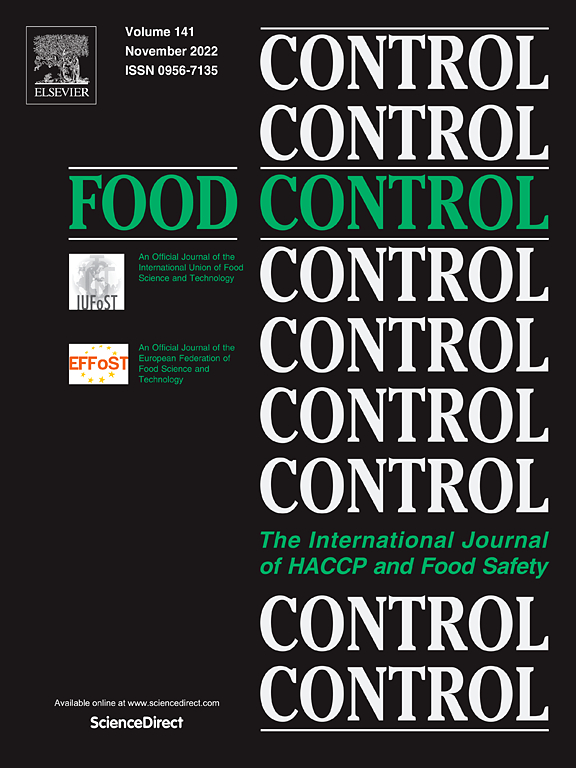
Horvat, Andrijana; Luning, Pieternel A; DiGennaro, Catherine; Rommens, Edien; van Daalen, Els; Koene, Miriam; Jalali, Mohammad S.
In: Food Control, vol. 114, 2022.
Abstract | Links | BibTeX | Tags: Simulation modeling
@article{Horvat2022,
title = {The impacts of biosecurity measures on Campylobacter contamination in broiler houses and slaughterhouses in the Netherlands: A simulation modelling approach},
author = {Horvat, Andrijana and Luning, Pieternel A and Catherine DiGennaro and Rommens, Edien and van Daalen, Els and Koene, Miriam and Mohammad S. Jalali},
url = {https://mj-lab.mgh.harvard.edu/campydynamics/},
year = {2022},
date = {2022-03-01},
urldate = {2022-03-01},
journal = {Food Control},
volume = {114},
abstract = {Intestinal campylobacteriosis, caused by Campylobacter ingestion, is the most reported zoonosis in the EU; it is societally costly and can lead to more severe sequelae. To reduce Campylobacter infections, biosecurity measures at both farms and slaughterhouses are warranted. However, the potential improvements achieved by these interventions have not been quantified. We used a systems science approach to develop a simulation model, synthesizing information from interviews with stakeholders in the Dutch broiler production industry and the current literature. The model includes both farms and slaughterhouses in a “system of systems,” helping to clarify the complexity of interrelated components of these systems and analyse the impact of various interventions. Insects, transportation crates, farm personnel, and catchers were identified as potential Campylobacter sources and modelled as elements of feedback loops. Insect control, farm hygiene, visitor control, thinning, and transportation control interventions were analysed. The model was shown to accurately describe the seasonality of Campylobacter, which supports its validity. Model simulation revealed that insect control interventions had the strongest impacts, followed by combined farm hygiene and visitor control, and combined thinning and transportation control. Insect control interventions alone reduced the peak percentage of contaminated chickens from 51% to 26% and the peak percentage of highly contaminated (>1000 CFU/g) neck samples of chicken carcasses from 13% to 8%. Implementing all interventions concurrently reduced the peak percentages of contaminated chickens to 5% and highly contaminated chicken neck samples to 2%. These results suggest that multiple biosecurity measures must be implemented to reduce Campylobacter contamination.
},
keywords = {Simulation modeling},
pubstate = {published},
tppubtype = {article}
}
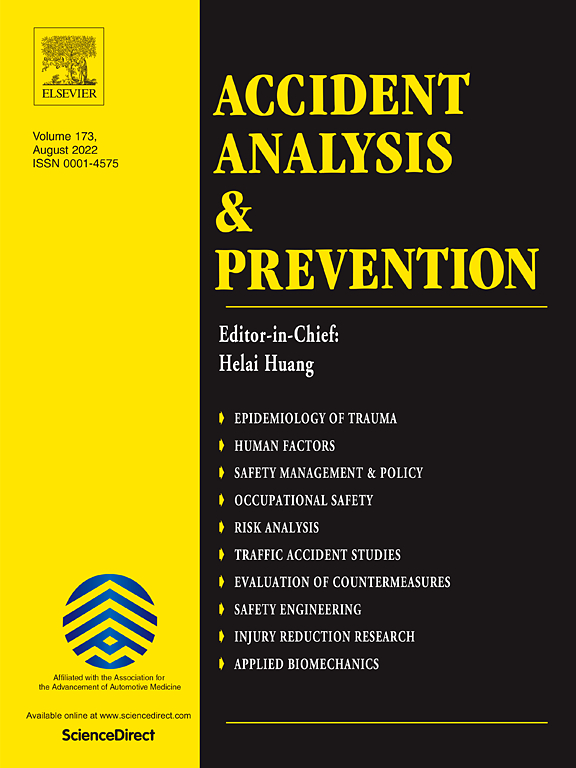
Beaulieu, Elizabeth; Naumann, Rebecca B; Deveaux, Genevieve; Wang, Lindsay; Stringfellow, Erin J.; Lich, Kristen Hassmiller; Jalali, Mohammad S.
Alcohol and Opioid Use Impacts on Road Safety-related Outcomes: Systematic Review Journal Article
In: Accident Analysis & Prevention, vol. 173, pp. 106713, 2022.
Abstract | Links | BibTeX | Tags: Substance use
@article{666820,
title = {Alcohol and Opioid Use Impacts on Road Safety-related Outcomes: Systematic Review},
author = {Elizabeth Beaulieu and Rebecca B Naumann and Genevieve Deveaux and Lindsay Wang and Erin J. Stringfellow and Kristen Hassmiller Lich and Mohammad S. Jalali},
url = {https://mj-lab.mgh.harvard.edu/wp-content/uploads/2022/12/Beaulieu_2022_AAP.pdf},
doi = {10.1016/j.aap.2022.106713},
year = {2022},
date = {2022-01-02},
urldate = {2022-01-02},
journal = {Accident Analysis & Prevention},
volume = {173},
pages = {106713},
abstract = {Connections between substance use, impairment, and road safety have been frequently researched. Yet, little is known about how simultaneous use of opioids and alcohol affects road safety outcomes, which is an increasingly critical link within the current landscape of the substance use environment and public health. Lack of this understanding is partly due to testing complications and data limitations. We define polysubstance use here as alcohol and opioids consumed together or within a small-time window such that both are present in the system. This polysubstance use is on the rise and produces greater health risks than when the substances are consumed separately. Given the increasing rate of opioid use, high prevalence of alcohol use, and dangers of polysubstance use, we aim to synthesize literature on the prevalence and impact of this polysubstance on road safety-related outcomes. We performed a systematic review of studies published between 1974 and 2020 that examined opioid and alcohol use exposures and road safety-related outcomes. Out of 644 initial findings, 20 studies were included in this review. Outcomes included motor vehicle crash injuries, deaths, or driver culpability; suspected driving under the influence; and simulated driving performance. Evidence from multiple sources showed a significant rise, approximately 1% to 7%, in the prevalence of opioids among fatally injured drivers in the U.S. from 1995 to 2016. Information published on the simultaneous presence of opioids and alcohol in people involved in crashes was scarce. The limited available findings point toward an overlap where up to 30% of opioid-positive people involved in a crash were also positive for alcohol. Studies also suggest a possibly elevated risk presented by this polysubstance use relative to the substances used alone, though the majority of identified studies did not estimate this association. The synthesized research indicates that alcohol and opioid use is not uncommon and may be increasing among people involved in adverse driving events. More research and better data are needed to improve estimates of association with road traffic-related outcomes, potentially improving substance testing in current surveillance systems or using linked data sets and other novel data sources to improve estimates.},
keywords = {Substance use},
pubstate = {published},
tppubtype = {article}
}

Li, Peiyi; Luo, Yunmei; Yu, Xuexin; Zeng, Zhi; Wen, Jin; Mason, Elizabeth; Li, Weimin; Jalali, Mohammad S.
Readiness of healthcare providers for e-hospitals: a cross-sectional analysis in China before the COVID-19 period Journal Article
In: BMJ Open, vol. 12, pp. e054169, 2022.
Links | BibTeX | Tags: Infectious diseases
@article{650797,
title = {Readiness of healthcare providers for e-hospitals: a cross-sectional analysis in China before the COVID-19 period},
author = {Peiyi Li and Yunmei Luo and Xuexin Yu and Zhi Zeng and Jin Wen and Elizabeth Mason and Weimin Li and Mohammad S. Jalali},
url = {https://mj-lab.mgh.harvard.edu/wp-content/uploads/2022/12/Li_2022_BMJOpen.pdf},
doi = {10.1136/bmjopen-2021-054169},
year = {2022},
date = {2022-01-01},
urldate = {2022-01-01},
journal = {BMJ Open},
volume = {12},
pages = {e054169},
keywords = {Infectious diseases},
pubstate = {published},
tppubtype = {article}
}
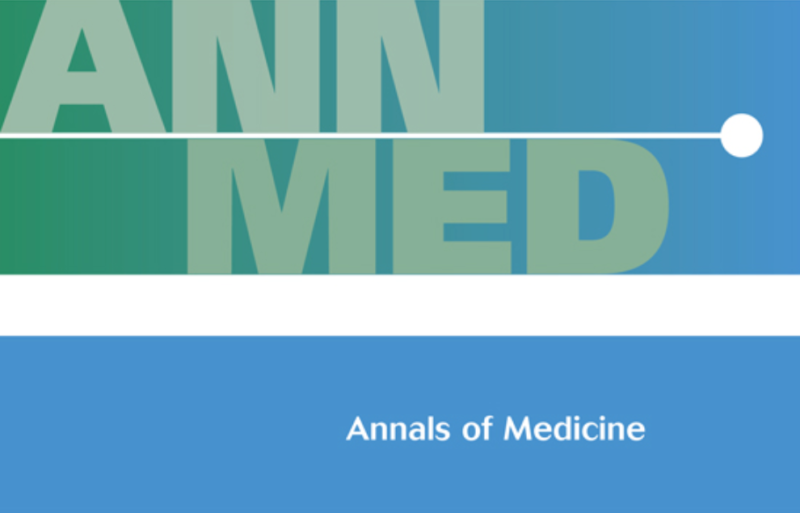
Garcia, Gian-Gabriel P.; Stringfellow, Erin J.; DiGennaro, Catherine; Poellinger, Nicole; Wood, Jaden; Wakeman, Sarah; Jalali, Mohammad S.
Opioid Overdose Decedent Characteristics during COVID-19 Journal Article
In: Annals of Medicine, vol. 54, iss. 1, 2022.
Abstract | Links | BibTeX | Tags: Substance use
@article{Garcia2021,
title = {Opioid Overdose Decedent Characteristics during COVID-19},
author = {Gian-Gabriel P. Garcia and Erin J. Stringfellow and Catherine DiGennaro and Nicole Poellinger and Jaden Wood and Sarah Wakeman and Mohammad S. Jalali},
url = {https://mj-lab.mgh.harvard.edu/wp-content/uploads/2022/12/Garcia_2022_AOM.pdf},
doi = {10.1080/07853890.2022.2067350},
year = {2022},
date = {2022-01-01},
urldate = {2022-01-01},
journal = {Annals of Medicine},
volume = {54},
issue = {1},
abstract = {Introduction: Alongside the emergence of COVID-19 in the United States, several reports highlighted increasing rates of opioid overdose from preliminary data. Yet, little is known about how state-level opioid overdose death trends and decedent characteristics have evolved using official death records.
Methods: We requested vital statistics data from 2018-2020 from all 50 states and the District of Columbia, receiving data from 14 states. Accounting for COVID-19, we excluded states without data past March 2020, leaving 11 states for analysis. We defined state-specific analysis periods from March 13 until the latest reliable date in each state's data, then conducted retrospective year-over-year analyses comparing opioid-related overdose death rates, the presence of specific opioids and other psychoactive substances, and decedents' sex, race, and age from 2020 to 2019 and 2019 to 2018 within each state's analysis period. We assessed whether significant changes in 2020 vs. 2019 in opioid overdose deaths were new or continuing trends using joinpoint regression.
Results: We found significant increases in opioid-related overdose death rates in Alaska (55.3%), Colorado (80.2%), Indiana (40.1%), Nevada (50.0%), North Carolina (30.5%), Rhode Island (29.6%), and Virginia (66.4%) - all continuing previous trends. Increases in synthetic opioid-involved overdose deaths were new in Alaska (136.5%), Indiana (27.6%), and Virginia (16.5%), whilst continuing in Colorado (44.4%), Connecticut (3.6%), Nevada (75.0%), and North Carolina (14.6%). We found new increases in male decedents in Indiana (12.0%), and continuing increases in Colorado (15.2%). We also found continuing increases in Black non-Hispanic decedents in Massachusetts (43.9%) and Virginia (33.7%).
Conclusion: This research analyzes vital statistics data from 11 states, highlighting new trends in opioid overdose deaths and decedent characteristics across 10 of these states. These findings can inform state-specific public health interventions and highlight the need for timely and comprehensive fatal opioid overdose data, especially amidst concurrent crises such as COVID-19. Key messages:Our results highlight shifts in opioid overdose trends during the COVID-19 pandemic that cannot otherwise be extracted from aggregated or provisional opioid overdose death data such as those published by the Centres for Disease Control and Prevention.Fentanyl and other synthetic opioids continue to drive increases in fatal overdoses, making it difficult to separate these trends from any possible COVID-19-related factors.Black non-Hispanic people are making up an increasing proportion of opioid overdose deaths in some states.State-specific limitations and variations in data-reporting for vital statistics make it challenging to acquire and analyse up-to-date data on opioid-related overdose deaths. More timely and comprehensive data are needed to generate broader insights on the nature of the intersecting opioid and COVID-19 crises.},
keywords = {Substance use},
pubstate = {published},
tppubtype = {article}
}
Methods: We requested vital statistics data from 2018-2020 from all 50 states and the District of Columbia, receiving data from 14 states. Accounting for COVID-19, we excluded states without data past March 2020, leaving 11 states for analysis. We defined state-specific analysis periods from March 13 until the latest reliable date in each state's data, then conducted retrospective year-over-year analyses comparing opioid-related overdose death rates, the presence of specific opioids and other psychoactive substances, and decedents' sex, race, and age from 2020 to 2019 and 2019 to 2018 within each state's analysis period. We assessed whether significant changes in 2020 vs. 2019 in opioid overdose deaths were new or continuing trends using joinpoint regression.
Results: We found significant increases in opioid-related overdose death rates in Alaska (55.3%), Colorado (80.2%), Indiana (40.1%), Nevada (50.0%), North Carolina (30.5%), Rhode Island (29.6%), and Virginia (66.4%) - all continuing previous trends. Increases in synthetic opioid-involved overdose deaths were new in Alaska (136.5%), Indiana (27.6%), and Virginia (16.5%), whilst continuing in Colorado (44.4%), Connecticut (3.6%), Nevada (75.0%), and North Carolina (14.6%). We found new increases in male decedents in Indiana (12.0%), and continuing increases in Colorado (15.2%). We also found continuing increases in Black non-Hispanic decedents in Massachusetts (43.9%) and Virginia (33.7%).
Conclusion: This research analyzes vital statistics data from 11 states, highlighting new trends in opioid overdose deaths and decedent characteristics across 10 of these states. These findings can inform state-specific public health interventions and highlight the need for timely and comprehensive fatal opioid overdose data, especially amidst concurrent crises such as COVID-19. Key messages:Our results highlight shifts in opioid overdose trends during the COVID-19 pandemic that cannot otherwise be extracted from aggregated or provisional opioid overdose death data such as those published by the Centres for Disease Control and Prevention.Fentanyl and other synthetic opioids continue to drive increases in fatal overdoses, making it difficult to separate these trends from any possible COVID-19-related factors.Black non-Hispanic people are making up an increasing proportion of opioid overdose deaths in some states.State-specific limitations and variations in data-reporting for vital statistics make it challenging to acquire and analyse up-to-date data on opioid-related overdose deaths. More timely and comprehensive data are needed to generate broader insights on the nature of the intersecting opioid and COVID-19 crises.
2021
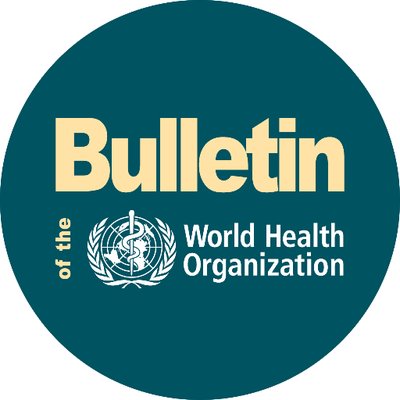
Decouttere, Catherine; Banzimana, Stany; Davidsen, Pal; Riet, Carla Van; Vandermeulen, Corinne; Mason, Elizabeth; Jalali, Mohammad S.; Vandaele, Nico
Insights into vaccine hesitancy from systems thinking, Rwanda Journal Article
In: 2021.
Links | BibTeX | Tags: Infectious diseases
@article{668159,
title = {Insights into vaccine hesitancy from systems thinking, Rwanda},
author = {Catherine Decouttere and Stany Banzimana and Pal Davidsen and Carla Van Riet and Corinne Vandermeulen and Elizabeth Mason and Mohammad S. Jalali and Nico Vandaele},
url = {https://mj-lab.mgh.harvard.edu/wp-content/uploads/2024/12/Decouttere_who_2021.pdf},
year = {2021},
date = {2021-08-03},
urldate = {2021-08-03},
keywords = {Infectious diseases},
pubstate = {published},
tppubtype = {article}
}
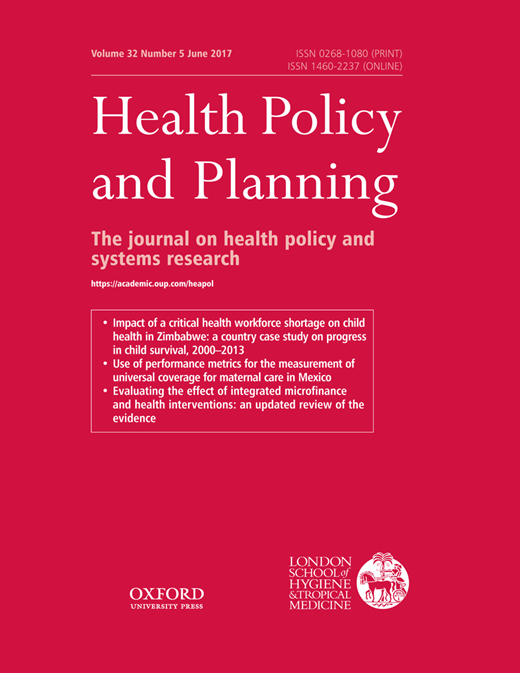
Leerapan, Borwornsom; Kaewkamjornchai, Phanuwich S; Atun, Rifat A; Jalali, Mohammad S.
How Systems Respond to Policies: Unintended Consequences of COVID-19 Lockdown Policies in Thailand Journal Article
In: 2021.
Links | BibTeX | Tags: Infectious diseases
@article{669755,
title = {How Systems Respond to Policies: Unintended Consequences of COVID-19 Lockdown Policies in Thailand},
author = {Borwornsom Leerapan and Phanuwich S Kaewkamjornchai and Rifat A Atun and Mohammad S. Jalali},
url = {https://mj-lab.mgh.harvard.edu/wp-content/uploads/2024/12/Leerapan_Thailand_2021.pdf},
year = {2021},
date = {2021-08-02},
urldate = {2021-08-02},
keywords = {Infectious diseases},
pubstate = {published},
tppubtype = {article}
}
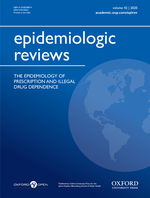
magdalena Cerdá,; Jalali, Mohammad S.; Hamilton, A; Digennaro, C; Hyder, A; Santaella-Tenorio, J; Kaur, N; Wang, C; Keyes, Katherine M.
A Systematic Review of Simulation Models to Track and Address the Opioid Crisis Journal Article
In: 2021.
Abstract | Links | BibTeX | Tags: Substance use
@article{666785,
title = {A Systematic Review of Simulation Models to Track and Address the Opioid Crisis},
author = {magdalena Cerdá and Mohammad S. Jalali and A Hamilton and C Digennaro and A Hyder and J Santaella-Tenorio and N Kaur and C Wang and Katherine M. Keyes},
url = {https://mj-lab.mgh.harvard.edu/wp-content/uploads/2024/12/Cerda_sysrevi_opioid_models_2021.pdf},
year = {2021},
date = {2021-07-30},
urldate = {2021-07-30},
abstract = {The opioid overdose crisis is driven by an intersecting set of social, structural, and economic forces. Simulation models offer a tool to help us understand and address this complex, dynamic, nonlinear, social phenomenon. We conducted a systematic review of the literature on simulation models of opioid use and overdose up to September 2019. We extracted modeling types, target populations, interventions, and findings. Further, we created a database of model parameters used for model calibration, and evaluated study transparency and reproducibility. Of the 1,381 articles screened, we identified 72 eligible articles. The most frequent types of models were Markov (26%), compartmental (25%), system dynamics (19%), and Agent-Based models (18%). Almost half (46%) evaluated intervention cost-effectiveness, while 29% of studies focused on treatment and harm reduction services for people with opioid use disorder (OUD). More than half (57%) calibrated their models to empirical data, and 31% discussed validation approaches used in their modeling process. From the 51 studies that provided data on model parameters, we mapped out the data sources for parameters on opioid use, OUD, OUD treatment, cessation/relapse, emergency medical services, and mortality. This database offers a tool that future modelers can use to identify model inputs, and to evaluate comparability of their models to prior work. Future applications of simulation models to this field should actively tackle key methodological challenges, including the potential for bias in the choice of parameter inputs, investment in model calibration and validation, and transparency in the assumptions and mechanics of simulation models to facilitate reproducibility.},
keywords = {Substance use},
pubstate = {published},
tppubtype = {article}
}

Jalali, Mohammad S.; DiGennaro, Catherine; Guitar, Abby; Lew, Karen; Rahmandad, Hazhir
Evolution and Reproducibility of Simulation Modeling in Epidemiology and Health Policy over Half a Century Journal Article
In: Epidemiologic Reviews, 2021.
Abstract | Links | BibTeX | Tags: Simulation modeling
@article{643800,
title = {Evolution and Reproducibility of Simulation Modeling in Epidemiology and Health Policy over Half a Century},
author = {Mohammad S. Jalali and Catherine DiGennaro and Abby Guitar and Karen Lew and Hazhir Rahmandad},
url = {https://mj-lab.mgh.harvard.edu/wp-content/uploads/2024/12/Jalali_evolution_reproducibility_2021.pdf},
year = {2021},
date = {2021-07-29},
urldate = {2021-07-29},
journal = {Epidemiologic Reviews},
abstract = {Background: Simulation models are increasingly used to inform health policy. We provide an overview of applications of simulation models in health policy, analyze the use of best reporting practices, and assess the reproducibility of existing studies.
Method: Studies that used simulation modeling as the core method to address any health policy questions were included. Health policy domain distribution and changes in quality over time were well-characterized using MeSH terms and model characteristics, respectively. Reproducibility was assessed using predefined, categorical criteria.
Findings: 1,613 studies were analyzed. We found an exponential growth in the number of studies over the past half century, with the highest growth in dynamic modeling approaches. The largest subset of studies is focused on disease policy models (70%), within which pathological conditions, viral diseases, neoplasms, and cardiovascular diseases account for one-third of the articles. Nearly half of the studies do not report the details of their models. A subset of 100 articles (50 highly cited and 50 random) were selected to analyze in-depth criteria for reporting quality and reproducibility. Significant gaps between best modeling practices could be found in both the random and highly cited samples; only seven of 26 in-depth evaluation criteria were satisfied by more than 80% of samples. We found no evidence that the highly cited samples adhered better to the modeling best practices.
Interpretation: Our results suggest crucial areas for increased applications of simulation modeling, and opportunities to enhance the rigor and documentation in the conduct and reporting of simulation modeling in health policy.},
keywords = {Simulation modeling},
pubstate = {published},
tppubtype = {article}
}
Method: Studies that used simulation modeling as the core method to address any health policy questions were included. Health policy domain distribution and changes in quality over time were well-characterized using MeSH terms and model characteristics, respectively. Reproducibility was assessed using predefined, categorical criteria.
Findings: 1,613 studies were analyzed. We found an exponential growth in the number of studies over the past half century, with the highest growth in dynamic modeling approaches. The largest subset of studies is focused on disease policy models (70%), within which pathological conditions, viral diseases, neoplasms, and cardiovascular diseases account for one-third of the articles. Nearly half of the studies do not report the details of their models. A subset of 100 articles (50 highly cited and 50 random) were selected to analyze in-depth criteria for reporting quality and reproducibility. Significant gaps between best modeling practices could be found in both the random and highly cited samples; only seven of 26 in-depth evaluation criteria were satisfied by more than 80% of samples. We found no evidence that the highly cited samples adhered better to the modeling best practices.
Interpretation: Our results suggest crucial areas for increased applications of simulation modeling, and opportunities to enhance the rigor and documentation in the conduct and reporting of simulation modeling in health policy.
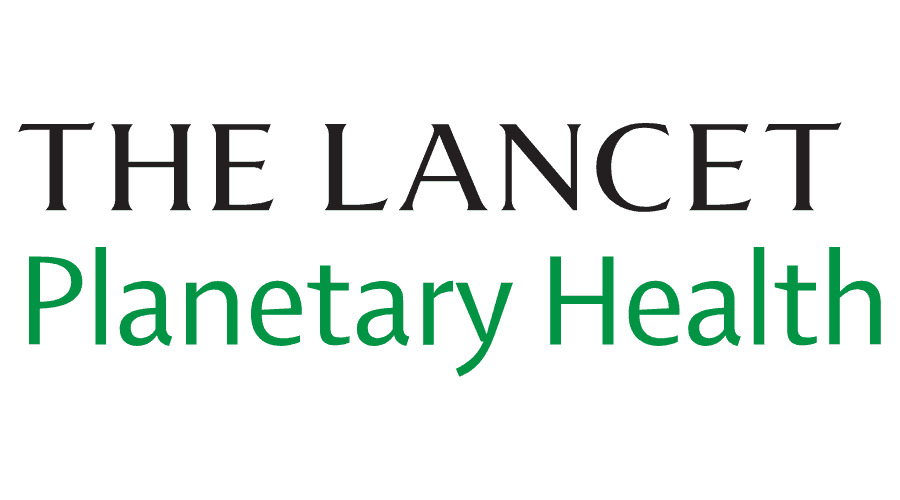
Xu, Ran; Rahmandad, Hazhir; Gupta, Marichi; DiGennaro, Catherine; Ghaffarzadegan, Navid; Jalali, Mohammad S.
Weather, air pollution, and SARS-CoV-2 transmission: a global analysis Journal Article
In: Lancet Planetary Health, 2021.
Abstract | Links | BibTeX | Tags: Infectious diseases
@article{651235,
title = {Weather, air pollution, and SARS-CoV-2 transmission: a global analysis},
author = {Ran Xu and Hazhir Rahmandad and Marichi Gupta and Catherine DiGennaro and Navid Ghaffarzadegan and Mohammad S. Jalali},
url = {https://mj-lab.mgh.harvard.edu/wp-content/uploads/2024/12/Xu_weather_covid_2021.pdf},
year = {2021},
date = {2021-07-29},
urldate = {2021-07-29},
journal = {Lancet Planetary Health},
abstract = {Background: Understanding and projecting the spread of COVID-19 requires reliable estimates of how weather components are associated with the transmission of the virus. Prior research on this topic has been inconclusive. Identifying key challenges to reliable estimation of weather impact on transmission we study this question using one of the largest assembled databases of COVID-19 infections and weather.Methods: We assemble a dataset that includes virus transmission and weather data across 3,739 locations from December 12, 2019 to April 22, 2020. Using simulation, we identify key challenges to reliable estimation of weather impacts on transmission, design a statistical method to overcome these challenges, and validate it in a blinded simulation study. Using this method and controlling for location-specific response trends we estimate how different weather variables are associated with the reproduction number for COVID-19. We then use the estimates to project the relative weather-related risk of COVID-19 transmission across the world and in large cities.Results: We show that the delay between exposure and detection of infection complicates the estimation of weather impact on COVID-19 transmission, potentially explaining significant variability in results to-date. Correcting for that distributed delay and offering conservative estimates, we find a negative relationship between temperatures above 25 degrees Celsius and estimated reproduction number (R ̂), with each degree Celsius associated with a 3.1% (95% CI, 1.5% to 4.8%) reduction in R ̂. Higher levels of relative humidity strengthen the negative effect of temperature above 25 degrees. Moreover, one millibar of additional pressure increases R ̂ by approximately 0.8 percent (95% CI, 0.6% to 1%) at the median pressure (1016 millibars) in our sample. We also find significant positive effects for wind speed, precipitation, and diurnal temperature on R ̂. Sensitivity analysis and simulations show that results are robust to multiple assumptions. Despite conservative estimates, weather effects are associated with a 43% change in R ̂ between the 5th and 95th percentile of weather conditions in our sample.Conclusions: These results provide evidence for the relationship between several weather variables and the spread of COVID-19. However, the (conservatively) estimated relationships are not strong enough to seasonally control the epidemic in most locations.
[["fid":"715368","view_mode":"default","type":"media","attributes":"height":"498","width":"832","style":"width: 700px; height: 419px;","alt":"weather_conditions_and_covid19","class":"media-element file-default"]]
Online simulator: https://projects.iq.harvard.edu/covid19},
keywords = {Infectious diseases},
pubstate = {published},
tppubtype = {article}
}
[["fid":"715368","view_mode":"default","type":"media","attributes":"height":"498","width":"832","style":"width: 700px; height: 419px;","alt":"weather_conditions_and_covid19","class":"media-element file-default"]]
Online simulator: https://projects.iq.harvard.edu/covid19

Stringfellow, Erin J.; Humphreys, Keith; Jalali, Mohammad S.
Removing The X-Waiver Is One Small Step Toward Increasing Treatment Of Opioid Use Disorder, But Great Leaps Are Needed Journal Article
In: Health Affairs Forefront, 2021.
Links | BibTeX | Tags: Substance use
@article{nokey,
title = {Removing The X-Waiver Is One Small Step Toward Increasing Treatment Of Opioid Use Disorder, But Great Leaps Are Needed},
author = {Erin J. Stringfellow and Keith Humphreys and Mohammad S. Jalali},
url = {https://mj-lab.mgh.harvard.edu/wp-content/uploads/2023/05/Removing_X_Waiver.pdf},
year = {2021},
date = {2021-04-22},
journal = {Health Affairs Forefront},
keywords = {Substance use},
pubstate = {published},
tppubtype = {article}
}
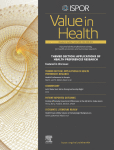
Beaulieu, Elizabeth; DiGennaro, Catherine; Stringfellow, Erin J.; Connolly, Ava; Hamilton, Ava; Hyder, Ayaz; Cerda, Magdalena; Keyes, Katherine M.; Jalali, Mohammad S.
Economic Evaluation in Opioids Modeling: Systematic Review Journal Article
In: Value in Health, vol. 24, no. 2, pp. 158-173, 2021.
Abstract | Links | BibTeX | Tags: Substance use
@article{650798,
title = {Economic Evaluation in Opioids Modeling: Systematic Review},
author = {Elizabeth Beaulieu and Catherine DiGennaro and Erin J. Stringfellow and Ava Connolly and Ava Hamilton and Ayaz Hyder and Magdalena Cerda and Katherine M. Keyes and Mohammad S. Jalali},
url = {https://scholar.harvard.edu/files/jalali/files/economic_evaluation_in_opioid_modeling.pdf
https://scholar.harvard.edu/files/jalali/files/supplement_economic_evaluation_in_opioid_modeling.pdf},
year = {2021},
date = {2021-01-01},
urldate = {2021-01-01},
journal = {Value in Health},
volume = {24},
number = {2},
pages = {158-173},
abstract = {ObjectivesThe rapid increase in opioid overdose and opioid use disorder (OUD) over the past 20 years is a complex problem associated with significant economic costs for healthcare systems and society. Simulation models have been developed to capture and identify ways to manage this complexity and to evaluate the potential costs of different strategies to reduce overdoses and OUD. A review of simulation-based economic evaluations is warranted to fully characterize this set of literature.
MethodsA systematic review of simulation-based economic evaluation (SBEE) studies in opioid research was initiated by searches in PubMed, EMBASE, and EbscoHOST. Extraction of a predefined set of items and a quality assessment were performed for each study.
ResultsThe screening process resulted in 23 SBEE studies ranging by year of publication from 1999 to 2019. Methodological quality of the cost analyses was moderately high. The most frequently evaluated strategies were methadone and buprenorphine maintenance treatments; the only harm reduction strategy explored was naloxone distribution. These strategies were consistently found to be cost-effective, especially naloxone distribution and methadone maintenance. Prevention strategies were limited to abuse-deterrent opioid formulations. Less than half (39%) of analyses adopted a societal perspective in their estimation of costs and effects from an opioid-related intervention. Prevention strategies and studiestextquoteright accounting for patient and physician preference, changing costs, or result stratification were largely ignored in these SBEEs.
ConclusionThe review shows consistently favorable cost analysis findings for naloxone distribution strategies and opioid agonist treatments and identifies major gaps for future research.},
keywords = {Substance use},
pubstate = {published},
tppubtype = {article}
}
MethodsA systematic review of simulation-based economic evaluation (SBEE) studies in opioid research was initiated by searches in PubMed, EMBASE, and EbscoHOST. Extraction of a predefined set of items and a quality assessment were performed for each study.
ResultsThe screening process resulted in 23 SBEE studies ranging by year of publication from 1999 to 2019. Methodological quality of the cost analyses was moderately high. The most frequently evaluated strategies were methadone and buprenorphine maintenance treatments; the only harm reduction strategy explored was naloxone distribution. These strategies were consistently found to be cost-effective, especially naloxone distribution and methadone maintenance. Prevention strategies were limited to abuse-deterrent opioid formulations. Less than half (39%) of analyses adopted a societal perspective in their estimation of costs and effects from an opioid-related intervention. Prevention strategies and studiestextquoteright accounting for patient and physician preference, changing costs, or result stratification were largely ignored in these SBEEs.
ConclusionThe review shows consistently favorable cost analysis findings for naloxone distribution strategies and opioid agonist treatments and identifies major gaps for future research.
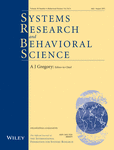
Deutsch, Arielle R.; Lustfield, Rebecca; Jalali, Mohammad S.
In: 2021.
Abstract | Links | BibTeX | Tags: Disparity and equity, Participatory modeling
@article{651231,
title = {Community-based System Dynamics Modeling of Sensitive Public Health Issues: Maximizing Diverse Representation of Individuals with Personal Experiences},
author = {Arielle R. Deutsch and Rebecca Lustfield and Mohammad S. Jalali},
url = {https://scholar.harvard.edu/files/jalali/files/community_based_sd_modeling.pdf},
year = {2021},
date = {2021-01-01},
urldate = {2021-01-01},
abstract = {Community-based system dynamics (CBSD) models enhance our understanding of stigmatized public health issues and related health disparities. The accuracy and usefulness of these models depend upon the individuals who take part in group modeling sessions. Marginalized individuals that are personally impacted by these health issues are critical in the function and development of the models. However, the extent of inclusion varies between studies since such individuals are often hard to recruit. There is substantial diversity in how individuals experience a stigmatized public health issue and with the underrepresentation of individuals with personal experience, research may conclude in biased model development. The purpose of this study was to explore a method that would increase representation for individuals with personal experience of stigmatized issues in model development. We used a case study from a CBSD project on the association between alcohol misuse (AM) and intimate partner violence (IPV) within a Northern Plains American Indian community. Group model building sessions were held at three community organizations: a faith-based re-entry program, a substance use rehabilitation program for pregnant women and mothers, and a domestic violence shelter. Session participants (clients of these organizations) were quick to understand the systems method and were engaged in the modeling process. There were few similarities between the three CBSD models. Each model contributed unique system components, and a consolidated model provided a rich picture of the complex AM-IPV system, as well as the ways in which health disparities are maintained. Coupled with an emphasis on transparency and trust building between researchers and modelers, our approach illuminated the diversity of ways in which individuals with personal experience can perceive AM-IPV systems. Using similar strategies for model building can complement existing efforts to build representative models for stigmatized public health issues within communities.},
keywords = {Disparity and equity, Participatory modeling},
pubstate = {published},
tppubtype = {article}
}

Gupta, Marichi; Bansal, Aditya; Jain, Bhav; Rochelle, Jillian; Oak, Atharv; Jalali, Mohammad S.
Whether the Weather Will Help Us Weather the COVID-19 Pandemic: Using Machine Learning to Measure Twitter Users’ Perceptions Journal Article
In: International Journal of Medical Informatics, vol. 145, pp. 104340, 2021.
Abstract | Links | BibTeX | Tags: Infectious diseases
@article{660470,
title = {Whether the Weather Will Help Us Weather the COVID-19 Pandemic: Using Machine Learning to Measure Twitter Users’ Perceptions},
author = {Marichi Gupta and Aditya Bansal and Bhav Jain and Jillian Rochelle and Atharv Oak and Mohammad S. Jalali},
url = {https://scholar.harvard.edu/files/jalali/files/perceptions_weather_and_covid19.pdf},
year = {2021},
date = {2021-01-01},
urldate = {2021-01-01},
journal = {International Journal of Medical Informatics},
volume = {145},
pages = {104340},
abstract = {Objective: The potential ability for weather to affect SARS-CoV-2 transmission has been an area of controversial discussion during the COVID-19 pandemic. Individualstextquoteright perceptions of the impact of weather can inform their adherence to public health guidelines; however, there is no measure of their perceptions. We quantified Twitter userstextquoteright perceptions of the effect of weather and analyzed how they evolved with respect to real-world events and time.
Materials and Methods: We collected 166,005 tweets posted between January 23 and June 22, 2020 and employed machine learning/natural language processing techniques to filter for relevant tweets, classify them by the type of effect they claimed, and identify topics of discussion.
Results: We identified 28,555 relevant tweets and estimate that 40.4% indicate uncertainty about weathertextquoterights impact, 33.5% indicate no effect, and 26.1% indicate some effect. We tracked changes in these proportions over time. Topic modeling revealed major latent areas of discussion.
Discussion: There is no consensus among the public for weathertextquoterights potential impact. Earlier months were characterized by tweets that were uncertain of weathertextquoterights effect or claimed no effect; later, the portion of tweets claiming some effect of weather increased. Tweets claiming no effect of weather comprised the largest class by June. Major topics of discussion included comparisons to influenzatextquoterights seasonality, President Trumptextquoterights comments on weathertextquoterights effect, and social distancing.
Conclusion: There is a major gap between scientific evidence and public opinion of weathertextquoterights impacts on COVID-19. We provide evidence of publictextquoterights misconceptions and topics of discussion, which can inform public health communications.
[["fid":"715366","view_mode":"default","type":"media","attributes":"height":"713","width":"1249","style":"width: 700px; height: 400px;","alt":"Weather tweets","class":"media-element file-default"]]},
keywords = {Infectious diseases},
pubstate = {published},
tppubtype = {article}
}
Materials and Methods: We collected 166,005 tweets posted between January 23 and June 22, 2020 and employed machine learning/natural language processing techniques to filter for relevant tweets, classify them by the type of effect they claimed, and identify topics of discussion.
Results: We identified 28,555 relevant tweets and estimate that 40.4% indicate uncertainty about weathertextquoterights impact, 33.5% indicate no effect, and 26.1% indicate some effect. We tracked changes in these proportions over time. Topic modeling revealed major latent areas of discussion.
Discussion: There is no consensus among the public for weathertextquoterights potential impact. Earlier months were characterized by tweets that were uncertain of weathertextquoterights effect or claimed no effect; later, the portion of tweets claiming some effect of weather increased. Tweets claiming no effect of weather comprised the largest class by June. Major topics of discussion included comparisons to influenzatextquoterights seasonality, President Trumptextquoterights comments on weathertextquoterights effect, and social distancing.
Conclusion: There is a major gap between scientific evidence and public opinion of weathertextquoterights impacts on COVID-19. We provide evidence of publictextquoterights misconceptions and topics of discussion, which can inform public health communications.
[["fid":"715366","view_mode":"default","type":"media","attributes":"height":"713","width":"1249","style":"width: 700px; height: 400px;","alt":"Weather tweets","class":"media-element file-default"]]
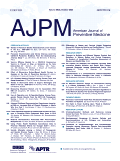
Jalali, Mohammad S.; Ewing, Emily; Bannister, Calvin B.; Glos, Lukas; Eggers, Sara; Lim, Tse Yang; Stringfellow, Erin; Stafford, Celia; Pacula, Rosalie Liccardo; Jalal, Hawre; Kazemi-Tabriz, Reza
Data Needs in Opioid Systems Modeling: Challenges and Future Directions Journal Article
In: American Journal of Preventive Medicine, vol. 60, no. 2, pp. e95-e105, 2021.
Abstract | Links | BibTeX | Tags: Substance use
@article{661054,
title = {Data Needs in Opioid Systems Modeling: Challenges and Future Directions},
author = {Mohammad S. Jalali and Emily Ewing and Calvin B. Bannister and Lukas Glos and Sara Eggers and Tse Yang Lim and Erin Stringfellow and Celia Stafford and Rosalie Liccardo Pacula and Hawre Jalal and Reza Kazemi-Tabriz},
url = {https://scholar.harvard.edu/files/jalali/files/slides_data_challenges_in_opioid_systems_modeling.pdf
https://scholar.harvard.edu/files/jalali/files/data_needs_opioids_modeling.pdf},
year = {2021},
date = {2021-01-01},
urldate = {2021-01-01},
journal = {American Journal of Preventive Medicine},
volume = {60},
number = {2},
pages = {e95-e105},
abstract = {Background: The opioid crisis is a pervasive public health threat in the U.S. Simulation modeling approaches that integrate a systems perspective are used to understand the complexity of this crisis and to analyze what policy interventions can best address it. However, limitations in currently available data sources can hamper the quantification of these models.
Methods: To understand and discuss data needs and challenges for opioid systems modeling, a meeting of federal partners, modeling teams, and data experts was held at the U.S. Food and Drug Administration in April 2019. This paper synthesizes the meeting discussions and interprets them in the context of ongoing simulation modeling work.
Results: The current landscape of national-level quantitative data sources of potential use in opioid systems modeling is identified, and significant issues within data sources are discussed. Major recommendations on how to improve data sources are to: maintain close collaboration among modeling teams; enhance data collection to better fit modeling needs; focus on bridging the most crucial information gaps; engage in direct and regular interaction between modelers and data experts; and gain a clearer definition of policymakerstextquoteright research questions and policy goals.
Conclusions: This article provides an important step in identifying and discussing data challenges in opioid research in general and opioid systems modeling in particular. It also identifies opportunities for systems modelers and government agencies to improve opioid systems models.},
keywords = {Substance use},
pubstate = {published},
tppubtype = {article}
}
Methods: To understand and discuss data needs and challenges for opioid systems modeling, a meeting of federal partners, modeling teams, and data experts was held at the U.S. Food and Drug Administration in April 2019. This paper synthesizes the meeting discussions and interprets them in the context of ongoing simulation modeling work.
Results: The current landscape of national-level quantitative data sources of potential use in opioid systems modeling is identified, and significant issues within data sources are discussed. Major recommendations on how to improve data sources are to: maintain close collaboration among modeling teams; enhance data collection to better fit modeling needs; focus on bridging the most crucial information gaps; engage in direct and regular interaction between modelers and data experts; and gain a clearer definition of policymakerstextquoteright research questions and policy goals.
Conclusions: This article provides an important step in identifying and discussing data challenges in opioid research in general and opioid systems modeling in particular. It also identifies opportunities for systems modelers and government agencies to improve opioid systems models.

DiGennaro, Catherine; Garcia, Gian-Gabriel P; Stringfellow, Erin J.; Wakeman, Sarah; Jalali, Mohammad S.
Changes in Characteristics of Drug Overdose Death Trends during the COVID-19 Pandemic Journal Article
In: International Journal of Drug Policy, 2021.
Abstract | Links | BibTeX | Tags: Substance use
@article{665500,
title = {Changes in Characteristics of Drug Overdose Death Trends during the COVID-19 Pandemic},
author = {Catherine DiGennaro and Gian-Gabriel P Garcia and Erin J. Stringfellow and Sarah Wakeman and Mohammad S. Jalali},
url = {https://mj-lab.mgh.harvard.edu/wp-content/uploads/2021/10/Overdoses_COVID19_MA.pdf},
year = {2021},
date = {2021-01-01},
urldate = {2021-01-01},
journal = {International Journal of Drug Policy},
abstract = {Background: Reports analyzing drug overdose (OD) mortality data during the COVID-19 pandemic are limited. Outcomes across states are heterogenous, necessitating assessments of associations between COVID-19 and OD deaths on a state-by-state level. This report aims to analyze trends in OD deaths in Massachusetts during COVID-19.
Methods: Analyzing 3,924 death records, we characterize opioid-, cocaine-, and amphetamine-involved OD mortality and substance co-presence trends from March 24-November 8 in 2020 as compared to 2018 and 2019.
Results: OD deaths involving amphetamines increased by 85% from 2019 to 2020 (61 vs. 113; P<0.001) but were steady from 2018 to 2019. Herointextquoterights presence continued to decrease (341 in 2018, 247 in 2019, 157 in 2020; P<0.001); however, fentanyl was present in more than 85% of all OD deaths across all periods. Among OD deaths, alcohol involvement consistently increased, present in 250 deaths in 2018, 299 in 2019 (P=0.02), and 350 in 2020 (P=0.04). In 2019, 78% of OD decedents were White and 7% were Black, versus 73% and 10% in 2020 (P=0.02).
Conclusion: Increased deaths involving stimulants, alcohol, and fentanyl reflect concerning trends in the era of COVID-19. Rising OD death rates among Black residents underscore that interventions focused on racial equity are necessary.
},
keywords = {Substance use},
pubstate = {published},
tppubtype = {article}
}
Methods: Analyzing 3,924 death records, we characterize opioid-, cocaine-, and amphetamine-involved OD mortality and substance co-presence trends from March 24-November 8 in 2020 as compared to 2018 and 2019.
Results: OD deaths involving amphetamines increased by 85% from 2019 to 2020 (61 vs. 113; P<0.001) but were steady from 2018 to 2019. Herointextquoterights presence continued to decrease (341 in 2018, 247 in 2019, 157 in 2020; P<0.001); however, fentanyl was present in more than 85% of all OD deaths across all periods. Among OD deaths, alcohol involvement consistently increased, present in 250 deaths in 2018, 299 in 2019 (P=0.02), and 350 in 2020 (P=0.04). In 2019, 78% of OD decedents were White and 7% were Black, versus 73% and 10% in 2020 (P=0.02).
Conclusion: Increased deaths involving stimulants, alcohol, and fentanyl reflect concerning trends in the era of COVID-19. Rising OD death rates among Black residents underscore that interventions focused on racial equity are necessary.
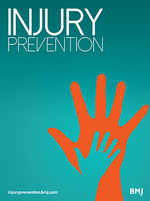
Tatar, Moosa; Jalali, Mohammad S.; Tak, Hyo Jung; Chen, Li-Wu; Araz, Ozgur M; Wilson, Fernando A
Impact of Florida's Prescription Drug Monitoring Program on Fatal Vehicle Crashes: A Difference-in-Differences Approach Journal Article
In: Injury Prevention, 2021.
Abstract | Links | BibTeX | Tags: Substance use
@article{666821,
title = {Impact of Florida's Prescription Drug Monitoring Program on Fatal Vehicle Crashes: A Difference-in-Differences Approach},
author = {Moosa Tatar and Mohammad S. Jalali and Hyo Jung Tak and Li-Wu Chen and Ozgur M Araz and Fernando A Wilson},
url = {https://mj-lab.mgh.harvard.edu/wp-content/uploads/2024/12/Tatar_pdmp_2021.pdf},
year = {2021},
date = {2021-01-01},
urldate = {2021-01-01},
journal = {Injury Prevention},
abstract = {Background Prescription drug use has soared in the USA within the last two decades. Prescription drugs can impair motor skills essential for the safe operation of a motor vehicle, and therefore can affect traffic safety. As one of the epicentres of the opioid epidemic, Florida has been struck by high opioid misuse and overdose rates, and has concurrently suffered major threats to traffic disruptions safety caused by driving under the influence of drugs. To prevent prescription opioid misuse in Florida, Prescription Drug Monitoring Programs (PDMPs) were implemented in September 2011.
Objective To examine the impact of Florida’s implementation of a mandatory PDMP on drug-related MVCs occurring on public roads.
Methods We employed a difference-in-differences approach to estimate the difference in prescription drug-related fatal crashes in Florida associated with its 2011 PDMP implementation relative to those in Georgia, which did not use PDMPs during the same period (2009–2013). The analyses were conducted in 2020.
Results In Florida, there was a significant decline in drug-related vehicle crashes during the 22 months post-PDMP. PDMP implementation was associated with approximately two (−2.21; 95% CI −4.04 to –0.37; p<0.05) fewer prescribed opioid-related fatal crashes every month, indicating 25% reduction in the number of monthly crashes. We conducted sensitivity analyses to investigate the impact of PDMP implementation on central nervous system depressants and stimulants as well as cocaine and marijuana-related fatal crashes but found no robust significant reductions.
Conclusions The implementation of PDMPs in Florida provided important benefits for traffic safety, reducing the rates of prescription opioid-related vehicle crashes.},
keywords = {Substance use},
pubstate = {published},
tppubtype = {article}
}
Objective To examine the impact of Florida’s implementation of a mandatory PDMP on drug-related MVCs occurring on public roads.
Methods We employed a difference-in-differences approach to estimate the difference in prescription drug-related fatal crashes in Florida associated with its 2011 PDMP implementation relative to those in Georgia, which did not use PDMPs during the same period (2009–2013). The analyses were conducted in 2020.
Results In Florida, there was a significant decline in drug-related vehicle crashes during the 22 months post-PDMP. PDMP implementation was associated with approximately two (−2.21; 95% CI −4.04 to –0.37; p<0.05) fewer prescribed opioid-related fatal crashes every month, indicating 25% reduction in the number of monthly crashes. We conducted sensitivity analyses to investigate the impact of PDMP implementation on central nervous system depressants and stimulants as well as cocaine and marijuana-related fatal crashes but found no robust significant reductions.
Conclusions The implementation of PDMPs in Florida provided important benefits for traffic safety, reducing the rates of prescription opioid-related vehicle crashes.
2020

Jalali, Mohammad S.; Botticelli, Michael; Hwang, Rachael; Koh, Howard K; McHugh, Kathryn R
The opioid crisis: a contextual, social-ecological framework Journal Article
In: Health Research Policy and Systems, vol. 18, no. 87, 2020.
Abstract | Links | BibTeX | Tags: Substance use
@article{637263,
title = {The opioid crisis: a contextual, social-ecological framework},
author = {Mohammad S. Jalali and Michael Botticelli and Rachael Hwang and Howard K Koh and Kathryn R McHugh},
url = {https://scholar.harvard.edu/files/jalali/files/opioid_crisis_social_ecological_framework.pdf},
year = {2020},
date = {2020-01-01},
urldate = {2020-01-01},
journal = {Health Research Policy and Systems},
volume = {18},
number = {87},
abstract = {The prevalence of opioid use and misuse has provoked a staggering number of deaths over the past two and a half decades. Much attention has focused on individual risks according to various characteristics and experiences. However, broader social and contextual domains are also essential contributors to the opioid crisis such as interpersonal relationships and the conditions of the community and society that people live in. Despite efforts to tackle the issue, the rates of opioid misuse and non-fatal and fatal overdose remain high. Many call for a broad public health approach, but articulation of what such a strategy could entail has not been fully realised. In order to improve the awareness surrounding opioid misuse, we developed a social-ecological framework that helps conceptualise the multivariable risk factors of opioid misuse and facilitates reviewing them in individual, interpersonal, communal and societal levels. Our framework illustrates the multi-layer complexity of the opioid crisis that more completely captures the crisis as a multidimensional issue requiring a broader and integrated approach to prevention and treatment.},
keywords = {Substance use},
pubstate = {published},
tppubtype = {article}
}
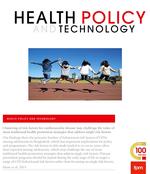
Namin, Amir T; Vahdat, Vahab; DiGennaro, Catherine; Amid, Roham; Jalali, Mohammad S.
Adoption of new medical technologies: The effects of insurance coverage vs continuing medical education Journal Article
In: Health Policy and Technology, vol. 9, no. 1, pp. 31-41, 2020.
Abstract | Links | BibTeX | Tags: Adoption dynamics, Simulation modeling
@article{647807,
title = {Adoption of new medical technologies: The effects of insurance coverage vs continuing medical education},
author = {Amir T Namin and Vahab Vahdat and Catherine DiGennaro and Roham Amid and Mohammad S. Jalali},
url = {https://scholar.harvard.edu/files/jalali/files/adoption_insurance_vs_education.pdf},
year = {2020},
date = {2020-01-01},
urldate = {2020-01-01},
journal = {Health Policy and Technology},
volume = {9},
number = {1},
pages = {31-41},
abstract = {Medical technologies innovate rapidly and responsively to patient needs, but the adoption of the latest technologies in practice can be delayed by lack of knowledge and ability to pay. Customized individually made (CIM) knee implants potentially provide an option for individuals to maintain moderate to high activity levels with fewer surgical revisions following a total knee replacement, however they are costlier upfront. Not only is the technology more expensive, but insurance typically covers around 50% (versus 90% for older off-the-shelf knee implants). We used a recent simulation model and analyzed the effects on overall adoption of CIM through 2026 and found that continuing medical education (CME)—a common intervention to increase the adoption of new medical technologies through increasing practitioner knowledge and comfort with the new technologies—can increase the adoption of CIM to 48% in the short term, but increasing insurance coverage to be equal to OTS knee replacement coverage increases the adoption to 87% in the sustained long term. Efforts to implement CME are well-placed and will increase the rate of adoption, however the combination of CME and increased insurance coverage provides the most benefit, with the technology reaching 80% of the population undergoing total knee replacement by 2021.},
keywords = {Adoption dynamics, Simulation modeling},
pubstate = {published},
tppubtype = {article}
}

Jalali, Mohammad S.; Bruckes, Maike; Westmattelmann, Daniel; Schewe, Gerhard
Why Employees (Still) Click on Phishing Links: Investigation in Hospitals Journal Article
In: Journal of Medical Internet Research, vol. 22, no. 1, pp. e16775, 2020.
Abstract | Links | BibTeX | Tags: Cybersecurity
@article{647808,
title = {Why Employees (Still) Click on Phishing Links: Investigation in Hospitals},
author = {Mohammad S. Jalali and Maike Bruckes and Daniel Westmattelmann and Gerhard Schewe},
url = {https://scholar.harvard.edu/files/jalali/files/phishing_investigation.pdf},
year = {2020},
date = {2020-01-01},
urldate = {2020-01-01},
journal = {Journal of Medical Internet Research},
volume = {22},
number = {1},
pages = {e16775},
abstract = {Background: Hospitals have been one of the major targets for phishing attacks. Despite efforts to improve information security compliance, hospitals still significantly suffer from such attacks, impacting the quality of care and the safety of patients.Objective: This study aimed to investigate why hospital employees decide to click on phishing emails by analyzing actual clicking data.Methods: We first gauged the factors that influence clicking behavior using the theory of planned behavior (TPB) and integrating trust theories. We then conducted a survey in hospitals and used structural equation modeling to investigate the components of compliance intention. We matched employeestextquoteright survey results with their actual clicking data from phishing campaigns.Results: Our analysis (N=397) reveals that TPB factors (attitude, subjective norms, and perceived behavioral control), as well as collective felt trust and trust in information security technology, are positively related to compliance intention. However, compliance intention is not significantly related to compliance behavior. Only the level of employeestextquoteright workload is positively associated with the likelihood of employees clicking on a phishing link.Conclusions: This is one of the few studies in information security and decision making that observed compliance behavior by analyzing clicking data rather than using self-reported data. We show that, in the context of phishing emails, intention and compliance might not be as strongly linked as previously assumed; hence, hospitals must remain vigilant with vulnerabilities that cannot be easily managed. Importantly, given the significant association between workload and noncompliance behavior (ie, clicking on phishing links), hospitals should better manage employeestextquoteright workload to increase information security. Our findings can help health care organizations augment employeestextquoteright compliance with their cybersecurity policies and reduce the likelihood of clicking on phishing links.},
keywords = {Cybersecurity},
pubstate = {published},
tppubtype = {article}
}

Li, Peiyi; Luo, Yunmei; Yu, Xuexin; Wen, Jin; Mason, Elizabeth; Li, Weimin; Jalali, Mohammad S.
Patients’ Perceptions of Barriers and Facilitators to the Adoption of e-Hospitals: Cross-sectional Study in Western China Journal Article
In: Journal of Medical Internet Research, vol. 22, no. 6, pp. e17221, 2020.
Abstract | Links | BibTeX | Tags: Adoption dynamics
@article{651232,
title = {Patients’ Perceptions of Barriers and Facilitators to the Adoption of e-Hospitals: Cross-sectional Study in Western China},
author = {Peiyi Li and Yunmei Luo and Xuexin Yu and Jin Wen and Elizabeth Mason and Weimin Li and Mohammad S. Jalali},
url = {https://scholar.harvard.edu/files/jalali/files/ehospitals_adoption.pdf},
year = {2020},
date = {2020-01-01},
urldate = {2020-01-01},
journal = {Journal of Medical Internet Research},
volume = {22},
number = {6},
pages = {e17221},
abstract = {Background: As an innovative approach to providing web-based health care services from physical hospitals to patients at a distance, e-hospitals (ie, extended care hospitals through the internet) have been extensively developed in China. This closed health care delivery chain was developed by combining e-hospitals with physical hospitals; treatment begins with web-based consultation and registration, and then, patients are diagnosed and treated in a physical hospital. This approach is promising in its ability to improve accessibility, efficiency, and quality of health care. However, there is limited research on end userstextquoteright acceptance of e-hospitals and the effectiveness of strategies aimed to prompt the adoption of e-hospitals in China.
Objective: This study aimed to provide insights regarding the adoption of e-hospitals by investigating patientstextquoteright willingness to use e-hospitals and analyzing the barriers and facilitators to the adoption of this technology.
Methods: We used a pretested self-administered questionnaire and performed a cross-sectional analysis in 1032 patients across three hierarchical hospitals in West China from June to August 2019. Patientstextquoteright sociodemographic characteristics, medical history, current disease status, proficiency with electronic devices, previous experience with web-based health services, willingness to use e-hospitals, and perceived facilitators and barriers were surveyed. Multiple significance tests were employed to examine disparities across four age groups, as well as those between patients who were willing to use e-hospitals and those who were not. Multivariate logistic regression was also performed to identify the potential predictors of willingness to use e-hospitals.
Results: Overall, it was found that 65.6% (677/1032) of participants were willing to use e-hospitals. The significant predictors of willingness to use e-hospitals were employment status (P=.02), living with children (P<.001), education level (P=.046), information technology skills (P<.001), and prior experience with web-based health care services (P<.001), whereas age, income, medical insurance, and familiarity with e-hospitals were not predictors. Additionally, the prominent facilitators of e-hospitals were convenience (641/677, 94.7%) and accessibility to skilled medical experts (489/677, 72.2%). The most frequently perceived barrier varied among age groups; seniors most often reported their inability to operate technological devices as a barrier (144/166, 86.7%), whereas young participants most often reported that they avoided e-hospital services because they were accustomed to face-to-face consultation (39/52, 75%).
Conclusions: We identified the variables, facilitators, and barriers that play essential roles in the adoption of e-hospitals. Based on our findings, we suggest that efforts to increase the adoption of e-hospitals should focus on making target populations accustomed to web-based health care services while maximizing ease of use and providing assistance for technological inquiries.},
keywords = {Adoption dynamics},
pubstate = {published},
tppubtype = {article}
}
Objective: This study aimed to provide insights regarding the adoption of e-hospitals by investigating patientstextquoteright willingness to use e-hospitals and analyzing the barriers and facilitators to the adoption of this technology.
Methods: We used a pretested self-administered questionnaire and performed a cross-sectional analysis in 1032 patients across three hierarchical hospitals in West China from June to August 2019. Patientstextquoteright sociodemographic characteristics, medical history, current disease status, proficiency with electronic devices, previous experience with web-based health services, willingness to use e-hospitals, and perceived facilitators and barriers were surveyed. Multiple significance tests were employed to examine disparities across four age groups, as well as those between patients who were willing to use e-hospitals and those who were not. Multivariate logistic regression was also performed to identify the potential predictors of willingness to use e-hospitals.
Results: Overall, it was found that 65.6% (677/1032) of participants were willing to use e-hospitals. The significant predictors of willingness to use e-hospitals were employment status (P=.02), living with children (P<.001), education level (P=.046), information technology skills (P<.001), and prior experience with web-based health care services (P<.001), whereas age, income, medical insurance, and familiarity with e-hospitals were not predictors. Additionally, the prominent facilitators of e-hospitals were convenience (641/677, 94.7%) and accessibility to skilled medical experts (489/677, 72.2%). The most frequently perceived barrier varied among age groups; seniors most often reported their inability to operate technological devices as a barrier (144/166, 86.7%), whereas young participants most often reported that they avoided e-hospital services because they were accustomed to face-to-face consultation (39/52, 75%).
Conclusions: We identified the variables, facilitators, and barriers that play essential roles in the adoption of e-hospitals. Based on our findings, we suggest that efforts to increase the adoption of e-hospitals should focus on making target populations accustomed to web-based health care services while maximizing ease of use and providing assistance for technological inquiries.

Liang, L; Shang, Y; Xie, W; Shi, J; Tong, Z; Jalali, Mohammad S.
Trends in Hospitalization Expenditures for Acute Exacerbations of COPD in Beijing from 2009 to 2017 Journal Article
In: International Journal of Chronic Obstructive Pulmonary Disease, no. 15, pp. 1165-1175, 2020.
Abstract | Links | BibTeX | Tags:
@article{651233,
title = {Trends in Hospitalization Expenditures for Acute Exacerbations of COPD in Beijing from 2009 to 2017},
author = {L Liang and Y Shang and W Xie and J Shi and Z Tong and Mohammad S. Jalali},
url = {https://scholar.harvard.edu/files/jalali/files/trends-in-hospitalization-expenditures-COPD.pdf},
year = {2020},
date = {2020-01-01},
urldate = {2020-01-01},
journal = {International Journal of Chronic Obstructive Pulmonary Disease},
number = {15},
pages = {1165-1175},
abstract = {Background: Chronic obstructive pulmonary disease (COPD) is the cause of substantial economic and social burden. We investigated trends in hospitalizations for acute exacerbation of COPD in Beijing, China, from 2009 to 2017.Patients and Methods: Investigations were conducted using data from the discharge records of inpatients that were given a primary diagnosis of acute exacerbation of COPD. The dataset was a retrospective review of information collected from electronic medical records and included 315,116 admissions (159,368 patients). Descriptive analyses and multivariate regressions were used to investigate trends in per admission and per capita expenditures, as well as other potential contributing factors.Results: The mean per admission expenditures increased from 19,760 CNY ($2893, based on USD/CNY=6.8310) in 2009 to 20,118 CNY ($2980) in 2017 (a growth rate of 0.11%). However, the per capita expenditures increased from 23,716 CNY ($3472) in 2009 to 31,000 CNY ($4538) in 2017 (a growth rate of 1.7%). In terms of per admission expenditures, drug costs accounted for 52.9% of the total expenditures in 2009 and dropped to 39.4% in 2017 (P trend < 0.001). The mean length of stay (LOS) decreased from 16.0 days to 13.5 days (P trend < 0textperiodcentered 001). Age, gender, COPD type, LOS, and hospital level were all associated with per admission and per capita expenditures.Interpretation: Relatively stable per admission expenditures along with the decline in drug costs and LOS reflect the effectiveness of cost containment on some indicators in Chinatextquoterights health care reform. However, the increase in hospitalization expenditures per capita calls for better policies for controlling hospitalizations, especially multiple admissions.},
keywords = {},
pubstate = {published},
tppubtype = {article}
}
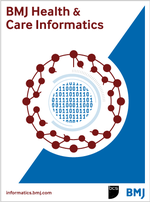
Li, Peiyi; Liu, Xiaoyu; Mason, Elizabeth; Hu, Guangyu; Zhou, Yongzhao; Li, Weimin; Jalali, Mohammad S.
How Telemedicine Integrated into China’s Anti-COVID-19 Strategies: Case from a National Referral Center Journal Article
In: BMJ Health & Care Informatics, no. 27, pp. e100164, 2020.
Abstract | Links | BibTeX | Tags: Adoption dynamics, Infectious diseases
@article{651958,
title = {How Telemedicine Integrated into China’s Anti-COVID-19 Strategies: Case from a National Referral Center},
author = {Peiyi Li and Xiaoyu Liu and Elizabeth Mason and Guangyu Hu and Yongzhao Zhou and Weimin Li and Mohammad S. Jalali},
url = {https://scholar.harvard.edu/files/jalali/files/telemedicine_china.pdf},
year = {2020},
date = {2020-01-01},
urldate = {2020-01-01},
journal = {BMJ Health & Care Informatics},
number = {27},
pages = {e100164},
abstract = {Introduction We present the integration of telemedicine into the healthcare system of West China Hospital of Sichuan University (WCH), one of the largest hospitals in the world with 4300 inpatient beds, as a means for maximising the efficiency of healthcare delivery during the COVID-19 pandemic.
Methods Implemented on 22 January 2020, the telemedicine technology allowed WCH providers to conduct teleconsultations, telerounds, teleradiology and tele-intensive care unit, which in culmination provided screening, triage and treatment for COVID-19 and other illnesses. To encourage its adoption, the government and the hospital publicised the platform on social media and waived fees.
Discussion From 1 February to 1 April 2020, 10557 online COVID-19 consultations were conducted for 6662 individuals; meanwhile, 32676 patients without COVID completed virtual follow-ups. We discuss that high-quality, secure, affordable and user-friendly telemedical platforms should be integrated into global healthcare systems to help decrease the transmission of the virus and protect healthcare providers from infection.
},
keywords = {Adoption dynamics, Infectious diseases},
pubstate = {published},
tppubtype = {article}
}
Methods Implemented on 22 January 2020, the telemedicine technology allowed WCH providers to conduct teleconsultations, telerounds, teleradiology and tele-intensive care unit, which in culmination provided screening, triage and treatment for COVID-19 and other illnesses. To encourage its adoption, the government and the hospital publicised the platform on social media and waived fees.
Discussion From 1 February to 1 April 2020, 10557 online COVID-19 consultations were conducted for 6662 individuals; meanwhile, 32676 patients without COVID completed virtual follow-ups. We discuss that high-quality, secure, affordable and user-friendly telemedical platforms should be integrated into global healthcare systems to help decrease the transmission of the virus and protect healthcare providers from infection.

Jalali, Mohammad S.; DiGennaro, Catherine; Sridhar, Devi
Transparency Assessment of COVID-19 Models Journal Article
In: The Lancet Global Health, vol. 8, no. 12, pp. E1459-E1460, 2020.
Abstract | Links | BibTeX | Tags: Infectious diseases, Simulation modeling
@article{651959,
title = {Transparency Assessment of COVID-19 Models},
author = {Mohammad S. Jalali and Catherine DiGennaro and Devi Sridhar},
url = {https://scholar.harvard.edu/files/jalali/files/transparency_assessment_covid19.pdf
https://scholar.harvard.edu/files/jalali/files/transparency_assessment_covid19_appendix.pdf},
year = {2020},
date = {2020-01-01},
urldate = {2020-01-01},
journal = {The Lancet Global Health},
volume = {8},
number = {12},
pages = {E1459-E1460},
abstract = {As the COVID-19 pandemic has caused major societal unrest, modelers have worked to project future trends of COVID-19 and predict upcoming challenges and impacts of policy action. These models, alone or in aggregate, are influential for decision-makers at every level. Therefore, the method and documentation of COVID-19 models must be highly transparent to ensure that projections and consequential policies put forth have sound epistemological grounds. We evaluated 29 COVID-19 models receiving high attention levels within the scientific community and/or informing government responses. We evaluated these models against 27 transparency criteria. We found high levels of transparency in model documentation aspects such as reporting uncertainty analysis; however, about half of the models do not share code and a quarter do not report equations. These discrepancies underscore the need for transparency and reproducibility to be at the forefront of researcherstextquoteright priorities, especially during a global health crisis when stakes are critically high.},
keywords = {Infectious diseases, Simulation modeling},
pubstate = {published},
tppubtype = {article}
}

Jalali, Mohammad S.; Landman, Adam; Gordon, William J
Telemedicine, Privacy, and Information Security in the Age of COVID-19 Journal Article
In: Journal of the American Medical Informatics Association, 2020.
Links | BibTeX | Tags: Cybersecurity
@article{655528,
title = {Telemedicine, Privacy, and Information Security in the Age of COVID-19},
author = {Mohammad S. Jalali and Adam Landman and William J Gordon},
url = {https://scholar.harvard.edu/files/jalali/files/telemedicine_privacy_and_information_security_preprint.pdf},
year = {2020},
date = {2020-01-01},
urldate = {2020-01-01},
journal = {Journal of the American Medical Informatics Association},
keywords = {Cybersecurity},
pubstate = {published},
tppubtype = {article}
}

Jalali, Mohammad S.; Botticelli, Michael; Hwang, Rachael; Koh, Howard K; McHugh, Kathryn R
The opioid crisis: need for systems science research Journal Article
In: Health Research Policy and Systems, vol. 18, no. 88, 2020.
Abstract | Links | BibTeX | Tags: Simulation modeling, Substance use
@article{661337,
title = {The opioid crisis: need for systems science research},
author = {Mohammad S. Jalali and Michael Botticelli and Rachael Hwang and Howard K Koh and Kathryn R McHugh},
url = {https://scholar.harvard.edu/files/jalali/files/opioid_crisis_systems_science.pdf},
year = {2020},
date = {2020-01-01},
urldate = {2020-01-01},
journal = {Health Research Policy and Systems},
volume = {18},
number = {88},
abstract = {The opioid epidemic in the United States has had a devastating impact on millions of people as well as on their families and communities. The increased prevalence of opioid misuse, use disorder and overdose in recent years has highlighted the need for improved public health approaches for reducing the tremendous harms of this illness. In this paper, we explain and call for the need for more systems science approaches, which can uncover the complexities of the opioid crisis, and help evaluate, analyse and forecast the effectiveness of ongoing and new policy interventions. Similar to how a stream of systems science research helped policy development in infectious diseases and obesity, more systems science research is needed in opioids.},
keywords = {Simulation modeling, Substance use},
pubstate = {published},
tppubtype = {article}
}

Toumi, Asmae; DiGennaro, Catherine; Vahdat, Vahab; Jalali, Mohammad S.; Gazelle, Scott G; Chhatwal, Jagpreet; Kelz, Rachel R; Lubitz, Carrie C
Trends in Thyroid Surgery and Guideline-Concordant Care in the United States, 2007-2018 Journal Article
In: Thyroid, 2020.
Abstract | Links | BibTeX | Tags: Cancer
@article{667452,
title = {Trends in Thyroid Surgery and Guideline-Concordant Care in the United States, 2007-2018},
author = {Asmae Toumi and Catherine DiGennaro and Vahab Vahdat and Mohammad S. Jalali and Scott G Gazelle and Jagpreet Chhatwal and Rachel R Kelz and Carrie C Lubitz},
url = {https://mj-lab.mgh.harvard.edu/wp-content/uploads/2024/12/Toumi_thyroid_2021.pdf},
year = {2020},
date = {2020-01-01},
urldate = {2020-01-01},
journal = {Thyroid},
abstract = {Background: The American Thyroid Association (ATA) published the 2015 Management Guidelines for Patients with Thyroid Nodules and Differentiated Thyroid Cancer recommending a shift to less aggressive diagnostic, surgical, and post-operative treatment strategies. At the same time and perhaps related to the new guidelines, there has been a shift to outpatient thyroid surgery. The aim of the current study was to assess physician adherence to these recommendations by identifying and quantifying temporal trends in the rates and indications for thyroid procedures in the inpatient and outpatient settings. Methods: Using the IBMtextregistered MarketScantextregistered Commercial database, we identified employer-insured patients in the United States who underwent outpatient and inpatient thyroid surgery from 2007 to 2018. Thyroid surgery was classified as total thyroidectomy (TT), thyroid lobectomy (TL) or a completion thyroidectomy. The surgical indication diagnosis was also determined and classified as either benign or malignant thyroid disease. We compared outpatient and inpatient trends in surgery between benign and malignant thyroid disease before and after the release of the 2015 ATA guidelines. Results: A total of 220,088 patients who underwent thyroid surgery were included in the analysis. Approximately 80% of thyroid lobectomies (TL) were performed in the outpatient setting vs. 70% of total thyroidectomies (TT). Longitudinal analysis showed a statistically significant changepoint for TT proportion occurring in November 2015. The proportion of TT as compared to TL decreased from 80% in September 2015 to 39% by December 2018. For thyroid cancer, there is an increasing trend in performing TL over TT, increasing from 17% in 2015 to 28% by the end of 2018. Conclusions: There was a significant changepoint occurring in November 2015 in the operative and management trends for benign and malignant thyroid disease.},
keywords = {Cancer},
pubstate = {published},
tppubtype = {article}
}
2019

Jalali, Mohammad S.; Kaiser, Jessica P; Siegel, Michael; Madnick, Stuart
The Internet of Things Promises New Benefits and Risks: A Systematic Analysis of Adoption Dynamics of IoT Products Journal Article
In: IEEE Security and privacy, vol. 17, no. 2, pp. 39-48, 2019.
Links | BibTeX | Tags: Adoption dynamics, Cybersecurity, Simulation modeling
@article{631218,
title = {The Internet of Things Promises New Benefits and Risks: A Systematic Analysis of Adoption Dynamics of IoT Products},
author = {Mohammad S. Jalali and Jessica P Kaiser and Michael Siegel and Stuart Madnick},
url = {https://scholar.harvard.edu/files/jalali/files/adoption_dynamics_of_iot_products.pdf},
year = {2019},
date = {2019-01-01},
urldate = {2019-01-01},
journal = {IEEE Security and privacy},
volume = {17},
number = {2},
pages = {39-48},
keywords = {Adoption dynamics, Cybersecurity, Simulation modeling},
pubstate = {published},
tppubtype = {article}
}

Jalali, Mohammad S.; Razak, Sabina; Gordon, William; Perakslis, Eric; Madnick, Stuart
Health Care and Cybersecurity: Bibliometric Analysis of the Literature Journal Article
In: Journal of Medical Internet Research, vol. 21, no. 2, pp. e12644, 2019.
Abstract | Links | BibTeX | Tags: Cybersecurity
@article{631228,
title = {Health Care and Cybersecurity: Bibliometric Analysis of the Literature},
author = {Mohammad S. Jalali and Sabina Razak and William Gordon and Eric Perakslis and Stuart Madnick},
url = {https://scholar.harvard.edu/files/jalali/files/cybersecurity_in_healthcare.pdf},
year = {2019},
date = {2019-01-01},
urldate = {2019-01-01},
journal = {Journal of Medical Internet Research},
volume = {21},
number = {2},
pages = {e12644},
abstract = {Background: Over the past decade, clinical care has become globally dependent on information technology. The cybersecurity of health care information systems is now an essential component of safe, reliable, and effective health care delivery.Objective: The objective of this study was to provide an overview of the literature at the intersection of cybersecurity and health care delivery.Methods: A comprehensive search was conducted using PubMed and Web of Science for English-language peer-reviewed articles. We carried out chronological analysis, domain clustering analysis, and text analysis of the included articles to generate a high-level concept map composed of specific words and the connections between them.Results: Our final sample included 472 English-language journal articles. Our review results revealed that majority of the articles were focused on technology: Technology–focused articles made up more than half of all the clusters, whereas managerial articles accounted for only 32% of all clusters. This finding suggests that nontechnological variables (human–based and organizational aspects, strategy, and management) may be understudied. In addition, Software Development Security, Business Continuity, and Disaster Recovery Planning each accounted for 3% of the studied articles. Our results also showed that publications on Physical Security account for only 1% of the literature, and research in this area is lacking. Cyber vulnerabilities are not all digital; many physical threats contribute to breaches and potentially affect the physical safety of patients.Conclusions: Our results revealed an overall increase in research on cybersecurity and identified major gaps and opportunities for future work.},
keywords = {Cybersecurity},
pubstate = {published},
tppubtype = {article}
}
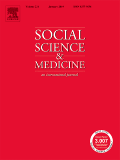
Jalali, Mohammad S.; Rahmandad, Hazhir; Bullock, Sally Lawrence; Lee-Kwan, Seung Hee; Gittelsohn, Joel; Ammerman, Alice
Dynamics of intervention adoption, implementation, and maintenance inside organizations: The case of an obesity prevention initiative Journal Article
In: Social Science & Medicine, vol. 224, pp. 67-76, 2019.
Abstract | Links | BibTeX | Tags: Adoption dynamics, Obesity, Participatory modeling, Simulation modeling
@article{631231,
title = {Dynamics of intervention adoption, implementation, and maintenance inside organizations: The case of an obesity prevention initiative},
author = {Mohammad S. Jalali and Hazhir Rahmandad and Sally Lawrence Bullock and Seung Hee Lee-Kwan and Joel Gittelsohn and Alice Ammerman},
url = {https://scholar.harvard.edu/files/jalali/files/dynamics_of_intervention_adoption.pdf, dynamics of intervention adoption.pdf
https://scholar.harvard.edu/files/jalali/files/vensimfiles.zip, Vensim Files},
year = {2019},
date = {2019-01-01},
urldate = {2019-01-01},
journal = {Social Science & Medicine},
volume = {224},
pages = {67-76},
abstract = {Overall impact of public health prevention interventions relies not only on the average efficacy of an intervention, but also on the successful adoption, implementation, and maintenance (AIM) of that intervention. In this study, we aim to understand the dynamics that regulate AIM of organizational level intervention programs. We focus on two well-documented obesity prevention interventions, implemented in food carry-outs and stores in low-income urban areas of Baltimore, Maryland, which aimed to improve dietary behaviour for adults by providing access to healthier foods and point-of-purchase promotions. Building on data from field observations, in-depth interviews, and data discussed in previous publications, as well as the strategy and organizational behaviour literature, we developed a system dynamics model of the key processes of AIM. With simulation analysis, we show several reinforcing mechanisms that span stakeholder motivation, communications, and implementation quality and costs can turn small changes in the process of AIM into big difference in the overall impact of the intervention. Specifically, small changes in the allocation of resources to communication with stakeholders of intervention could have a nonlinear long-term impact if those additional resources can turn stakeholders into allies of the intervention, reducing the erosion rates and enhancing sustainability. We present how the dynamics surrounding communication, motivation, and erosion can create significant heterogeneity in the overall impact of otherwise similar interventions. Therefore, careful monitoring of how those dynamics unfold, and timely adjustments to keep the intervention on track are critical for successful implementation and maintenance.},
keywords = {Adoption dynamics, Obesity, Participatory modeling, Simulation modeling},
pubstate = {published},
tppubtype = {article}
}

Namin, Amir T; Jalali, Mohammad S.; Vahdat, Vahab; Bedair, Hany S; O'Connor, Mary I; Kamarthi, Sagar; Isaacs, Jacqueline A
The Adoption of New Medical Technologies: The Case of Customized Individually Made Knee Implants Journal Article
In: Value in Health, vol. 22, no. 4, pp. 423-430, 2019.
Abstract | Links | BibTeX | Tags: Adoption dynamics, Simulation modeling
@article{631232,
title = {The Adoption of New Medical Technologies: The Case of Customized Individually Made Knee Implants},
author = {Amir T Namin and Mohammad S. Jalali and Vahab Vahdat and Hany S Bedair and Mary I O'Connor and Sagar Kamarthi and Jacqueline A Isaacs},
url = {https://scholar.harvard.edu/files/jalali/files/theadoptionofnewmedicaltechnologies.pdf
https://scholar.harvard.edu/files/jalali/files/supporting_information.pdf
https://scholar.harvard.edu/files/jalali/files/modeling_documentation_and_instruction_for_reproducibility_mdir.pdf},
year = {2019},
date = {2019-01-01},
urldate = {2019-01-01},
journal = {Value in Health},
volume = {22},
number = {4},
pages = {423-430},
abstract = {Objectives: To investigate the impact of insurance coverage on the adoption of customized individually made (CIM) knee implants, and to compare patient outcomes and cost-effectiveness of off-the-shelf (OTS) and CIM implants.Study Design: A system dynamics simulation model is developed to study adoption dynamics of CIM and meet the research objectives.Methods: The model reproduced the historical data on primary and revision knee replacement implants obtained from the literature and the Nationwide Inpatient Sample. Then, the dynamics of adoption of CIM implants were simulated from 2018 to 2026. The rate of 90-day readmission, 3-year revision surgery, recovery period, time savings in operating rooms, and the associated cost within three years of primary knee replacement implants were used as performance metrics.Results: The simulation results indicate that, by 2026, an adoption rate of 90% for CIM implants can reduce the number of readmissions and revision surgeries by 62% and 39%, respectively, and can save hospitals and surgeons 6% on procedure time, and cut down cumulative healthcare costs by approximately $38 billion.Conclusions: CIM implants have the potential to deliver high-quality care while decreasing overall healthcare costs, but their adoption requires the expansion of current insurance coverage. This work presents a first systematic study to understand the dynamics of adoption of CIM knee implants and instrumentation. More broadly, the current modeling approach and systems thinking perspective could be utilized to consider the adoption of any emerging customized therapies for personalized medicine.},
keywords = {Adoption dynamics, Simulation modeling},
pubstate = {published},
tppubtype = {article}
}
2018

Hosseinichimeh, Niyousha; Wittenborn, Andrea K; Rick, Jennifer; Jalali, Mohammad S.; Rahmandad, Hazhir
Modeling and Estimating the Feedback Mechanisms among Depression, Rumination, and Stressors in Adolescents Journal Article
In: PLOS ONE, vol. 13, no. 9, pp. e0204389, 2018.
Abstract | Links | BibTeX | Tags: Simulation modeling
@article{631225,
title = {Modeling and Estimating the Feedback Mechanisms among Depression, Rumination, and Stressors in Adolescents},
author = {Niyousha Hosseinichimeh and Andrea K Wittenborn and Jennifer Rick and Mohammad S. Jalali and Hazhir Rahmandad},
url = {https://scholar.harvard.edu/files/jalali/files/modeling_depression.pdf},
year = {2018},
date = {2018-01-01},
urldate = {2018-01-01},
journal = {PLOS ONE},
volume = {13},
number = {9},
pages = {e0204389},
abstract = {The systemic interactions among depressive symptoms, rumination, and stress are important to understanding depression but have not yet been quantified. In this article, we present a system dynamics simulation model of depression that captures the reciprocal relationships among stressors, rumination, and depression. Building on the response styles theory, this model formalizes three interdependent mechanisms: 1) Rumination contributes to textquoteleftkeeping stressors alivetextquoteright; 2) Rumination has a direct impact on depressive symptoms; and 3) Both textquoteleftstressors kept alivetextquoteright and current depressive symptoms contribute to rumination. The strength of these mechanisms is estimated using data from 661 adolescents (353 girls and 308 boys) from two middle schools (grades 6–8). These estimates indicate that rumination contributes to depression by keeping stressors textquoteleftalivetextquoteright—and the individual activated—even after the stressor has ended. This mechanism is stronger among girls than boys, increasing their vulnerability to a rumination reinforcing loop. Different profiles of depression emerge over time depending on initial levels of depressive symptoms, rumination, and stressors as well as the occurrence rate for stressors; levels of rumination and occurrence of stressors are stronger contributors to long-term depression. Our systems model is a steppingstone towards a more comprehensive understanding of depression in which reinforcing feedback mechanisms play a significant role. Future research is needed to expand this simulation model to incorporate other drivers of depression and provide a more holistic tool for studying depression.},
keywords = {Simulation modeling},
pubstate = {published},
tppubtype = {article}
}
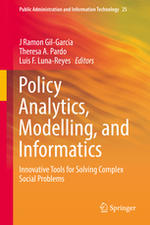
Ghaffarzadegan, Navid; Larson, Richard C; Fingerhut, Henry; Jalali, Mohammad S.; Ebrahimvandi, Alireza; Quaadgras, Anne; Kochan, Thomas
Model-Based Policy Analysis to Mitigate Post-Traumatic Stress Disorder Book Chapter
In: Policy Analytics, Modelling, and Informatics, vol. 24, pp. 387-406, Springer, 2018.
Abstract | Links | BibTeX | Tags: Mental health, Simulation modeling
@inbook{631224,
title = {Model-Based Policy Analysis to Mitigate Post-Traumatic Stress Disorder},
author = {Navid Ghaffarzadegan and Richard C Larson and Henry Fingerhut and Mohammad S. Jalali and Alireza Ebrahimvandi and Anne Quaadgras and Thomas Kochan},
url = {https://scholar.harvard.edu/files/jalali/files/ptsd_modeling_book_chapter.pdf},
year = {2018},
date = {2018-01-01},
urldate = {2018-01-01},
booktitle = {Policy Analytics, Modelling, and Informatics},
volume = {24},
pages = {387-406},
publisher = {Springer},
organization = {Springer},
abstract = {A wide range of modeling methods have been used to inform health policies. In this chapter, we describe three models for understanding the complexities of post-traumatic stress disorder (PTSD), a major mental disorder. The models are: (1) a qualitative model describing the social and psychological complexities of PTSD treatment; (2) a system dynamics model of a population of PTSD patients in the military and the Department of Veterans Affairs (VA); and (3) a Monte Carlo simulation model of PTSD prevalence and clinical demand over time among the OEF/OIF population. These models have two characteristics in common. First, they take systems approaches. In all models, we set a large boundary and look at the whole system, incorporating both military personnel and veterans. Second, the models are informed by a wide range of qualitative and quantitative data. Model I is rooted in qualitative data, and models II and III are calibrated to several data sources. These models are used to analyze the effects of different policy alternatives, such as more screening, more resiliency, and better recruitment procedures, on PTSD prevalence. They also provide analysis of healthcare costs in the military and the VA for each policy. Overall, the developed models offer examples of modeling techniques that incorporate a wide range of data sources and inform policy makers in developing programs for mitigating PTSD, a major premise of policy informatics.},
keywords = {Mental health, Simulation modeling},
pubstate = {published},
tppubtype = {inbook}
}

Azghandi, Rana; Griffin, Jacqueline; Jalali, Mohammad S.
Minimization of Drug Shortages in Pharmaceutical Supply Chains: A Simulation-Based Analysis of Drug Recall Patterns and Inventory Policies Journal Article
In: Complexity, pp. 1-14, 2018.
Abstract | Links | BibTeX | Tags: Simulation modeling
@article{631223,
title = {Minimization of Drug Shortages in Pharmaceutical Supply Chains: A Simulation-Based Analysis of Drug Recall Patterns and Inventory Policies},
author = {Rana Azghandi and Jacqueline Griffin and Mohammad S. Jalali},
url = {https://scholar.harvard.edu/files/jalali/files/drug_shortage.pdf},
year = {2018},
date = {2018-01-01},
urldate = {2018-01-01},
journal = {Complexity},
pages = {1-14},
abstract = {The drug shortage crisis in the last decade not only increased health care costs but also jeopardized patientstextquoteright health across the United States. Ensuring that any drug is available to patients at health care centers is a problem that official health care administrators and other stakeholders of supply chains continue to face. Furthermore, managing pharmaceutical supply chains is very complex, as inevitable disruptions occur in these supply chains (exogenous factors), which are then followed by decisions members make after such disruptions (internal factors). Disruptions may occur due to increased demand, a product recall, or a manufacturer disruption, among which product recalls—which happens frequently in pharmaceutical supply chains—are least studied. We employ a mathematical simulation model to examine the effects of product recalls considering different disruption profiles, e.g., the propagation in time and space, and the interactions of decision makers on drug shortages to ascertain how these shortages can be mitigated by changing inventory policy decisions. We also measure the effects of different policy approaches on supply chain disruptions, using two performance measures: inventory levels and shortages of products at health care centers. We then analyze the results using an approach similar to data envelopment analysis to characterize the efficient frontier (best inventory policies) for varying cost ratios of the two performance measures as they correspond to the different disruption patterns. This analysis provides insights into the consequences of choosing an inappropriate inventory policy when disruptions take place.},
keywords = {Simulation modeling},
pubstate = {published},
tppubtype = {article}
}

Jalali, Mohammad S.; Russell, Bethany; Razak, Sabina; Gordon, William
EARS to Cyber Incidents in Health Care Journal Article
In: Journal of the American Medical Informatics Association, pp. 1-10, 2018.
Abstract | Links | BibTeX | Tags: Cybersecurity
@article{631226,
title = {EARS to Cyber Incidents in Health Care},
author = {Mohammad S. Jalali and Bethany Russell and Sabina Razak and William Gordon},
url = {https://scholar.harvard.edu/files/jalali/files/ears_framework.pdf},
year = {2018},
date = {2018-01-01},
urldate = {2018-01-01},
journal = {Journal of the American Medical Informatics Association},
pages = {1-10},
abstract = {Background: Connected medical devices and electronic health records have added important functionality to patient care, but have also introduced a range of cybersecurity concerns. When a healthcare organization suffers from a cybersecurity incident, its incident response strategies are critical to the success of its recovery.Objective: In this article, we identify gaps in research concerning cybersecurity response plans in healthcare. Through a systematic literature review, we develop aggregated strategies that professionals can use to construct better response strategies in their organizations.Methods: We reviewed journal articles on cyber incident response plans in healthcare published in PubMed and Web of Science. We sought to collect articles on the intersection of cybersecurity and healthcare that focused on incident response strategies.Results: We identified and reviewed 13 articles for cybersecurity response recommendations. We then extracted information such as research methods, findings, and implications. Finally, we synthesized the recommendations into a framework of eight aggregated response strategies (EARS) that fall under managerial and technological categories.Conclusions: We conducted a systematic review of the literature on cybersecurity response plans in healthcare and developed a novel framework for response strategies that could be deployed by healthcare organizations. More work is needed to evaluate incident response strategies in healthcare.},
keywords = {Cybersecurity},
pubstate = {published},
tppubtype = {article}
}
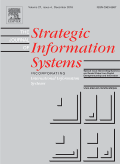
Jalali, Mohammad S.; Siegel, Michael; Madnick, Stuart
Decision-Making and Biases in Cybersecurity Capability Development: Evidence from a Simulation Game Experiment Journal Article
In: Journal of Strategic Information Systems, 2018.
Abstract | Links | BibTeX | Tags: Cybersecurity, Simulation modeling
@article{631229,
title = {Decision-Making and Biases in Cybersecurity Capability Development: Evidence from a Simulation Game Experiment},
author = {Mohammad S. Jalali and Michael Siegel and Stuart Madnick},
url = {https://scholar.harvard.edu/files/jalali/files/decision-making_in_cybersecurity.pdf},
year = {2018},
date = {2018-01-01},
urldate = {2018-01-01},
journal = {Journal of Strategic Information Systems},
abstract = {We developed a simulation game to study the effectiveness of decision-makers in overcoming two complexities in building cybersecurity capabilities: potential delays in capability development; and uncertainties in predicting cyber incidents. Analyzing 1479 simulation runs, we compared the performances of a group of experienced professionals with those of an inexperienced control group. Experienced subjects did not understand the mechanisms of delays any better than inexperienced subjects; however, experienced subjects were better able to learn the need for proactive decision-making through an iterative process. Both groups exhibited similar errors when dealing with the uncertainty of cyber incidents. Our findings highlight the importance of training for decision-makers with a focus on systems thinking skills, and lay the groundwork for future research on uncovering mental biases about the complexities of cybersecurity.},
keywords = {Cybersecurity, Simulation modeling},
pubstate = {published},
tppubtype = {article}
}

Jalali, Mohammad S.; Kaiser, Jessica P
Cybersecurity in Hospitals: a Systematic, Organizational Perspective Journal Article
In: Journal of Medical Internet Research, vol. 20, no. 5, pp. e10059, 2018.
Abstract | Links | BibTeX | Tags: Cybersecurity, Participatory modeling
@article{631227,
title = {Cybersecurity in Hospitals: a Systematic, Organizational Perspective},
author = {Mohammad S. Jalali and Jessica P Kaiser},
url = {https://scholar.harvard.edu/files/jalali/files/cybersecurity_in_hospitals.pdf},
year = {2018},
date = {2018-01-01},
urldate = {2018-01-01},
journal = {Journal of Medical Internet Research},
volume = {20},
number = {5},
pages = {e10059},
abstract = {Background: Cybersecurity incidents are a growing threat to the health care industry in general and hospitals in particular. The health care industry has lagged behind other industries in protecting its main stakeholder (ie, patients), and now hospitals must invest considerable capital and effort in protecting their systems. However, this is easier said than done because hospitals are extraordinarily technology-saturated, complex organizations with high end point complexity, internal politics, and regulatory pressures.Objective: The purpose of this study was to develop a systematic and organizational perspective for studying (1) the dynamics of cybersecurity capability development at hospitals and (2) how these internal organizational dynamics interact to form a system of hospital cybersecurity in the United States.Methods: We conducted interviews with hospital chief information officers, chief information security officers, and health care cybersecurity experts; analyzed the interview data; and developed a system dynamics model that unravels the mechanisms by which hospitals build cybersecurity capabilities. We then use simulation analysis to examine how changes to variables within the model affect the likelihood of cyberattacks across both individual hospitals and a system of hospitals.Results: We discuss several key mechanisms that hospitals use to reduce the likelihood of cybercriminal activity. The variable that most influences the risk of cyberattack in a hospital is end point complexity, followed by internal stakeholder alignment. Although resource availability is important in fueling efforts to close cybersecurity capability gaps, low levels of resources could be compensated for by setting a high target level of cybersecurity.Conclusions: To enhance cybersecurity capabilities at hospitals, the main focus of chief information officers and chief information security officers should be on reducing end point complexity and improving internal stakeholder alignment. These strategies can solve cybersecurity problems more effectively than blindly pursuing more resources. On a macro level, the cyber vulnerability of a countrytextquoterights hospital infrastructure is affected by the vulnerabilities of all individual hospitals. In this large system, reducing variation in resource availability makes the whole system less vulnerable—a few hospitals with low resources for cybersecurity threaten the entire infrastructure of health care. In other words, hospitals need to move forward together to make the industry less attractive to cybercriminals. Moreover, although compliance is essential, it does not equal security. Hospitals should set their target level of cybersecurity beyond the requirements of current regulations and policies. As of today, policies mostly address data privacy, not data security. Thus, policy makers need to introduce policies that not only raise the target level of cybersecurity capabilities but also reduce the variability in resource availability across the entire health care system.},
keywords = {Cybersecurity, Participatory modeling},
pubstate = {published},
tppubtype = {article}
}
2017

Madnick, Stuart; Jalali, Mohammad S.; Siegel, Michael; Lee, Yang; Strong, Diane; Wang, Richard; Ang, Wee Horng; Deng, Vicki; Mistree, Dinsha
Measuring Stakeholders' Perceptions of Cybersecurity for Renewable Energy Systems Proceedings
Springer Springer, 2017.
BibTeX | Tags: Cybersecurity
@proceedings{631220,
title = {Measuring Stakeholders' Perceptions of Cybersecurity for Renewable Energy Systems},
author = {Stuart Madnick and Mohammad S. Jalali and Michael Siegel and Yang Lee and Diane Strong and Richard Wang and Wee Horng Ang and Vicki Deng and Dinsha Mistree},
year = {2017},
date = {2017-01-01},
urldate = {2017-01-01},
booktitle = {Lecture Notes in Artificial Intelligence 10097},
pages = {67–77},
publisher = {Springer},
organization = {Springer},
keywords = {Cybersecurity},
pubstate = {published},
tppubtype = {proceedings}
}

Rad, Armin A; Jalali, Mohammad S.; Rahmandad, Hazhir
How Exposure to Different Opinions Impacts the Life Cycle of Social Media Journal Article
In: Annals of Operations Research, vol. 268, pp. 63–91, 2017.
Abstract | Links | BibTeX | Tags:
@article{631221,
title = {How Exposure to Different Opinions Impacts the Life Cycle of Social Media},
author = {Armin A Rad and Mohammad S. Jalali and Hazhir Rahmandad},
url = {https://scholar.harvard.edu/files/jalali/files/exposure_to_different_opinions.pdf},
year = {2017},
date = {2017-01-01},
urldate = {2017-01-01},
journal = {Annals of Operations Research},
volume = {268},
pages = {63–91},
abstract = {As a lot of communication and media consumption moves online, people may be exposed to a wider population and more diverse opinions. However, individuals may act differently when faced with opinions far removed from their own. Moreover, changes in the frequency of visits, posting, and other forms of expression could lead to narrowing of the opinions that each person observes, as well as changes in the customer base for online platforms. Despite increasing research on the rise and fall of online social media outlets, user activity in response to exposure to otherstextquoteright opinions has received little attention. In this study, we first introduce a method that maps opinions of individuals and their generated content on a multi-dimensional space by factorizing an individual–object interaction (e.g., user-news rating) matrix. Using data on 6151 users interacting with 287,327 pieces of content over 21 months on a social media platform we estimate changes in individualstextquoteright activities in response to interaction with content expressing a variety of opinions. We find that individuals increase their online activities when interacting with content close to their own opinions, and interacting with extreme opinions may decrease their activities. Finally, developing an agent-based simulation model, we study the effect of the estimated mechanisms on the future success of a simulated platform.},
keywords = {},
pubstate = {published},
tppubtype = {article}
}

Rahmandad, Hazhir; Jalali, Mohammad S.; Paynabar, Kamran
A Flexible Method for Aggregation of Prior Statistical Findings Journal Article
In: PLOS ONE, vol. 12, pp. e0175111, 2017, (More info about GMA).
Abstract | Links | BibTeX | Tags: Methods
@article{631222,
title = {A Flexible Method for Aggregation of Prior Statistical Findings},
author = {Hazhir Rahmandad and Mohammad S. Jalali and Kamran Paynabar},
url = {https://mj-lab.mgh.harvard.edu/wordpress/research/},
year = {2017},
date = {2017-01-01},
urldate = {2017-01-01},
journal = {PLOS ONE},
volume = {12},
pages = {e0175111},
abstract = {Rapid growth in scientific output requires methods for quantitative synthesis of prior research, yet current meta-analysis methods limit aggregation to studies with similar designs. Here we describe and validate Generalized Model Aggregation (GMA), which allows researchers to combine prior estimated models of a phenomenon into a quantitative meta-model, while imposing few restrictions on the structure of prior models or on the meta-model. In an empirical validation, building on 27 published equations from 16 studies, GMA provides a predictive equation for Basal Metabolic Rate that outperforms existing models, identifies novel nonlinearities, and estimates biases in various measurement methods. Additional numerical examples demonstrate the ability of GMA to obtain unbiased estimates from potentially mis-specified prior studies. Thus, in various domains, GMA can leverage previous findings to compare alternative theories, advance new models, and assess the reliability of prior studies, extending meta-analysis toolbox to many new problems.},
note = {More info about GMA},
keywords = {Methods},
pubstate = {published},
tppubtype = {article}
}

Songhori, Mohsen Jafari; Jalali, Mohammad S.; Terano, Takao
The Effects of Teams' Initial Characterizations of Interactions on Product Development Performance Proceedings
IEEE, 2017.
BibTeX | Tags:
@proceedings{631217,
title = {The Effects of Teams' Initial Characterizations of Interactions on Product Development Performance},
author = {Mohsen Jafari Songhori and Mohammad S. Jalali and Takao Terano},
year = {2017},
date = {2017-01-01},
urldate = {2017-01-01},
journal = {Winter Simulation Conference},
publisher = {IEEE},
keywords = {},
pubstate = {published},
tppubtype = {proceedings}
}

Jalali, Mohammad S.; Rahmandad, Hazhir; Bullock, Sally Lawrence; Ammerman, Alice
Dynamics of Implementation and Maintenance of Organizational Health Interventions Journal Article
In: Int. J. Environ. Res. Public Health, vol. 14, pp. 917, 2017.
Abstract | Links | BibTeX | Tags: Obesity, Participatory modeling
@article{631219,
title = {Dynamics of Implementation and Maintenance of Organizational Health Interventions},
author = {Mohammad S. Jalali and Hazhir Rahmandad and Sally Lawrence Bullock and Alice Ammerman},
url = {https://scholar.harvard.edu/files/jalali/files/dynamics_of_implementation.pdf},
year = {2017},
date = {2017-01-01},
urldate = {2017-01-01},
journal = {Int. J. Environ. Res. Public Health},
volume = {14},
pages = {917},
abstract = {In this study, we present case studies to explore the dynamics of implementation and maintenance of health interventions. We analyze how specific interventions are built and eroded, how the building and erosion mechanisms are interconnected, and why we can see significantly different erosion rates across otherwise similar organizations. We use multiple comparative obesity prevention case studies to provide empirical information on the mechanisms of interest, and use qualitative systems modeling to integrate our evolving understanding into an internally consistent and transparent theory of the phenomenon. Our preliminary results identify reinforcing feedback mechanisms, including design of organizational processes, motivation of stakeholders, and communication among stakeholders, which influence implementation and maintenance of intervention components. Over time, these feedback mechanisms may drive a wedge between otherwise similar organizations, leading to distinct configurations of implementation and maintenance processes. },
keywords = {Obesity, Participatory modeling},
pubstate = {published},
tppubtype = {article}
}
2016

Jalali, Mohammad S.; Sharafi-Avarzaman, Zahra; Rahmandad, Hazhir; Ammerman, Alice
Social influence in childhood obesity interventions: a systematic review Journal Article
In: Obesity Reviews, vol. 17, pp. 820-832, 2016.
Abstract | Links | BibTeX | Tags: Obesity
@article{631216,
title = {Social influence in childhood obesity interventions: a systematic review},
author = {Mohammad S. Jalali and Zahra Sharafi-Avarzaman and Hazhir Rahmandad and Alice Ammerman},
url = {https://scholar.harvard.edu/files/jalali/files/social_influence_in_childhood_obesity_interventions.pdf},
year = {2016},
date = {2016-01-01},
urldate = {2016-01-01},
journal = {Obesity Reviews},
volume = {17},
pages = {820-832},
abstract = {The objective of this study is to understand the pathways through which social influence at the family level moderates the impact of childhood obesity interventions. We conducted a systematic review of obesity interventions in which parentstextquoteright behaviours are targeted to change childrentextquoterights obesity outcomes, because of the potential social and environmental influence of parents on the nutrition and physical activity behaviours of children. PubMed (1966-2013) and the Web of Science (1900-2013) were searched, and 32 studies satisfied our inclusion criteria. Results for existing mechanisms that moderate parentstextquoteright influence on childrentextquoterights behaviour are discussed, and a causal pathway diagram is developed to map out social influence mechanisms that affect childhood obesity. We provide health professionals and researchers with recommendations for leveraging family-based social influence mechanisms to increase the efficacy of obesity intervention programmes.},
keywords = {Obesity},
pubstate = {published},
tppubtype = {article}
}
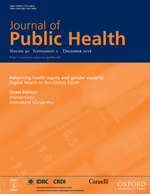
Hashmi, Sahar; D'Ambrosio, Lisa; Diamond, David V; Jalali, Mohammad S.; Finkelstein, Stan N; Larson, Richard C
Preventive behaviors and perceptions of influenza vaccination among a university student population Journal Article
In: Journal of Public Health, vol. 38, no. 4, pp. 739–745, 2016.
Abstract | Links | BibTeX | Tags: Infectious diseases
@article{631214,
title = {Preventive behaviors and perceptions of influenza vaccination among a university student population},
author = {Sahar Hashmi and Lisa D'Ambrosio and David V Diamond and Mohammad S. Jalali and Stan N Finkelstein and Richard C Larson},
url = {https://scholar.harvard.edu/files/jalali/files/preventive_behaviors_and_perceptions_of_vaccination.pdf},
year = {2016},
date = {2016-01-01},
urldate = {2016-01-01},
journal = {Journal of Public Health},
volume = {38},
number = {4},
pages = {739–745},
abstract = {Background: Every year during influenza season, preventable illnesses occur due to lack of vaccination and failure to adopt the preventive behaviors known as non-pharmaceutical interventions (NPIs). In an effort to study the impact of preventive strategies and policies on behavioral changes during the spread of the H1N1 pandemic in 2009, we examined a sample of undergraduate, graduate and business students at the Massachusetts Institute of Technology (MIT).Methods: An online survey was completed by 653 students to assess NPI use, perceptions of influenza vaccinations and effectiveness of preventive health policy strategies during the 2009 H1N1 outbreak. Strategies included e-mails and text messages, posters in corridors and restrooms, and videos. These strategies were implemented during both the first and second waves of the 2009 H1N1 pandemic.Results: Despite the widespread campaign, fewer than half of the respondents reported modifying their behaviors. We discovered that >70% of the respondents did not practice any NPIs, and more than half showed lack of knowledge of flu vaccinations.Conclusions: Our study results indicate a need for more effective strategies to encourage NPI practices in student populations during outbreaks of infection.},
keywords = {Infectious diseases},
pubstate = {published},
tppubtype = {article}
}

Hosseinichimeh, Niyousha; Rahmandad, Hazhir; Jalali, Mohammad S.; Wittenborn, Andrea K
Estimating the parameters of system dynamics models using indirect inference Journal Article
In: System Dynamics Review, vol. 32, pp. 156-180, 2016, ISBN: 0883-7066.
Abstract | Links | BibTeX | Tags: Simulation modeling
@article{631215,
title = {Estimating the parameters of system dynamics models using indirect inference},
author = {Niyousha Hosseinichimeh and Hazhir Rahmandad and Mohammad S. Jalali and Andrea K Wittenborn},
url = {https://scholar.harvard.edu/files/jalali/files/parameter_estimation_using_indirect_inference.pdf},
isbn = {0883-7066},
year = {2016},
date = {2016-01-01},
urldate = {2016-01-01},
journal = {System Dynamics Review},
volume = {32},
pages = {156-180},
abstract = {There is limited methodological guidance for estimating system dynamics (SD) models using datasets common to social sciences that include few data points over time for many units under analysis. Here, we introduce indirect inference, a simulation-based estimation method that can be applied to common datasets and is applicable to SD models that often include intractable likelihood functions. In this method, the model parameters are found by ensuring that simulated data from the model and available empirical data produce similar auxiliary statistics. The method requires few assumptions about the structure of the model and error-generating processes and thus can be used in a variety of applications. We demonstrate the method in estimating an SD model of depression and rumination using a panel dataset. The overall results suggest that indirect inference can extend the application of SD models to new topics and leverage common panel datasets to provide unique insights.},
keywords = {Simulation modeling},
pubstate = {published},
tppubtype = {article}
}

Ghaffarzadegan, Navid; Ebrahimvandi, Alireza; Jalali, Mohammad S.
A Dynamic Model of Post-Traumatic Stress Disorder for Military Personnel and Veterans Journal Article
In: PLOS ONE, vol. 11, pp. e0161405, 2016.
Abstract | Links | BibTeX | Tags: Mental health, Simulation modeling
@article{631213,
title = {A Dynamic Model of Post-Traumatic Stress Disorder for Military Personnel and Veterans},
author = {Navid Ghaffarzadegan and Alireza Ebrahimvandi and Mohammad S. Jalali},
url = {https://scholar.harvard.edu/files/jalali/files/a_dynamic_model_for_ptsd.pdf},
year = {2016},
date = {2016-01-01},
urldate = {2016-01-01},
journal = {PLOS ONE},
volume = {11},
pages = {e0161405},
abstract = {Post-traumatic stress disorder (PTSD) stands out as a major mental illness; however, little is known about effective policies for mitigating the problem. The importance and complexity of PTSD raise critical questions: What are the trends in the population of PTSD patients among military personnel and veterans in the postwar era? What policies can help mitigate PTSD? To address these questions, we developed a system dynamics simulation model of the population of military personnel and veterans affected by PTSD. The model includes both military personnel and veterans in a textquotedblleftsystem of systems.textquotedblright This is a novel aspect of our model, since many policies implemented at the military level will potentially influence (and may have side effects on) veterans and the Department of Veterans Affairs. The model is first validated by replicating the historical data on PTSD prevalence among military personnel and veterans from 2000 to 2014 (datasets from the Department of Defense, the Institute of Medicine, the Department of Veterans Affairs, and other sources). The model is then used for health policy analysis. Our results show that, in an optimistic scenario based on the status quo of deployment to intense/combat zones, estimated PTSD prevalence among veterans will be at least 10% during the next decade. The model postulates that during wars, resiliency-related policies are the most effective for decreasing PTSD. In a postwar period, current health policy interventions (e.g., screening and treatment) have marginal effects on mitigating the problem of PTSD, that is, the current screening and treatment policies must be revolutionized to have any noticeable effect. Furthermore, the simulation results show that it takes a long time, on the order of 40 years, to mitigate the psychiatric consequences of a war. Policy and financial implications of the findings are discussed.},
keywords = {Mental health, Simulation modeling},
pubstate = {published},
tppubtype = {article}
}
2015

Jalali, Mohammad S.; Rahmandad, Hazhir; Ghoddusi, Hamed
Using the method of simulated moments for system identification Book Chapter
In: pp. 39-69, 2015.
Links | BibTeX | Tags: Methods
@inbook{631211,
title = {Using the method of simulated moments for system identification},
author = {Mohammad S. Jalali and Hazhir Rahmandad and Hamed Ghoddusi},
url = {https://scholar.harvard.edu/files/jalali/files/msm_book_chapter.pdf
https://mj-lab.mgh.harvard.edu/wp-content/uploads/2024/06/Online_Appendix_Files.zip},
year = {2015},
date = {2015-01-01},
urldate = {2015-01-01},
journal = {Analytical Methods for Dynamic Modelers},
pages = {39-69},
keywords = {Methods},
pubstate = {published},
tppubtype = {inbook}
}
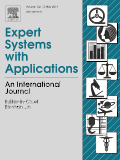
Jalali, Mohammad S.; Ashouri, Armin; Herrera-Restrepo, Oscar; Zhang, Hui
Information diffusion through social networks: The case of an online petition Journal Article
In: Expert Systems with Applications, vol. 44, pp. 187–197, 2015.
Abstract | Links | BibTeX | Tags: Adoption dynamics
@article{631210,
title = {Information diffusion through social networks: The case of an online petition},
author = {Mohammad S. Jalali and Armin Ashouri and Oscar Herrera-Restrepo and Hui Zhang},
url = {https://scholar.harvard.edu/files/jalali/files/information_diffusion.pdf},
year = {2015},
date = {2015-01-01},
urldate = {2015-01-01},
journal = {Expert Systems with Applications},
volume = {44},
pages = {187–197},
abstract = {People regularly use online social networks due to their convenience, efficiency, and significant broadcasting power for sharing information. However, the diffusion of information in online social networks is a complex and dynamic process. In this research, we used a case study to examine the diffusion process of an online petition. The spread of petitions in social networks raises various theoretical and practical questions: What is the diffusion rate? What actions can initiators take to speed up the diffusion rate? How does the behavior of sharing between friends influence the diffusion process? How does the number of signatures change over time? In order to address these questions, we used system dynamics modeling to specify and quantify the core mechanisms of petition diffusion online; based on empirical data, we then estimated the resulting dynamic model. The modeling approach provides potential practical insights for those interested in designing petitions and collecting signatures. Model testing and calibration approaches (including the use of empirical methods such as maximum-likelihood estimation, the Akaike information criterion, and likelihood ratio tests) provide additional potential practices for dynamic modelers. Our analysis provides information on the relative strength of push (i.e., sending announcements) and pull (i.e., sharing by signatories) processes and insights about awareness, interest, sharing, reminders, and forgetting mechanisms. Comparing push and pull processes, we found that diffusion is largely a pull process rather than a push process. Moreover, comparing different scenarios, we found that targeting the right population is a potential driver in spreading information (i.e., getting more signatures), such that small investments in targeting the appropriate people have textquoteleftdisproportionatetextquoteright effects in increasing the total number of signatures. The model is fully documented for further development and replications.},
keywords = {Adoption dynamics},
pubstate = {published},
tppubtype = {article}
}
2014
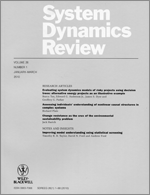
Abdel-Hamid, Tarek; Ankel, Felix; Battle-Fisher, Michele; Gibson, Bryan; Gonzalez-Parra, Gilberto; Jalali, Mohammad S.; Kaipainen, Kirsikka; Kalupahana, Nishan; Karanfil, Ozge; Marathe, Achla
Public and health-professionals' misconceptions about the dynamics of body weight gain/loss Journal Article
In: System Dynamics Review, vol. 30, no. 1-2, pp. 58–74, 2014.
Abstract | Links | BibTeX | Tags: Obesity
@article{631207,
title = {Public and health-professionals' misconceptions about the dynamics of body weight gain/loss},
author = {Tarek Abdel-Hamid and Felix Ankel and Michele Battle-Fisher and Bryan Gibson and Gilberto Gonzalez-Parra and Mohammad S. Jalali and Kirsikka Kaipainen and Nishan Kalupahana and Ozge Karanfil and Achla Marathe},
url = {https://scholar.harvard.edu/files/jalali/files/misconceptions_about_obesity.pdf},
year = {2014},
date = {2014-01-01},
urldate = {2014-01-01},
journal = {System Dynamics Review},
volume = {30},
number = {1-2},
pages = {58–74},
abstract = {Human body energy storage operates as a stock-and-flow system with inflow (food intake) and outflow (energy expenditure). In spite of the ubiquity of stock-and-flow structures, evidence suggests that human beings fail to understand stock accumulation and rates of change, a difficulty called the stock–flow failure. This study examines the influence of health care training and cultural background in overcoming stock–flow failure. A standardized protocol assessed lay peopletextquoterights and health care professionalstextquoteright ability to apply stock-and-flow reasoning to infer the dynamics of weight gain/loss during the holiday season (621 subjects from seven countries). Our results indicate that both types of subjects exhibited systematic errors indicative of use of erroneous heuristics. Indeed 76% of lay subjects and 71% of health care professionals failed to understand the simple dynamic impact of energy intake and energy expenditure on body weight. Stock–flow failure was found across cultures and was not improved by professional health training. The problem of stock–flow failure as a transcultural global issue with education and policy implications is discussed. },
keywords = {Obesity},
pubstate = {published},
tppubtype = {article}
}
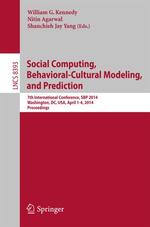
Jalali, Mohammad S.
How individuals weigh their previous estimates to make a new estimate in the presence or absence of social influence Book Chapter
In: pp. 67-74, Springer, Cham, 2014.
Abstract | Links | BibTeX | Tags:
@inbook{631209,
title = {How individuals weigh their previous estimates to make a new estimate in the presence or absence of social influence},
author = {Mohammad S. Jalali},
url = {https://scholar.harvard.edu/files/jalali/files/social_influence_on_making_estimations.pdf},
year = {2014},
date = {2014-01-01},
urldate = {2014-01-01},
journal = {International Conference on Social Computing, Behavioral-Cultural Modeling, and Prediction},
pages = {67-74},
publisher = {Springer, Cham},
abstract = {Individuals make decisions every day. How they come up with estimates to guide their decisions could be a result of a combination of different information sources such as individual beliefs and previous knowledge, random guesses, and social cues. This study aims to sort out individual estimate assessments over multiple times with the main focus on how individuals weigh their own beliefs vs. those of others in forming their future estimates. Using dynamics modeling, we build on data from an experiment conducted by Lorenz et al. [1] where 144 subjects made five estimates for six factual questions in an isolated manner (no interaction allowed between subjects). We model the dynamic mechanisms of changing estimates for two different scenarios: 1) when individuals are not exposed to any information and 2) when they are under social influence.},
keywords = {},
pubstate = {published},
tppubtype = {inbook}
}

Jalali, Mohammad S.; Rahmandad, Hazhir; Bullock, Sally Lawrence; Ammerman, Alice
Dynamics of Obesity Interventions inside Organizations Proceedings
System Dynamics Society, 2014.
BibTeX | Tags: Obesity, Participatory modeling, Simulation modeling
@proceedings{631208,
title = {Dynamics of Obesity Interventions inside Organizations},
author = {Mohammad S. Jalali and Hazhir Rahmandad and Sally Lawrence Bullock and Alice Ammerman},
year = {2014},
date = {2014-01-01},
urldate = {2014-01-01},
journal = {The 32nd International Conference of the System Dynamics Society},
pages = {69},
publisher = {System Dynamics Society},
keywords = {Obesity, Participatory modeling, Simulation modeling},
pubstate = {published},
tppubtype = {proceedings}
}

